

Dairy cows rocket to $3000 a head

ALACK of supply, favourable market conditions and a spate of planned South Island dairy conversions have caused dairy cow prices to skyrocket across the country.
Prices for dairy cows had been largely static over the past few years, sitting at around $1800-$2000 a head, with some occasionally making slightly more.
Now, prices for good adult cows on contract are averaging $3000 with some $3500 and over. In-calf heifer prices have also jumped and are around $2500.
He initially thought the lift in prices was some “early season fever” among buyers, but the higher prices seem to have stayed.
Whale oversees the herd purchase contracts on livestock sales for PGG Wrightson, with cows from these completed sales delivered to the farm on June 1 next year.
When a herd is sold by a contract, around 80% of those cows qualify for the full contract price, he said.
Whale could not comment on the genetic merits of the cows but did say that many of these contracts included a negative test for Johne’s disease.
Whether these prices are the new normal is difficult to say.
Milk price futures have indicated a softening in the dairy market, which could see the milk price drop below $10/kg milk solids next season.
“It will be really interesting to see what cow pricing does with that,” Whale said.
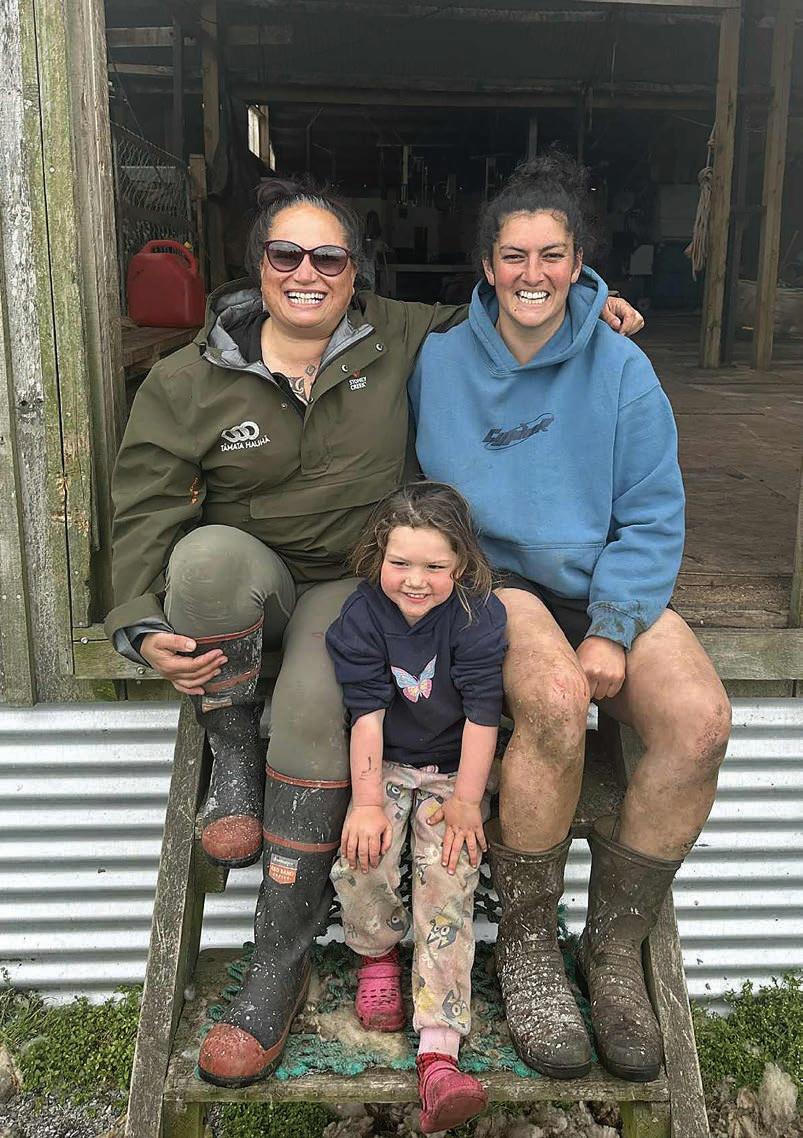
Wool training heads to the Chathams
Wool training will soon reach one of New Zealand’s most remote communities, the Chatham Islands, giving locals a chance to step into the wool harvesting sector. Chatham Islander Tommi Gregory-Hunt, right, will lead an Agricademy training programme, run in partnership with Hokotehi Moriori Trust, Tāmata Hauhā and the Ministry for Primary Industries. Also pictured are Tāmata Hauhā general manager Cherie Tirikatene and Mikayla Mahony.
PGG Wrightson technical manager for livestock Rod Whale said there has been a 50% increase in prices nationwide.
He started noticing a shortage of cows being put up for sale towards the end of last season. That, combined, with the high milk price and planned conversions taking place in the South Island, seems to have fuelled the market.
The high prices increase the challenge facing younger farmers looking to buy cows as they progress up the farm ownership ladder.
“At $3000 for cows and $2500 for heifers, the pot of gold you have to start with is a lot bigger.”
NZ Farmers Livestock general manager Bill Sweeney said it is never just one thing that changes cow prices, but “the stars have

chores
Robots maybe doing some of the mundane work on Thijs Neutel’s Groningen dairy farm in the Netherlands, but he still has plenty to do.


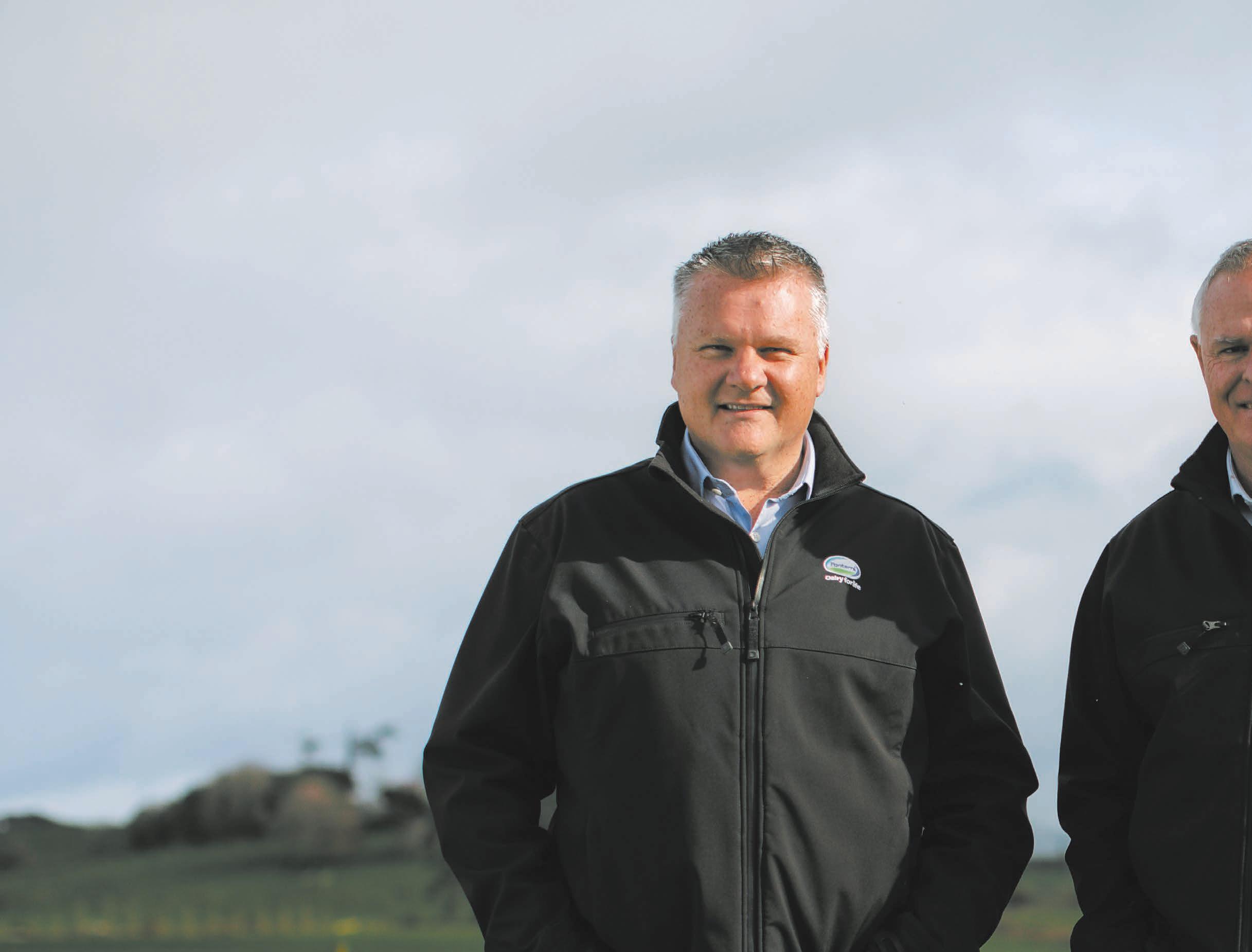









Get in touch
EDITORIAL
Bryan Gibson | 06 323 1519
Managing Editor bryan.gibson@agrihq.co.nz
Craig Page | 03 470 2469 Deputy Editor craig.page@agrihq.co.nz
Claire Robertson
Sub-Editor claire.robertson@agrihq.co.nz
Neal Wallace | 03 474 9240
Journalist neal.wallace@agrihq.co.nz
Gerald Piddock | 027 486 8346
Journalist gerald.piddock@agrihq.co.nz
Annette Scott | 021 908 400 Journalist annette.scott@agrihq.co.nz
Hugh Stringleman | 027 474 4003
Journalist hugh.stringleman@agrihq.co.nz
Richard Rennie | 027 475 4256
Journalist richard.rennie@agrihq.co.nz
Nigel Stirling | 021 136 5570
Journalist nigel.g.stirling@gmail.com
PRODUCTION
Lana Kieselbach | 027 739 4295 production@agrihq.co.nz
ADVERTISING MATERIAL
Supply to: adcopy@agrihq.co.nz
SUBSCRIPTIONS & DELIVERY
0800 85 25 80 subs@agrihq.co.nz
PRINTER
Printed by NZME
Delivered by Reach Media Ltd
Advertise
SALES CONTACTS
Andy Whitson | 027 626 2269
Sales & Marketing Manager andy.whitson@agrihq.co.nz
Janine Aish | 027 300 5990
Auckland/Northland Partnership Manager janine.aish@agrihq.co.nz
Jody Anderson | 027 474 6094
Waikato/Bay of Plenty Partnership Manager jody.anderson@agrihq.co.nz
Palak Arora | 027 474 6095
Lower North Island Partnership Manager palak.arora@agrihq.co.nz
Andy Whitson | 027 626 2269 South Island Partnership Manager andy.whitson@agrihq.co.nz
Julie Hill | 027 705 7181
Marketplace Partnership Manager classifieds@agrihq.co.nz
Andrea Mansfield | 027 602 4925 National Livestock Manager livestock@agrihq.co.nz
Real Estate | 0800 85 25 80 realestate@agrihq.co.nz
Word Only Advertising | 0800 85 25 80 Marketplace wordads@agrihq.co.nz
PUBLISHERS
Dean and Cushla Williamson Phone: 027 323 9407 dean.williamson@agrihq.co.nz cushla.williamson@agrihq.co.nz
Farmers Weekly is Published by AgriHQ PO Box 529, Feilding 4740, New Zealand Phone: 0800 85 25 80 Website: www.farmersweekly.co.nz
ISSN 2463-6002 (Print) ISSN 2463-6010 (Online)

EXCITING: DINZ chief executive Rhys Griffiths says a growth-oriented, value-added space in the European market is exciting for New Zealand venison.
The Global Dairy Trade price index fell on November 5 for the sixth consecutive fortnightly event, losing 2.4% when weighed down by whole milk powder prices falling 2.7%.
Cheddar fell 6.6%, butter by 4.3% and anhydrous milk fat by 1.9%. Mozzarella was up by 1.6% and buttermilk powder was up 1%. The GDT dairy market has fallen by 15.5% since mid-May as milk production increases in New Zealand, Europe, the United States and Argentina.
New Zealand Food Safety has backed down on a proposal to increase the maximum residue levels for glyphosate in certain crops after a public outcry. Glyphosate will also no longer be allowed to be applied directly onto cereal crops grown for human consumption in New Zealand. In March New Zealand Food Safety proposed to increase the maximum residue levels for glyphosate in some grains and peas.
News in brief GDT down Proposal canned Nominations open
Nominations for the Dairy Women’s Network’s 2026 Fonterra Dairy Woman of the Year Award have opened.
The award recognises women who are making a difference on their farms, in their businesses, or in their communities, and are also inspiring others to lead, connect and contribute to a better future for the dairy sector.
New partnership
Massey University and Northland Inc regional development unit have signed a heads of agreement for a partnership covering education, research and innovation.
The agreement is called Waka Hourua and draws on the symbolism of a double-hulled voyaging canoe. It establishes a platform for collaboration between the university, Northland Inc, iwi, local schools and industry.
WARM IN WINTER COOL IN SUMMER






SAPI backed last-ditch bid for Alliance

AMAJOR European rendering company
is understood to have been one of the two mystery backers of a last-ditch attempt by a group of Alliance shareholders to keep the meat cooperative 100% farmer owned.
The group of high-profile shareholders presented an alternative recapitalisation plan to Alliance’s board just 72 hours before the final vote last month on Irish company Dawn Meats’ $270 million offer for 65% of the co-operative.
At the time Alliance chair Mark Wynne dismissed the plan as “largely” a debt swap, saying it offered shareholders “false hope” of retaining control had Dawn’s offer been voted down by shareholders.
While the plan would have largely dealt with a December 19 deadline for the repayment of $188m of term debt, Wynne said, the co-operative would have continued to be severely indebted, most probably breeching interest cover ratios set by its banks for a second year in a row, and possibly
Continued from page 1
aligned this year” because of strong beef prices, the South Island dairy conversions and a shortage of dairy cows in the market.
“Those three things add up to one thing and that’s pretty hot money.” There were some early sales of over $3000 a head, although lately there has been some softening in the market, he said.
But if an exceptional herd is put up for sale now, he expects it would make at least $3000.
“We have sold four herds in the last 10 days, and they have ranged from $2850 to $2925. While

leaving Alliance unable to secure the estimated $250m-$280m in bank working capital required to be competitive in the local livestock market for the coming season.
By comparison, Dawn’s offer cleared the co-operative’s debt, leaving funds to re-invest. The Irish company’s United Kingdom and European market contacts was a further factor in its favour.
Farmers Weekly understands the shareholder group presented two
not elite, they are still very good herds.”
Herds with excellent genetics are also selling well.
The ban in the export of live dairy cattle has also influenced farmers not to rear surplus dairy stock.
The high prices could hold for a couple of seasons because the new conversions will take time, he said.
“On the other side of that is the payout. If the payout comes back – and it will have to come back a reasonable notch – if it comes back to $9.50/kg MS, it might soften a little bit.
“If the payout comes back to $9/ kg MS or under, then you could see a change in those values.”
“indicative offers” to the Alliance board on the Friday before the vote. A third offer was also being worked on.
It is understood one of the confirmed offers was from Italian rendering giant SAPI, which was prepared to pay cash for Alliance’s rendering operations.
The Italian company, which employs 1800 people globally and already has a presence in New Zealand though a joint venture with North Island-based Wallace
This week’s poll question:
Are soaring dairy cow prices sustainable for first-time farmers?
Corporation, would have also provided a loan to Alliance to help refinance its bank debt.
The second offer presented is understood to have come from an offshore financial institution and was for debt funding only.
Both loans would have been paid off over three years from a mix of new shareholder capital, retained earnings and asset sales, as per the letter sent by the shareholder group to Alliance’s 4300 shareholders in mid-September.
One source said the offers were short of the $188m needed to meet the December 19 deadline but were “not far off”.
Furthermore, the cash from the sell-off of Alliance’s rendering plants amounted to a “reasonable proportion” of the debt coming due in December and would have provided at least some of the equity the Alliance board was in search of.
The source understood the indicative offers included loan terms favourable to Alliance.
“There would have been a reduction in interest costs as interest rates are lower this year and [SAPI] had an interest in seeing the co-operative survive because they wanted the rendering product.”
A spokesperson for the shareholder group, Southland farmer Jeff Grant, said the lastminute nature of their campaign had worked against revealing the identity of the backers.
The Italian company would have also provided a loan to Alliance to help refinance its bank debt.
Without access to the detailed financial and operational information provided to interested parties earlier in the fundraising process, further scrutiny of the Alliance business would have been required before the two offshore parties committed to funding.
Revealing their identities would have been detrimental to their reputations should they have walked away from a deal following the completion of their due diligence.
“When you are up against the wall you have to move quickly and be careful about how you do that and that is part of the reason why we can’t disclose [the identity of the backers],” Grant said.
Neither SAPI nor a local representative responded to requests for comment.

Have your say at farmersweekly.co.nz/poll

SHORTAGE: High milk prices, dairy industry expansion and a general shortage of stock have seen a 50% lift in dairy cow prices.
Nigel Stirling NEWS Production
CASH: It is understood Italian rendering giant SAPI was prepared to pay cash for Alliance’s rendering operations.
Meat exports so far unfazed by US tariffs
and the European Union up 35% to $116m.
UNITED States President
Donald Trump’s 15% tariff on New Zealand red meat exports has not yet had a significant economic impact, according to the latest Meat Industry Association data.
New Zealand red meat exports reached $713 million during September on the back of continued strong demand.
This is a 29% increase in exports compared to the same period in 2024.
The value of overall exports for the third quarter of 2025 reached $2.27 billion, 20% higher than the same quarter in 2024.
MIA CEO Sirma Karapeeva said September is the first month when the red meat sector might have seen a material impact of the tariffs on red meat exports to the US.
“While there was a drop in beef exports to the US, that could be partly due to other market factors, as there was also a fall in beef exports to Canada.
“There was also an increase in both sheepmeat and fifth-quarter exports to the US in September.”
The drop in beef exports to North America was offset by increased demand for beef exports to north Asia and the United Kingdom, she said.
Sheepmeat export volumes increased by 14% to 17,890 tonnes compared to September 2024, with the value rising 42% to $252m.
While there was a drop in beef exports to the US, that could be partly due to other market factors.
Sirma Karapeeva Meat Industry Association
exports to the EU, with the volume up 11% to 3327t and the value up 40% to $75m.
Beef exports to the US were down 17% by volume to 6615t and 6% by value to $82m. Canada was down 24% by volume to 2429t and 5% by value to $26m.
New Zealand’s three major markets all increased in value in September, with the US up 25% to $175m, China up 26% to $131m
The volume and value of exports to China, Japan and Korea were all up from last September and there was further growth in exports to the UK, where volume was up 301% to 2074t and value up 457% to $25m. Staff reporter
This was partly due to growth in

Allied approves NZ Farmers Livestock sale
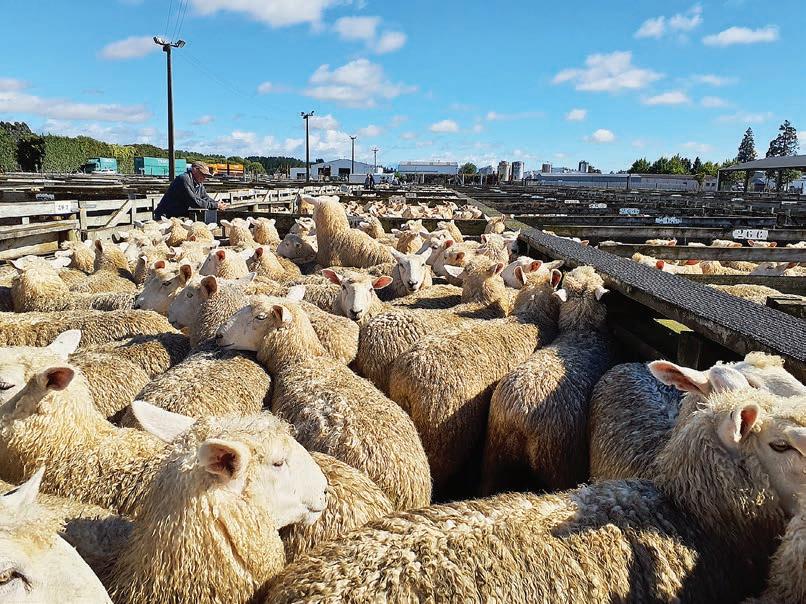
Chair

Hugh Stringleman NEWS Livestock
SHAREHOLDERS of Allied Farmers have approved the sale of subsidiary NZ Farmers Livestock to Rural Livestock.
At a virtual annual shareholders’ meeting they were told that the sale would capture peak agricultural cycle timing and that Rural Livestock is an industry player that can benefit from being a larger, more competitive livestock organisation.
Allied stands to receive $7.5 million from its 67.8% ownership of NZFL and the transaction is planned for December 1.
All existing employees of NZFL and RL will retain their jobs and remunerations.
Allied’s chair, Shelley Ruha, said the strategic benefits of 100% ownership of NZ Rural Land Management Company (NZRLM) enabled Allied to build diversification, income and capability.
“Allied can confidently exit Farmers Livestock and redeploy the sale proceeds into investment opportunities that offer a stronger and more sustainable earnings profile.
“However, if appropriate investment opportunities do not emerge, the board would not rule out the possibility of returning capital to shareholders.
“That said, this would not be our preferred course, as the tax losses mean it is in shareholders’ interests for Allied to invest in opportunities that generate taxable earnings.”
The board unanimously recommended approval of the transaction, being in the best interests of shareholders.
Allied will have $14m cash reserves and a carryover of $175m in tax losses from about a decade back.
Its shares are trading around 80c and have been unchanged for most of the past year.
It is in shareholders’ interests for Allied to invest in opportunities that generate taxable earnings.
Shelley Ruha Allied Farmers
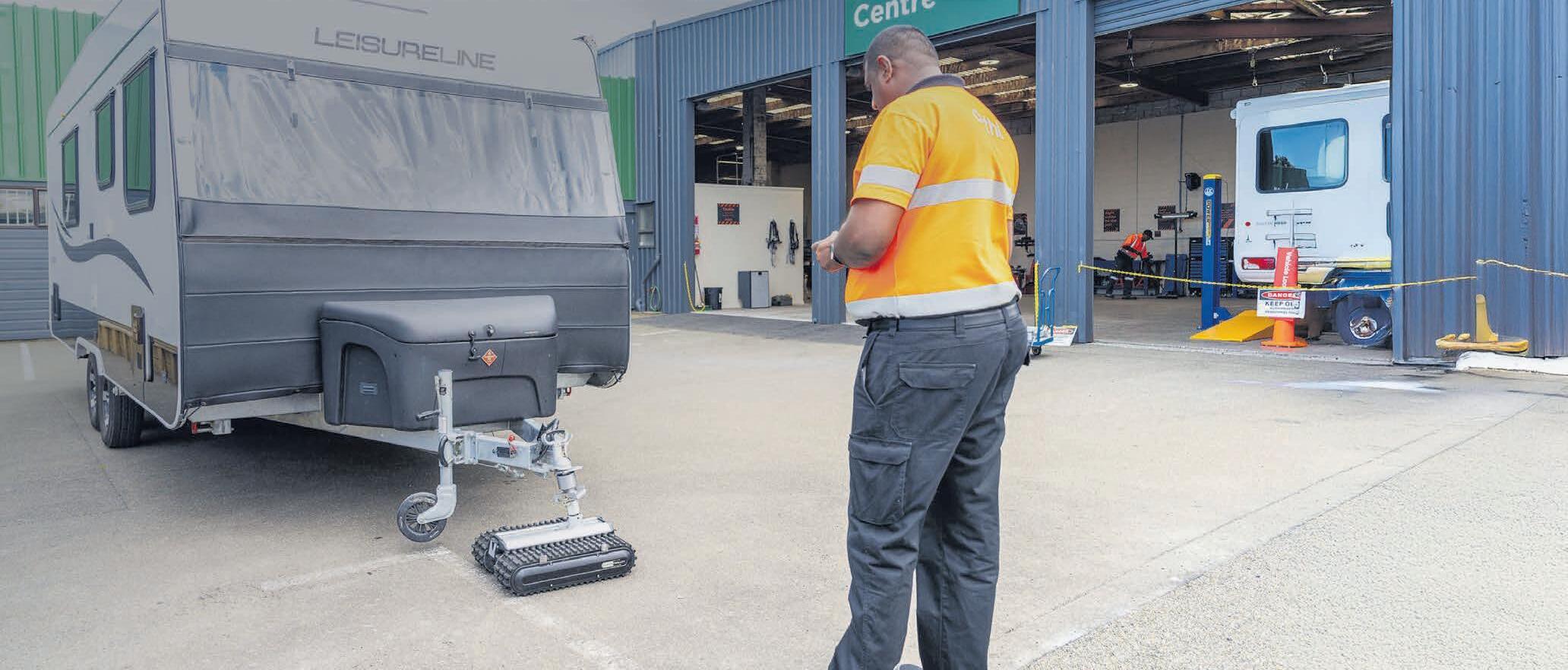
DEMAND: New Zealand red meat exports reached $713 million during September on the back of continued strong demand.
BUILDING:
Shelley Ruha says Allied can confidently exit Farmers Livestock and redeploy the sale proceeds into investment opportunities that offer a stronger and more sustainable earnings profile.
Wild spring weather puts pressure on pilots

RELENTLESSLY challenging weather is putting agricultural safety in the spotlight, with the New Zealand Agricultural Aviation Association calling on pilots and farmers to prioritise the wellbeing of staff and contractors.
Tony Michelle, executive officer for the NZAAA, said ongoing severe weather and narrow weather windows across the country are putting pressure on agriculture aviators to get the job done, and could lead to poor decision-making and safety issues.
Michelle said there were 19 incidents in the first quarter of
this year involving aeroplanes and helicopters doing ag work.
In a couple of incidents helicopters hit wires.
He said in two cases pilots were said to have been distracted, an occurrence often associated with fatigue.
There’s been a significant uptick in aerial fertiliser and ag chemical applications as farmers scramble to promote spring growth.
However, “shocking weather” across the country has put pressure on pilots.
On top of that there’s been a reduction of capacity in the industry, with fewer operators to do essential work.
Those pressures mount up, leading pilots to operate on days, or continue operating in conditions,
Make good, rational decisions, based on the conditions, not on the pressure to get work done.
Tony Michelle New Zealand Agricultural Aviation Association
that are not safe, he said.
Michelle said pressure is often self-induced, when pilots think they have to get a job done, or arise from pressure from clients, who want to get, for example, fertiliser on, for reasons that are understandable.
“We can only get to the jobs when the weather’s suitable, and when we’ve had a spring like
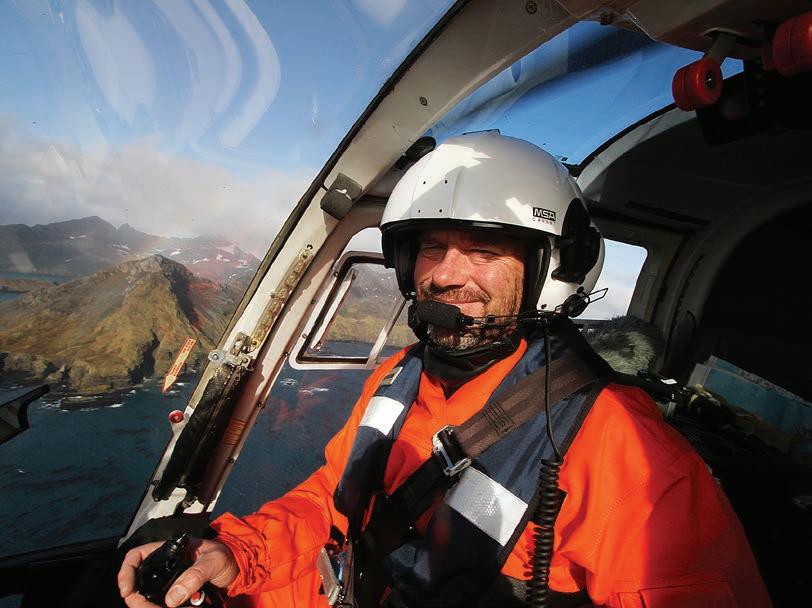
we’ve had, we don’t have enough windows for operators to get out there and service their clients.
“Don’t take those risks. If things are getting to the point where you’re going, ‘Should I be here?’,
it’s actually time to pull the pin.
“Make good, rational decisions, based on the conditions, not on the pressure to get work done.”
Safety is a problem ag aviators face internationally, he said.
New-look national wool sale hailed a success

THE first of the national trials combining nationwide wool sales has met with “solid support”.
While the offering of wool from both the North and South Islands on the same day at the Christchurch Wool Exchange appeared to favour improvement more for the north, the inaugural nationwide sale has been hailed as a success.
“The trial format was well received, and trading activity suggests solid support for future South Island-based sales,” PGG Wrightson Wool North Island appraisal and procurement coordinator Annabel Busby said.
“Overall market sentiment remained firm, and most wool types maintained strong demand, reflecting continued buyer confidence.
“However, hogget wool experienced a slight softening, following a period of exceptional highs in recent weeks.”
The North Island strong wool indicator was up 19 cents with a 90% sale clearance.
Crossbred fleece good style lifted 5% to average $4.28 a kilogram clean with average and poor style lifting 7% at $4.26/kg and $4.23/kg.
RESILIENCE: South Island auction manager Dave Burridge says the crossbred end of the market showed ‘remarkable resilience’, ending the auction in the seller’s favour. Photo: File
Crossbred second shear fleece 75-100mm lifted 2-5% to $4.30/kg for good style and averaged $4.28/ kg while shorter fleece types lifted up to 8%, selling from $3.93/kg to $4.15/kg.
For the South Island the strong wool indicator lifted just 5%, also having a 90% sale clearance.
South Island auction manager
Dave Burridge said the crossbred end of the market showed “remarkable resilience”, ending the auction in sellers’ favour.
“The fine wool market after significant and extremely rapid rises is now experiencing a rollercoaster ride, with buyers now hesitating to show all the signs of the market becoming unstable in this sector,” Burridge said.
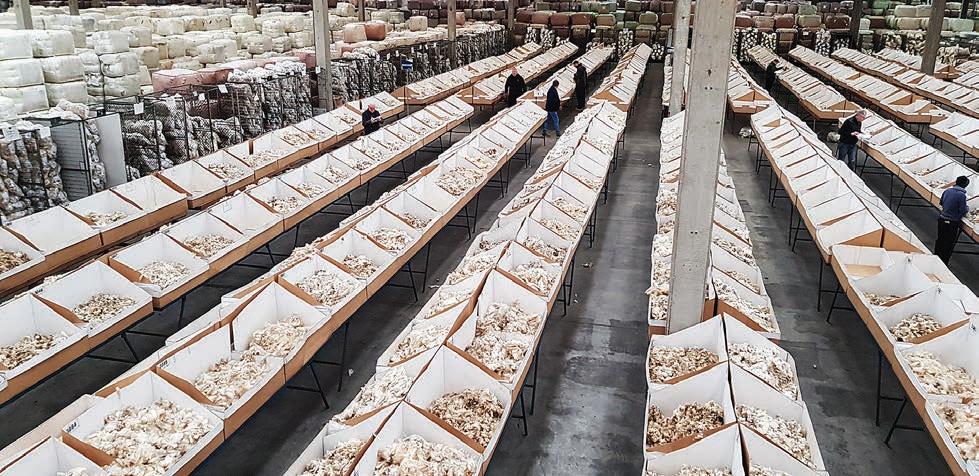
Good style crossbred fleece lifted 2% to average $4.67/kg clean with average and inferior style having no change from the previous South Island sale, selling at $4.50/kg and $4.30/kg while crossbred second shear also sold on a par with the previous sale at $4.24/kg for good style and $4.05/ kg for average.
In the fine wool Merino fleece best top-making all sectors took a downward dive with 16-micron down 11% at an average $23.40; 17-micron down 6% at $23.00/kg; 18-micron down 5% at $21.50/kg and 19-micron down 7% at $19.40/ kg.
Mid micron halfbred fleece average prices had 28-micron down 2% at $8.20/kg; halfbred hogget fleece 23-micron down 4% at $14.20/kg and halfbred fleece 25-micron down 12% at $10.70/kg. The next nationwide sale will be held at the Christchurch wool exchange on November 12.












Annette Scott NEWS Food and fibre
Gerhard Uys NEWS Safety
PRESSURE: Tony Michelle, executive officer for the New Zealand Agricultural Aviation Association, says ongoing severe weather across the country is putting pressure on ag aviators.
Beyond the Farm Gate: Diversi cation or Expansion for NZ Farmers?
A generational shift is occurring which could see over $150 billion in rural assets change hands, making the question of how best to invest farm capital more valuable than ever. Succession, risk management, and business resilience are top-of-mind for some of New Zealand’s farming families.
As we know, farming is a cyclical business. At present, we have the bene t of a low exchange rate, reasonable commodity prices, falling interest rates and farm values which are probably trending up, all of which is good. But farming families with foresight are looking through these good times and planning for the long term.
circumstances, and appetite for change. Below, we compare the two approaches, drawing on sector commentary, research, and specialist practical experience.
Diversi cation via O
-Farm Investment
O -farm investment
diversi cation means allocating capital into assets beyond the farm gate. This could include
O -farm investments may also help with succession planning, allowing liquid assets to be more easily split among family members or their income used to support Mum and Dad’s retirement independently from the farm business. Certain investment structures may o er tax e ciencies which are complimentary to taxable farm income.
Investing outside the farm gives access to growth sectors like
Another challenge is exposure to market volatility, including risks from share market downturns and uctuations in property cycles. O -farm investments may also yield lower returns than the potential long-term capital appreciation seen with prime farm property in strong years. There is also a degree of emotional detachment, compared to that of the family farm(s).
management, simpli es decisions, and supports technology adoption. If the farming business grows large enough this can, of itself, provide for family succession.
However, challenges arise when concentrating risk, as income and asset values become dependent upon the risks applying to a single commodity or sector, from market uctuations, climate change, or disease. Liquidity presents another issue, with land periodically being di cult to sell or divide. The complexity of succession is heightened if heirs lack either the interest or the capability to take over the family business. Capital demands may be considerable, requiring substantial initial investment as well as ongoing debt servicing.

With more than half of all farm and orchard owners to reach retirement age in the next decade, according to the Rabobank’s 2025 white paper, Changing of the Guard –Stepping up the Succession Conversation in New Zealand Farming, it makes sense that now is the time to plan and prepare. Traditionally, many farmers have chosen to expand their businesses during good times by buying more land. This approach o ers scale, operational control, and a sense of legacy. However, investment considerations are changing, some farmers are contemplating diversi cation through o -farm investments, allocating capital into assets outside the core farm business, such as equities or land-based investments. So, this raises the question, where to from here?
The right answer will depend on your goals, risk tolerance, family
Is their future outside the farm gate?
Factor O -Farm Investment Diversi cation
Risk
Liquidity
Succession
Management
Returns
Tax
Emotional Value
Resilience
Capital Requirement
kiwifruit, solar, forestry, rural commercial property (the o ers that MyFarm have available), or more broadly, managed funds, or equities. The aim is to create income streams that are less correlated with farm returns, reduce exposure to commodity cycles, and provide cash and assets (and liquidity) for succession and retirement.
If in the right structure, these assets can provide better liquidity than farms, making cash more accessible for emergencies or new opportunities.
Spread (multiple sectors, less correlated)
Higher (managed funds, shares, property syndicates)
Flexible (liquid assets, easier to allocate)
Requires nancial literacy, external advice
Whether you choose to expand your farm business or diversify through o -farm investments, the key is to match your strategy to your family’s needs, risk appetite, and long-term vision. As New Zealand’s farming sector faces its largest-ever intergenerational transfer of
Expanding Farm Business (Buying Another Farm)
Concentrated (commodity, climate, sector)
Lower (land can be illiquid, slow to sell)
Complex (hard to split, may force sale)
Requires operational expertise, time, and focus
Variable, collectively often more stable and predictable Potentially high in strong years, capital appreciation, can uctuate based on point in cycle.
Passive income, potential tax advantages
Lower (less direct involvement)
More resilient to downturns in any one sector
Variable, often lower
kiwifruit, renewables, and commercial property, without the need for direct management.
On the ip side, investing o the farm can present several challenges. One is the loss of control, as there is less direct in uence over how these investments perform compared to managing your own farm. This change requires a trust in external managers or advisers to make sound decisions on your behalf.
Expanding the Farm Business
Active income, need to manage tax
High (connection to land, legacy)
Vulnerable to sector shocks
High (land purchase, debt servicing)
wealth, the question is not just how to grow, but how to secure the future.
The information contained in this article is for general information purposes only. Any reliance you place on such information is strictly at your own risk. It is not intended to constitute legal or nancial advice and does not take your individual circumstances and nancial situation into account. We encourage you to seek assistance from a trusted nancial adviser, legal or other professional advice. Comparative table: O -farm investment vs. buying another farm
This could be through buying another farm, with the extra land either complimenting the core operation ( nishing block, runo ) or expanding it. This approach is familiar, tangible, often emotionally satisfying, and does provide advantages. Larger scale can lower costs, boost bargaining strength, and improve machinery and labour e ciency. Focusing on one enterprise sharpens

Disclaimer:
New Nuffield scholars span ag sectors
FOUR new Nuffield scholars have been announced, representing three regions and industries including dairy, aquaculture and red meat.
The cohort will undertake a Rural Leaders-delivered programme that offers a lifechanging opportunity for travel, study of the latest agriculture innovations and an introduction to decision-makers around the world.
The new scholars are Clare Bradley, a Bay of Plenty aquaculturalist; Jared Clarke, a Canterbury farmer; Kelly Heckler, an Otago farmer; and Tracey Perkins, a Canterbury farmer. They are the 194th, 195th, 196th and 197th New Zealand scholars respectively.
“Clare, Jared, Kelly and Tracey have shown they value giving back to community and industry. They display innovative approaches to their work, and they have demonstrated a track record of meeting challenges head on. Ultimately, they are now tasked with finding those deep insights that will create lasting benefit for New Zealand food and fibre, their industries and their communities,” said Kate Scott, Rural Leaders and Nuffield NZ chair.
NEW PRODUCT
• Clare Bradley, CEO AgriSea, Bay of Plenty Bradley is based in Paeroa with her children and husband, AgriSea chief innovation officer Tane. AgriSea CEO Bradley leads a 30-strong team pioneering seaweed-based bio-stimulants, animal health supplements, and high-value hydrogels for agriculture and biotechnology.
As the founding chair of the Aotearoa New Zealand Seaweed Association, and Rere ki Uta, Rere ki tai, Bradley is driving collaboration between Western science and mātauranga Māori to build a trusted, sustainable sector. Her Nuffield research is likely to explore the economic, environmental, and logistical viability of smaller, decentralised processing hubs and whether they can create local jobs, strengthen value chains, and enhance commercial resilience.
• Jared Clarke, farmer, Canterbury Clarke is a Canterbury dairy farmer with a strong record of performance, innovation and team development. From 2017 to 2022, Clarke and his wife Victoria operated Two Rivers Ltd, a 50/50 sharemilking business milking 2000 cows. In 2022, they formed an equity partnership and purchased Mount Rivers
Ltd, a 1000-cow irrigated dairy farm supplying A2 milk to Synlait. Under their leadership, the business has delivered high returns, sustainability initiatives and strong team retention.
Clarke is interested (and passionate) about the potential for a reduced reliance on imported energy, both on-farm and at a national level, and his Nuffield research is likely to be on the generation and storage of energy.
• Kelly Heckler, farmer, community leader, central Otago Heckler and her family farm Lauder Creek, a high-country sheep and beef property in the Manuherekia catchment of central Otago.
Heckler is a leader and advocate for sustainable food and fibre production, recognised for her commitment to intergenerational resilience in New Zealand’s primary industries.
As chair of Otago Water Resource Users Group, Heckler led the organisation through a major transformation, restructuring it into a formal incorporated society to improve accountability and adaptability. Heckler aims to build a resilient, intergenerational farming business and advance innovative farmplanning solutions that support people and environment. She is

exploring research in freshwater management with specific focus on water allocation in overallocated catchments.
• Tracey Perkins – farmer, sustainable land and water management adviser, founder of AgriThrive Perkins is a Canterbury-based dairy farmer, facilitator, and sustainable land and water management adviser who combines hands-on agricultural experience with a deep commitment to helping rural communities thrive. Living in Darfield on a 1050-
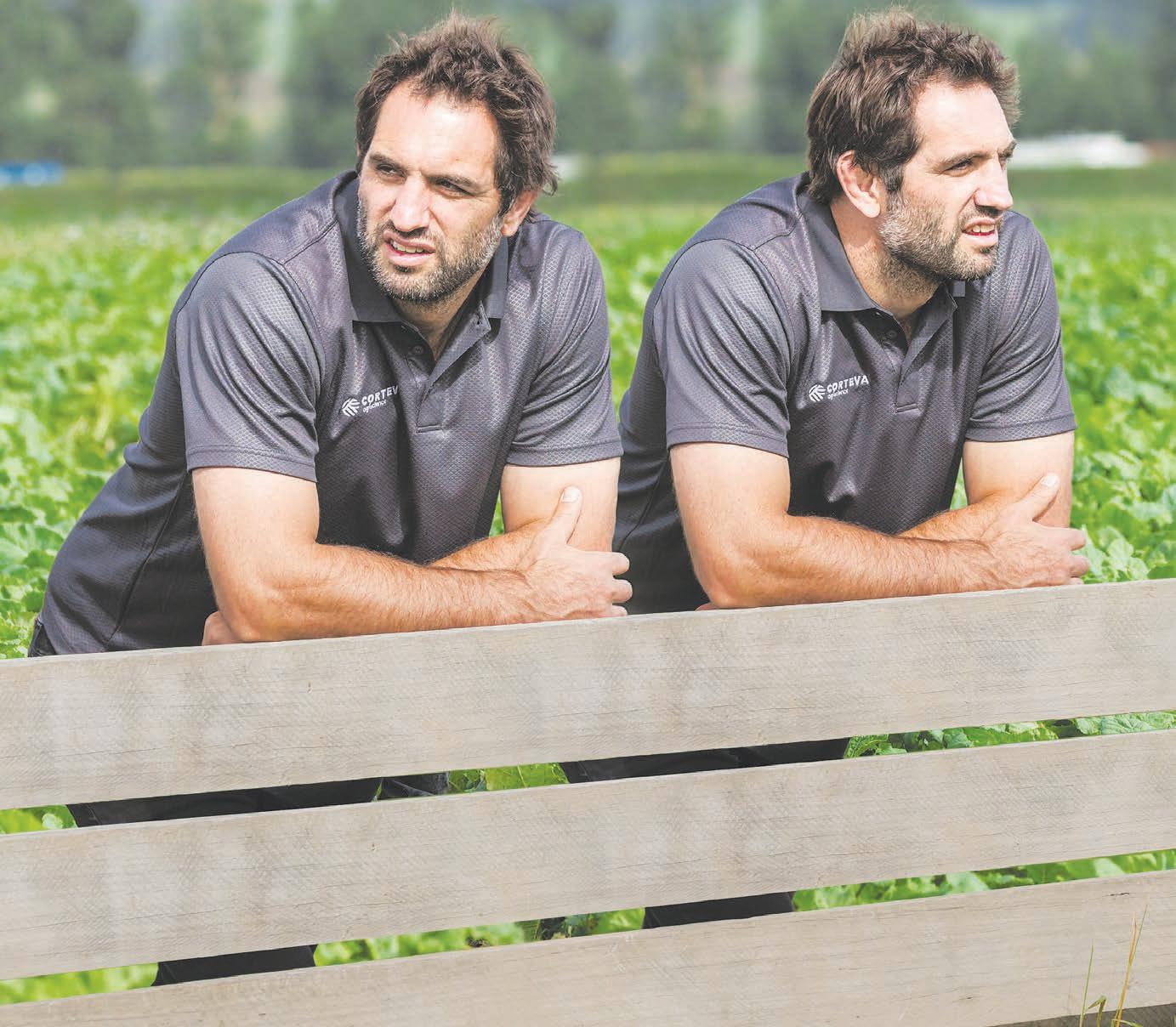

cow dairy farm with her partner Jonny and their three children, Perkins balances family life with leadership in sustainable land use and rural development.
As the founder and lead facilitator of AgriThrive, she is the only agricultural facilitator in New Zealand using a traumainformed, farmer-to-farmer approach. Perkins intends to explore The Third Model, an approach integrating Indigenous stewardship principles with the operational and economic realities of intensive agriculture to create a sustainable foundation for New Zealand’s future.
TwinG uard from Cor teva is the advanced solution for control of damaging pests in forage brassica crops.
TwinG uard protects your brassica crop by combining the proven actives Isoclast® and Jemvelva® to target key pests like nysius aphids and caterpillars.


With fast and effective control, IPM compatibilit y and a low environmental impact, TwinG uard is your go-to solution for reliable brassica crop defence

SCHOLARS: The new Nuffield scholars are, from left, Clare Bradley, Kelly Heckler, Tracey Perkins and Jared Clarke.
Keeping food real in a digital world

Neal Wallace in London MARKETS Trends
THEY are the digital natives, Generation Z, those born between 1997 and 2012 – they do not know a world without the internet, smartphones or social media.
They are also the next cohort to buy our meat, dairy and horticulture products, and they pose a very different marketing proposition to their parents and grandparents.
They are very much aware of the type of world they are inheriting, and can see through any halftruths.
Dr Morgaine Gaye Food futurist
Dr Morgaine Gaye, a Londonbased food futurist, said the perception is they are disconnected, obsessed with the social media and virtual worlds, which means they are divorced from the reality around them and not interested in it.
Believe that at your peril, she warned.
Generation Z is very much aware of what is happening and the type of world they are inheriting, and
can see through any half-truths.
As a food futurist, Gaye advises food companies on marketing and consumer trends, information she gathers from observations or from what could be considered disparate tidbits of information.
She told Farmers Weekly that, while Generation Z are more emotional than older generations and seek food and beverages that address those needs, they also seek the truth.
She described Millennials, those born between 1981 and 1996, as the curling generation because their parents acted like the sweepers clearing a path ahead of a curling stone that has been thrown down the ice as part of the sport.
Their parents do not want them to suffer as they may have.
Millennials are more interested in celebrities than in global issues, but Gaye said Generation Z are more militant, angry about the state of the world they are inheriting and leading protests on streets around the world seeking to drive change.
“They have been raised with the paradigm of get a job, get a better job, get a house, get a bigger house, get a mortgage, get a bigger mortgage, get a car, get a bigger car …
“They are now asking ‘Is that it? I’ve got so much stuff and now I’m not free and I don’t feel so good.’”
Gaye said those preparing to market goods to this emerging

generation must realise they are less trusting and will uncover what is real if they believe they are being fed false information.
“Using a picture of a cow wearing a hat with a daisy in her mouth? Forget it.”
They want to understand, they want reality.
“For them it is ‘Here is the truth, don’t sugarcoat it, make it real,’” said Gaye.
This generation are also focused in their health, which
is reflected in lower intakes of alcohol and caffeine than other generations, although surveys show consumption rates have started to rise.
Gaye said Generation Z are disillusioned by mass-produced food and see real food as coming from smaller producers but also from experiences, such as visiting farms and buying from cottage food producers.
Covid 19 caused them to look at their lifestyles, aspirations and what they were eating, such as the ingredients in alternative protein products.
Gaye said they realised they needed to change and they have gravitated towards nature and reality.
They are eating meat and dairy, but consuming smaller portions of high quality red meat.
She said Generation Z seeks experiences as opposed to surrounding themselves with consumer items such as clothes and shoes.
“Stuff is not what they want and that is what the paradigm of humanity has been telling them for a long time, buy more stuff.”
MORE: See pages 21, 27
There’s life in the WTO yet, experts say

Neal Wallace in London MARKETS Trade
THE current reshaping of world trade is realigning global relationships as countries seek to continue trading while reducing their economic risk.
Michael Gasioreki, Professor of Economics at the University of Sussex, said an example of this is that the United Kingdom and European Union are seeking inclusion in the Comprehensive and Progressive Agreement for Trans-Pacific Partnership (CPTPP) trade deal involving 11 nations from the Pacific Rim and southeast Asia.
This is a conscious effort to work with like-minded nations in a part of the globe that is growing economically – and to also reduce exposure to China and the United States.
“They are reducing their reliance on China and the US economies, but also to move closer to growing emerging regions and to grow their geopolitical significance,” Gasioreki told Farmers Weekly.
The CPTTP deal also includes New Zealand.
There are about 300 regional free trade agreements internationally and Gasioreki said unlike the recent deals agreed to by the
United States after it imposed tariffs on trading partners, these FTAs include legally binding requirements and dispute resolution processes.
“All these deals the US has signed, there is no dispute resolution. It’s a handshake.”
In brokering these agreements, the US has adopted a mostfavoured-nation model that treats countries differently and links trade policy to economic and national security, both counter to World Trading Organisation (WTO) rules.
All these deals the US has signed, there is no dispute resolution. It’s a handshake.
Michael Gasioreki University of Sussex
“That is another reason it does not like the WTO.”
The US also does not like the EU’s deforestation rules, which require exporters of certain products, including – of relevance to US exporters – soy, timber and beef, to prove its production did not cause deforestation.
The US Congress is considering two Bills that would make it illegal for exporters to provide the EU with such information.
“The US debate is less about
trade but a denial of the environmental agenda and a way to stop the so-called Brussels effect, the over-reach of the EU,” he said.
The EU’s implementation of the deforestation rules has been delayed by at least a year.
Gasioreki disagreed that the WTO, and with it the rules-based trading system, is dead or close to death, a claim made widely by political and trade officials.
The US has declared it will not follow WTO rules and China “is close to its edges”, saying it no longer suits its purposes.
But the US accounts for only about 15% of world trade, which leaves 85% still governed by the WTO.
“The WTO still does good stuff and lots of countries still adhere to its policies.”
He said most of the world is willing to conform with WTObrokered trade rules.
“I think what we will see in the next period of time is countries signing a series of bilateral and plurilateral deals on selective issues.”
Carolina Maciel, a researcher in international trade and agrifood law at the university, said the
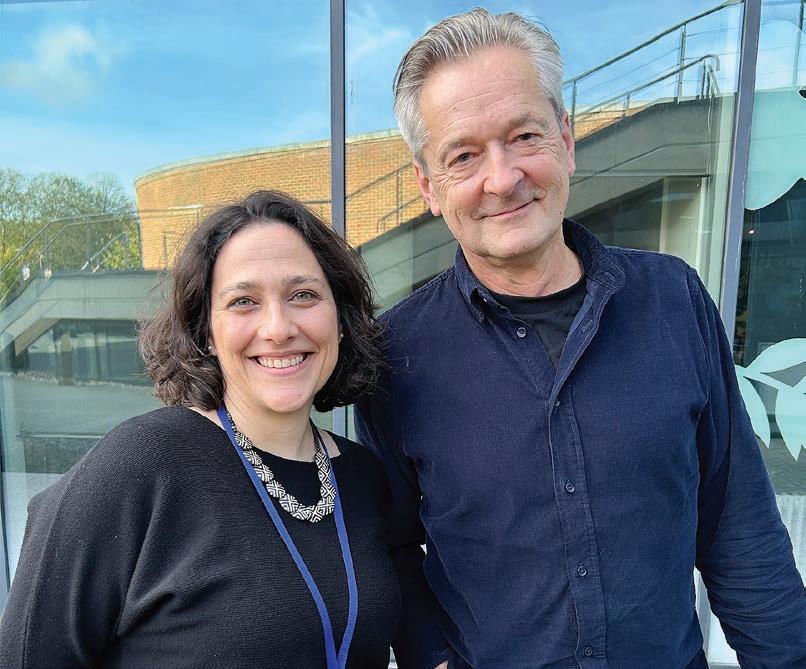
EU has amended imported food standards to ensure imports meet the same production requirements as domestic producers, a request from European consumers and farmers.
She said while the WTO operates on consensus, it allows for tailored chapters within agreements, such as the recent New Zealand-
UK free trade agreement. That agreement includes chapters providing greater clarity and detail on environmental and animal welfare outcomes than is usual.
She believes that will be the standard in future trade deals, but it will also accommodate differing production systems.
Wallace’s Meeting
Market tour has been made
NEW KIND OF CONSUMER: Food futurist Dr Morgaine Gaye says Generation Z are realistic about the food they eat.
TURBULENCE: The reshaping of world trade is causing a rethink, say University of Sussex academics Carolina Maciel and Michael Gasioreki.
Prof

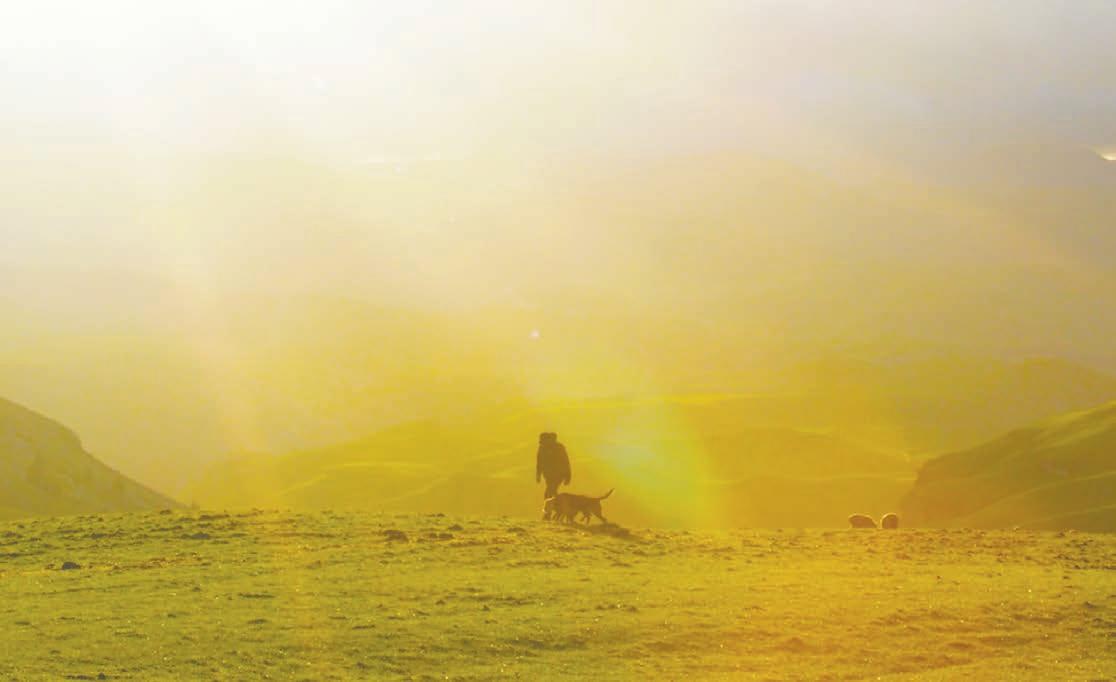
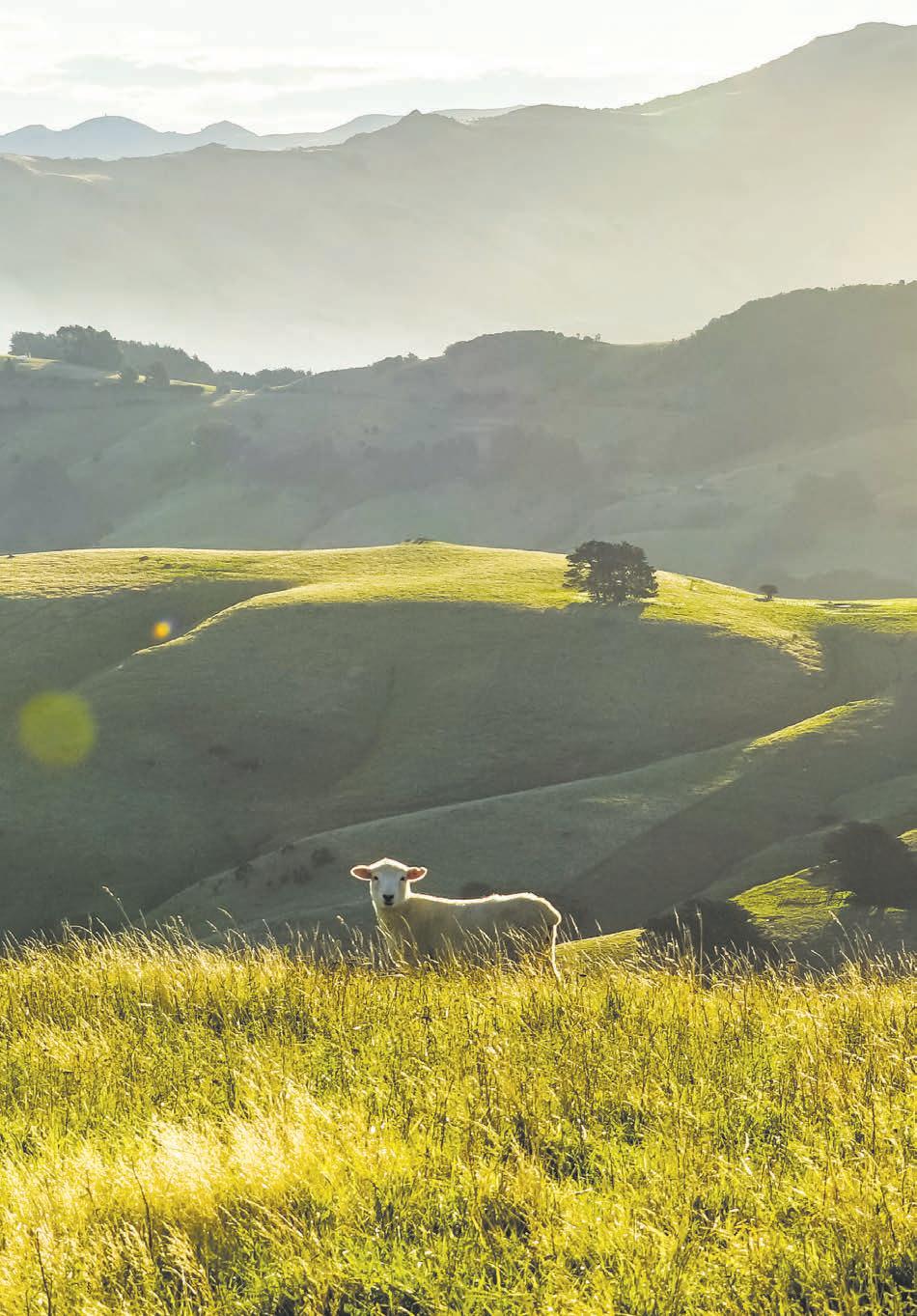
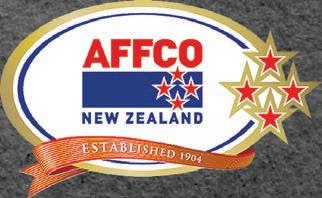


Marketers eye year-round venison sales

Annette Scott MARKETS Deer
AGROWING appetite for year-round venison is a significant opportunity to get better value for New Zealand venison in the European market, say sector leaders.
Deer Industry NZ (DINZ) chief executive Rhys Griffiths and market activation manager Virginia Connell have returned from Europe “heartened and excited to give the market a more strategic look”.
The pair visited five countries, meeting with several in-market partners, and attended the Anuga trade show, the largest food and beverage show of its kind, held every two years.
Europe has historically been more of a commodity market,
with chilled seasonal bonuses for producers targeting food service during the game season.
After covid and the collapse of the global restaurant trade, DINZ and the NZ exporters started to explore greater value in other markets and channels to diversify demand, such as targeting North America and retail channels.
While there is still a sizeable commodity trade of venison in Europe, Griffiths came away encouraged by the number of companies actively seeking to add value.
“Noticeably, these were companies and people who cared about the provenance of NZ venison, who believed in it as a product and the power of the brand behind it.
“My impression of Europe is a lot more nuanced now.
“It really is a market of two sides,
with one side in that traditional commodity space, yes, but the other in a more growth-oriented, value-added space, and it’s that side of the market that is really exciting.”
Griffiths said from microeconomies like London, where food service is still going strong, to some great work going on in the Nordic states, to a growing appetite to feature venison yearround instead of relying on the traditional game season, “all represent significant opportunity for getting better value for NZ venison in the European market”.
Some of what is driving strong demand in Europe is a macro situation, driven by the global protein shortage, but there were some common themes across the countries and partners, areas that NZ deer farmers as producers and venison as the product are already strong in.

Connell said sustainability is big right now, but in a factsand-figures kind of way, not just beautiful scenery and marketing slogans.
“Verification and traceability are increasingly important, and these need to be backed by strong
EXCITING:
land stewardship and genuine environmental considerations.”
The other theme that came through loud and clear was the increasing focus on nutrition.
“Overall, it was a seriously informative market visit,” Connell said.
New velvet season ‘complicated time’ for market

Annette Scott NEWS Deer
THE new velvet season has got off to a “complicated start” with velvet producers encouraged to closely weigh up their selling options and look to partner with operators with skin in the game.
Speaking on a recent deer industry markets update webinar, Deer Industry New Zealand (DINZ) board director Tony Cochrane said: “Where we sit right now, we don’t have a price, similar to most velvet operators in NZ.”
Cochrane noted that stocks are currently built up in NZ’s overseas markets, particularly China, and that volatility is starting to show.
“This sets up the 20252026 velvet season as another complicated one.”
DINZ chief executive Rhys Griffiths concurred, saying prices are coming later than usual.

“Throw in an early spring weather event for some of our producers, and we feel for farmers
given the additional uncertainty,” Griffiths said.
“As always, our advice remains

the same: stick close to your buyers, weigh up your options closely, look to partner with those operators with skin in the game, and keep an eye out for DINZ updates.”
While this time of year is always something of a game of whispers, with the usual pre-season posturing in the market, there are reports of some margin traders again trying to drive down prices at the wholesale end.
On the demand side, South Korea, in the past driven by a booming health food market, has slowed due to the country’s economic headwinds, leading consumers to seek out less expensive substitutes, such as probiotics and vitamin supplements.
The health food sector is slowing due to a glut of products in the market, meaning more consumer choice and, while health functional foods (HFFs) is a promising
product category, the reality is that it will take a couple of years for volumes to lift.
Which leaves China, where there are currently already stocks of Korean-grade velvet awaiting processing.
End use demand in China is growing, albeit slowly, but brings with it different preferences for velvet, based on a several factors, including traditional opinions on what makes “good” velvet, as well as the ease of processing and associated processing costs.
Cochrane said the control of NZ velvet still rests in the hands of velvet growers to achieve fair value and not be led down a negative pathway by short-sighted buyers.
“Velvet is a niche, high-value product, not a commodity that can be easily replicated.”
November will see visiting delegations from several pharmaceutical companies from both South Korea and China.


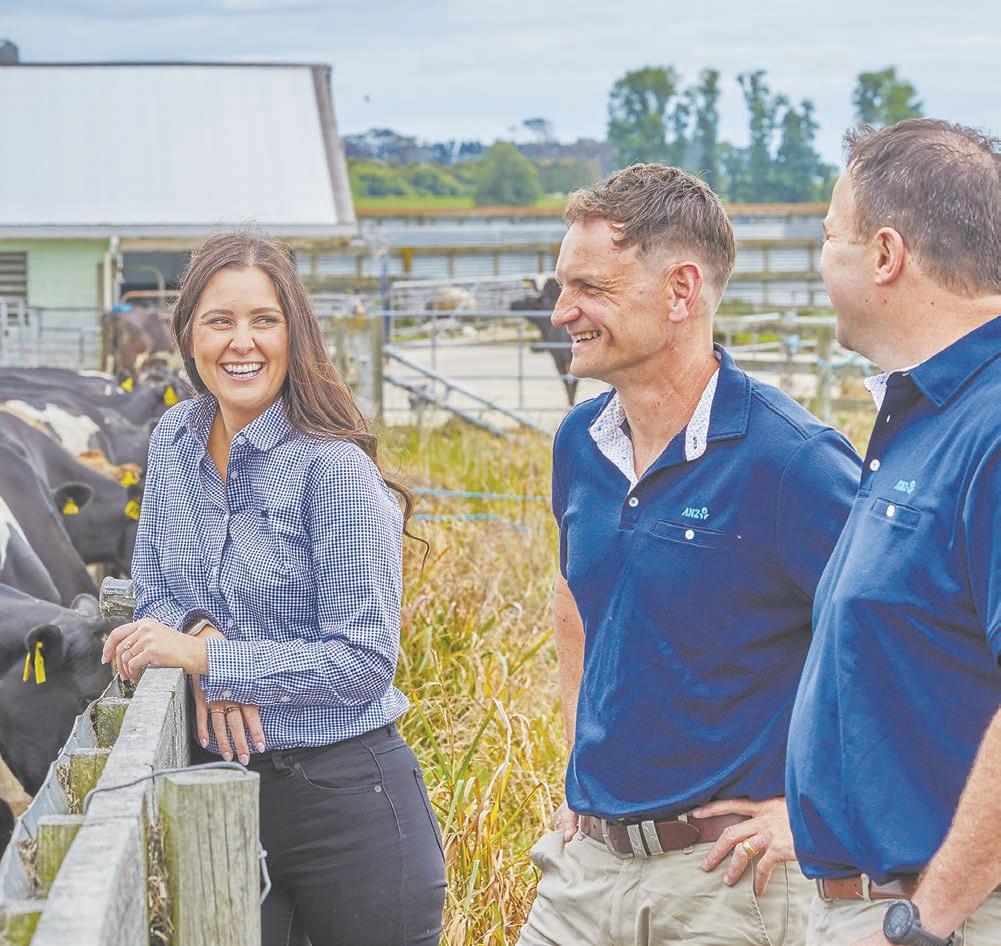
DINZ chief executive Rhys Griffiths says a growth-oriented, value-added space in the European market is exciting for New Zealand venison.
OPTIONS: Rhys Griffiths urges velvet producers to weigh up options closely and look to partner with those operators with skin in the game.
Pāmu collars more land with virtual fences

PĀMU’S Eweburn Station in Te Anau is relying on virtual fencing to create efficiencies.
Speaking at a farm open day at the station, Halter president Andrew Fraser said the station was one of the first farms globally to
trial Halter collars on beef cattle, with feedback from the station critical to driving improvements on this front.
Eweburn station is 2879 hectares, with 2305ha effective, predominantly LUC 4. The station wintered 17,880 stock units in 2025, with more than 5000 sheep, 1300 cattle and 2900 deer.
Halter was introduced to the station last year, with a long-term

goal to collar all cattle aged over nine months.
Currently there are collars on 259 R2 beef bulls, 98 R2 trade heifers and 113 mixed-age cows.
Eweburn farm manager Ryan Thomson said virtual fencing is being effectively used to utilise older pasture, with collared animals doing an “excellent job”.
He said 112 cows were collared for calving this season, the first time the station has used collars on cows. It worked well.
Setting up for calving means you need a well thought-out paddock with feed. Cows with calves were separated into different virtual paddocks, he said.
Cows will creep-graze with calves at foot, he said.
He said paddocks that need to be locked up for silage will also be virtually fenced.
The station has had some teething problems with Halter, but has been collaborating with the virtual fencing company to use the challenges to make the collar more efficient.
For instance, collars were redesigned for growing bulls whose necks grow fast, with collars needing to be readjusted every couple of weeks.
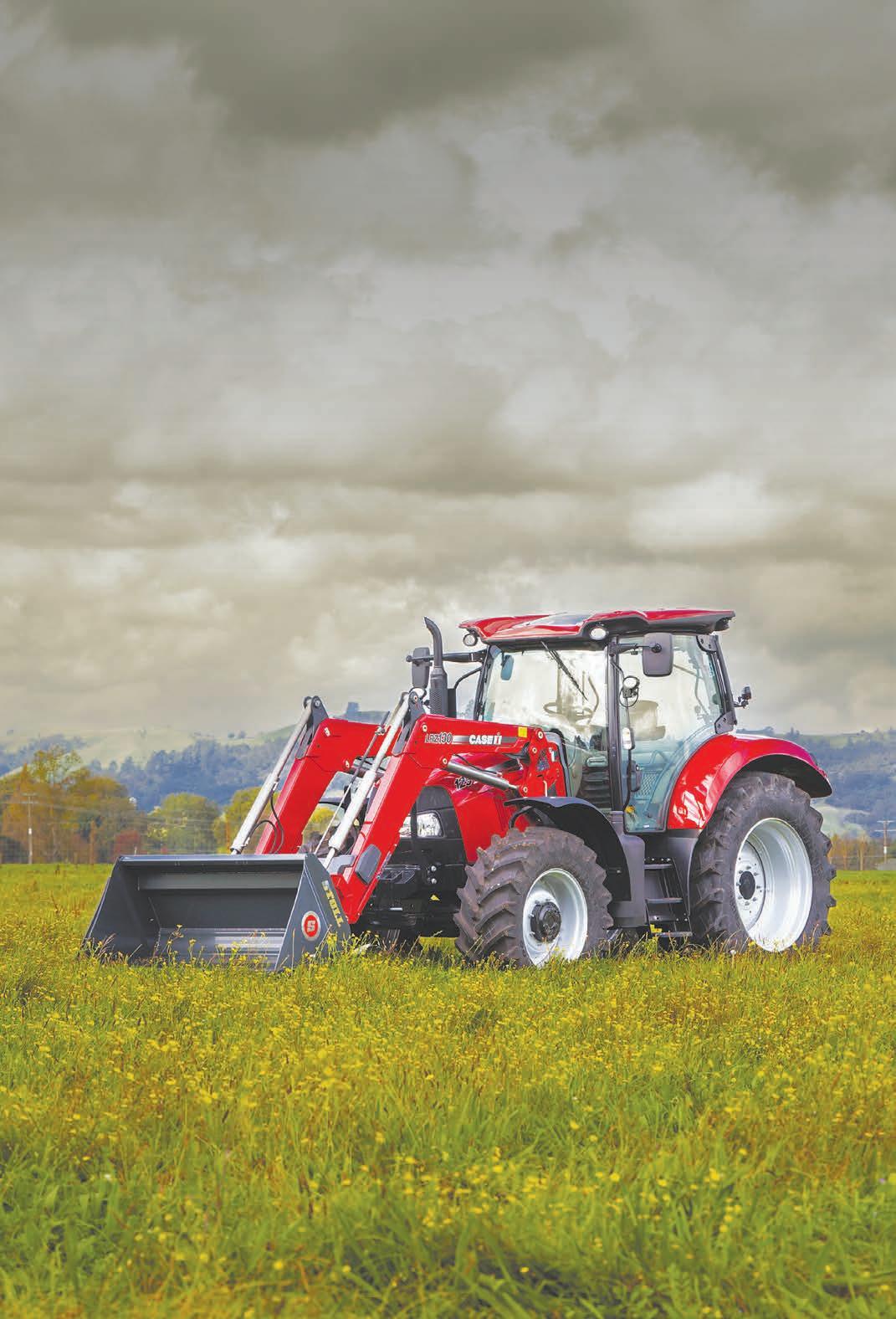

Checking collars on seven mobs of bulls every month is a challenge, he said.
However, virtual fencing has enabled the station to run bulls efficiently without the need for “stick and strings”.
Being able to shift bulls daily “while having coffee in the morning” has been a bonus.
However, Thomson said, virtual fencing does not exclude the need for good stockmanship, and boots are needed on pasture to check stock and pasture daily.
Seventeen Halter towers were initially needed to create a mesh tower system to get connectivity across the entire farm, which has a lot of hill terraces.
FIELD-READY VALUE YOU CAN COUNT ON GET GEARED UP WITH CASE IH
But with technology improving fast, the farm now needs only five towers, with the redundant towers soon to be moved to a Pāmu farm on the West Coast.
Ballpark costs for Halter are $96 per collar per year, with a tower costing around $5000, once off. Thomas said with Halter being an ongoing cost, they want to make sure it is cost-neutral.
To this end they calculate how the technology can help them save money through reduced labour, fencing and the need for supplement feeding.
The technology must help them drive revenue, something they do by using 80%-plus of their pasture, well above the industry average.
Case IH is the trusted choice for mixed-farm enterprises to accomplish any task We focus on what matters most: outstanding manoeuvrability, operator-friendly design, compact dimensions, and a high power-to-weight ratio for maximum productivity
For a limited time, get a FREE RedXtend Total Protect warranty upgrade^ available on selected Farmall, Maxxum, Puma and Optum tractors that’s 3 years or 3,000 hours of total peace of mind Plus, lock in low 0.99% P.A finance^ over 3 years across the whole range. Field-ready value you can count on.
For more information visit caseih.co.nz or visit your local Case IH dealer

Gerhard Uys TECHNOLOGY Sheep and beef
WATER: Virtual fencing has been used at Pāmu’s Eweburn Station in Te Anau to maximise pasture use and keep cattle away from waterways.
Photo: Gerhard Uys
NEW GAME: Eweburn farm manager Ryan Thomson says Halter has been a game-changer at the station






















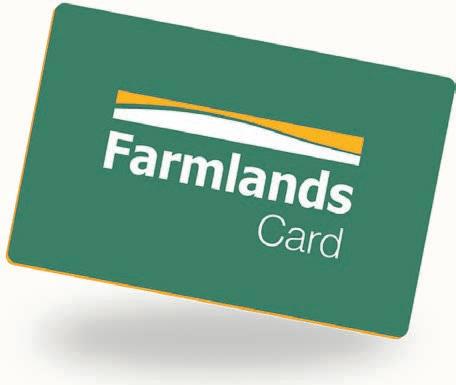




































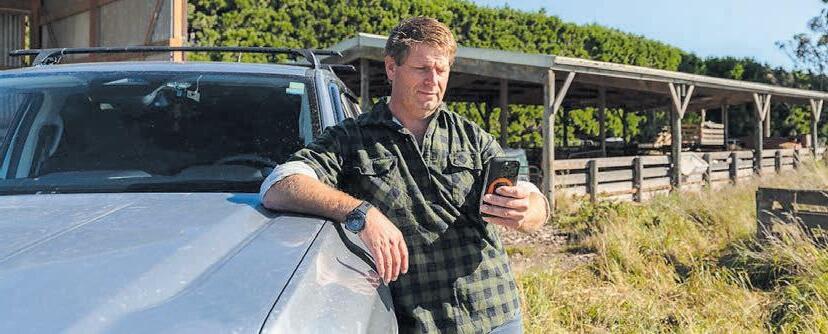
















Wool training heads to the Chathams
Staff reporter PEOPLE Education
THIS December, wool training will reach one of New Zealand’s most remote communities – Rēkohu, Wharekauri, the Chatham Islands – bringing hands-on skills and industry connection to local learners eager to step into the wool harvesting sector.
Agricademy wool training business Womolife, in partnership with Hokotehi Moriori Trust, Tāmata Hauhā and the Ministry for Primary Industries, will deliver the programme.
Chatham Islander Tommi Gregory-Hunt is managing the programme delivery, working closely with Agricademy, enrolling more than 30 people in online learning, followed by in-shed training courses. The goal is to build practical shearing and wool-handling skills while fostering long-term employment pathways.
“This is more than just training, it’s about creating opportunity in a place where access to industry support is limited,” said Womolife head trainer Carmen Smith.
“The learners here are motivated, resilient, and ready to contribute to the sector.”
Local shed owners have stepped up to support the programme, offering space, equipment and encouragement.
Cherie Tirikatene, general manager at Tāmata Hauhā said: “It’s great for the island, and our rangatahi aspirations and also for the farming and wool industries as a whole.”
The wool training initiative is currently the only programme of its kind in Aotearoa, making the Chatham Islands a national leader in hands-on
Ag sales growth slows as small businesses struggle

Gerald Piddock NEWS Agribusiness
SMALL Business Insights data from Xero for the September quarter shows that sales in the agriculture sector grew 3.3%, well down from 11.1% in the previous quarter to June.
Xero country manager for Aotearoa New Zealand Bridget Snelling said it is a concern to see agriculture sales slow as they have been one of the few bright spots in the New Zealand economy this year.
“The solid sales performance earlier in the year has supported jobs which were up 0.8% year on year, one of only three of the industries [Small Business Insights (XSBI)] tracks to record positive jobs growth in the September quarter,” Snelling said.
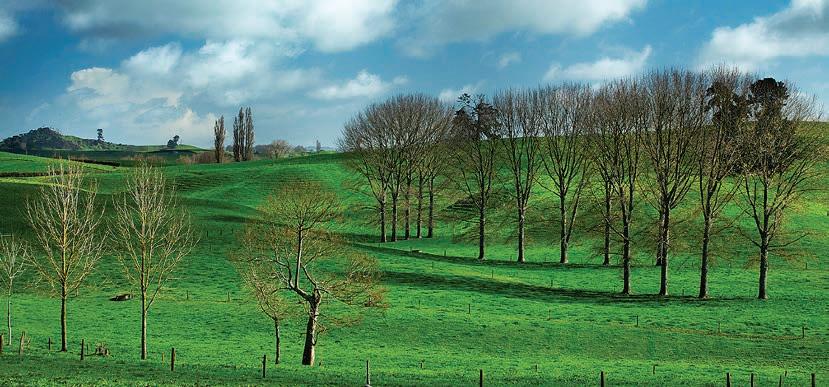
The XSBI data shows small businesses continued to struggle.
Sales rose in the quarter, recording the best result in two and half years, but this increase was only 1.9% year on year, making it a decline in inflation-adjusted terms.
wool harvesting education. It sets a precedent for other regions and Māori farming communities seeking to build local capability and employment pathways.
The project is part of a wider collaboration between Agricademy, Hokotehi Moriori Trust, and Tāmata Hauhā, whose work focuses on restoring indigenous ecosystems and unlocking multiple land use opportunities including carbon farming. Together, they are laying the foundation for a transformative programme that blends rural skills development with environmental stewardship.
This is more than just training, it’s about creating opportunity in a place where access to industry support is limited.
Carmen Smith Womolife
The programme will be documented on the WOMO and Tāmata Hauhā social media channels, with learner profiles, trainer interviews, and behindthe-scenes footage capturing the energy and impact of the training.
“We want to show the rest of New Zealand what’s possible when you invest in people, no matter where they live,” said Alister Shennan, Agricademy founder.
For more information, visit www.agricademy.co.nz/ womolife or follow Womolife on Facebook, Instagram and YouTube.
• Disclaimer: Dean Williamson, CEO of AgriHQ, is an Agricademy shareholder.
CooperAitken director Grant Eddy said the agriculture data should be put into context because it is difficult to make assessments of the sector based on quarterly data, particularly for the dairy industry.
For example, the income Fonterra farmers received depended on their advanced and retro payments and the nature of those payments make it hard to assess on a three-month cycle.
Farmer income could also vary due to other factors, such as payments from cull cows, he said.
Overall, it is a positive sign that nominal sales have started to grow again but conditions remain challenging for New Zealand small businesses.
Snelling said the star performers for 2025 have been the manufacturing and professional services industries, having recorded at least three consecutive quarters of positive sales and jobs growth, something that has eluded other industries.
Industries including construction, hospitality and retail continued to be challenged, recording sales growth results of -0.7%, 1% and
2.9% year on year, respectively. Construction was particularly weak, with jobs lower than a year ago for seven consecutive quarters. The September quarter showed jobs down 3.9% year on year. This was matched by a weak jobs result in hospitality and retail.
Stats NZ data shows these three sectors are the biggest employers of young people, and Snelling said that Xero’s results confirm that conditions remain tough in the job market, particularly for young people, with fewer opportunities out there.
However, “while we’re not out of the woods yet, there are some hopeful signs on the horizon, and the Christmas period will be telling. One way we can all bring some community spirit is by making an effort to shop local and support small businesses this festive season.”
Hardy perennial cracks top title

Scott PEOPLE Skills
IT’S a case of third time better for Lars Hardy, crowned Young Auctioneer for 2025 at the annual New Zealand Stock and Station Agents Association’s contest held at Canterbury Park.
Winning the coveted title is a mission accomplished for Hardy, who had been eyeing the winner’s podium for a few years.
Finishing runner-up last year, Hardy, 24, was gunning for more than the bid in his third shot at the prestigious industry title.
Contestants must be under the age of 30, and are required to demonstrate ability, first in an interview to test communication skills and knowledge of the terms
TOP: The top three Young
for
and conditions relating to livestock auctioneering, then in a practical live auction.
“I’d had a couple of goes … I didn’t want to be that guy that went at it for eight years and didn’t win,” Hardy said.
He has been in the industry for four years as a livestock agent with PGG Wrightson, starting in South Canterbury before transferring to the Central-Tararua district in the North Island, where has worked for the past two years.
From growing up on a sheep and beef farm in central Hawke’s Bay to becoming an agent, “I’ve always had a passion for the industry”.
“In my time as an agent I have grown a love for auctioneering and it has become a highlight of my job first doing a little bit down south but really growing into the art

after moving up north. I have been lucky to have ample opportunities selling at Stortford, Dannevirke and Feilding saleyards on a weekly basis under some top auctioneers in the country.
“I love the challenge, bettering myself and doing the best for clients and I’m pretty happy with this win. It was fierce competition this year.”
Hardy now looks forward to heading to Australia, where he hopes to gain more experience.
As well as carrying off the NZSSAA trophy and the Denis Hazlett Medal, as New Zealand champion Hardy gets the opportunity to exhibit his skills at the Sydney Royal Easter Show in 2026.
On his return he’s looking forward to climbing his way further up the ladder.
“I want to keep pushing my way up to the hierarchy in auctioneering, eventually getting to the stud stock.”
Young Auctioneer competition founder and co-ordinator Mick Withers said the eight-strong lineup from across the country was one of huge talent.
Dylan Forde from Carrfields Livestock Canterbury took out second place with Hamish MacDonald from Redshaw Livestock, Hawke’s Bay, coming third.
CLOSE WORK: Chatham Islander Tommi Gregory-Hunt is managing the programme delivery, working closely with Agricademy.
LOSING MOMENTUM: Agriculture, one of the few bright spots in the New Zealand economy, recorded a drop in the rate of sales growth for the September quarter.
Annette
ON
Auctioneers
2025 are, from left, Dylan Forde, who came second; champion Lars Hardy; and thirdplaced Hamish MacDonald. Photo: PGG Wrightson
Take nothing for granted.
When you activate your voluntary subscription to Farmers Weekly you’re preserving an information service no other farmers, anywhere else in the world, get for free.
• Farmers Weekly – the newspaper delivered to 74,000 mailboxes nationally.
• Farmersweekly.co.nz – the website, updated daily and visited by 220,000 people in October.
• Farmers Weekly podcast – new interviews with newsmakers every week.
• Farmers Weekly poll – where your view matters and decision-makers notice.
Thank you to the 1190 members so far, for not taking this service for granted.
To everyone else: Please join the team now. Details below, or call me directly at any time.
Kind regards

Dean Williamson – Publisher dean.williamson@agrihq.co.nz 027 323 9407
BECOME A VOLUNTARY SUBSCRIBER
Start your voluntary annual subscription today. $120 for 12 months. This is a voluntary subscription for you, a rural letterbox-holder already receiving Farmers Weekly every week, free, and for those who read us online.
Choose from the following three options:
Scan the QR code or go to www.farmersweekly.co.nz/donate


Email your name, postal address and phone number to: voluntarysub@farmersweekly.co.nz and we’ll send you an invoice Call us on 0800 85 25 80
Note: A GST receipt will be provided for all voluntary subscriptions.

‘Choose Your Hard’
Taupō farmer, coach and wellbeing facilitator Deanne Parkes shares her thoughts on keeping well on farm with Farmstrong.
Deanne, you wear many hats. What do you enjoy about farming and rural life?
Farming’s in the blood. My family are all farmers and I’m very proud to say that I’m a farmer. I love that sense of connection you have as a farmer with other farmers and the camaraderie with other local farmers when you stop to chat. I grew up on dairy farms, and we were dairy farming but just recently switched to sheep and beef, so I’m not hands-on as much anymore, but I’m still a farmer in so many different ways. I love it.
What are the main pressures you’ve seen in farming?
One of the biggest areas I have noticed that impacts farmers greatly is the lack of sleep they get compared to other industries. I don’t think farmers realise the lack of sleep, leading to fatigue is one of the reasons they feel as if they’re on the back foot all the time.
The other pressure is it can be very hard to switch off. Even when farmers go away on holiday they’re often wondering if there’s a water leak or what’s happening if the weather changes. That sense of constant demand can be draining. It’s a bit like having a tab open on your phone the whole time.
What can people do about this?
Farmers are so good at looking after their animals and crops. I think it’s about applying the same logic to yourself. If you look after yourself too you’ll be in better shape, make better decisions and be able give more back to the farm and your family.
How do you make lifestyle changes like that? Where do you start?
Identify the area to work on first, awareness is key. Everyone is different but what can work well is to treat it as a challenge. Look at the hurdles for something like sleeping better, start with a small change and work through them for a couple of weeks. Take the time to do these things rather than pushing them to one side. Enlist a support person, to help you keep
accountable and walk alongside you for the changes.
How do you make new habits stick?
It’s all about making little changes rather than everything at once. Pick one thing and tweak it. So if it’s sleep, it might mean just going to bed a half an hour earlier. Over a week that’s three and a half hours extra sleep. Those small changes can really add up.
That requires a change in mindset too, doesn’t it?
You’re right, and that can be tough to change, but it is possible. It’s a choice, I love the saying ‘choose your hard’. We know looking after our wellness can be tricky, but not looking after it is hard too. Which approach is going to benefit you and the farm in the long run? If we’re feeling fatigued and don’t make good decisions, it’s the farm and those around us who suffer.
We know looking after our wellness can be tricky, but not looking after it is hard too.
Deanne Parkes Taupō
What about peak periods like calving, lambing, harvest? Any advice?
Preparation is key. If you think of an athlete, they don’t just go straight into Super rugby without any prep, but farmers often just go straight into calving. If you notice that you’re always getting back problems during calving, do some prehab and strengthen that area. There’s so many options these days - you can even meet with a physio online.
You’re part of the Farmstrong champions network. What does being Farmstrong mean to you? It means being proactive, looking after ourselves for the now and future not waiting until we are unwell. Understanding your why helps to drive this. Why are you farming? Farmers are often

farmstrong.co.nz
putting everything and everyone before themselves, but if you talk to them the reason they’re doing it is for their children. So, if it’s all for your children, what example do you want to be setting? Is an exhausted parent with a sore back going to make them fall in love with farming? Think about how you can be role modelling to them.
How do you stay Farmstrong yourself?
I love practicing gratitude. Noticing three good things every day. Life might be difficult but if you can look for the good in your day, it’s a huge help mentally. It may be remembering ‘hey I got the cows milked’ or ‘I reached out to a friend’ or even just ‘my gumboots are dry’. What that does internally is create mood-boosting hormones. It’s also shifts your focus from ‘the pump’s not going ‘or ‘we’ve got a down cow’, to something more helpful.
How important are mental skills in farming?
Mental skills are important for everyone. I don’t think we’ve adopted them enough as an industry because we’re time poor, even though they could really add a lot of value to our ourselves and our businesses. Look at the All Blacks and the Super rugby teams and the time they spend creating a high-performing team culture with the right mindset. It’s massive. But in farming we don’t talk about the mental skills needed for farming, farmers often have the mindset ‘that is how it is’. We often get new teams together and expect everyone to hit the ground running during a highpressured calving with a lack of sleep and poor nutrition. If you want people to thrive in situations that are pressurised, focusing on their personal development including mental skills and setting up the right team culture is really important and can make a positive difference in so many areas.
It can be very hard to get downtime in farming. How important is rest and recovery? Extremely important – you

cannot perform at a top level if you are exhausted and depleted. I remember Dad telling me when I first went farming ‘Don’t do what I did. Don’t miss the kids sports. Have the time off.’ That was his one piece of advice!
So, my husband and I try to have regular time off and give staff time off, but we definitely felt pushback at times in the industry. The mentality was that you’ve got to do these hard yards to get ahead. It was like a badge of honour to say, ‘oh I’ve worked this many days in a row.’ That’s okay if you want to do that, but we need to look at the impact it has to us and our family and know that there are small changes that can be made to make life and farming more enjoyable.
So, what’s your advice?
I come from a sports coaching background and rest and recovery and mental fitness is absolutely vital to sustainable performance. It re-energizes people. When you’re looking at your season plan think about ‘where is my week off just to relax and recover sleep?’, because burnout is far more common than you think, but people don’t talk about it. Change is possible and it
starts with awareness and belief it can be better.
What’s your main message about keeping well on farm? Notice when our energy levels or mood are dropping so we can make changes and address things. Keep habits like Farmstrong’s 5 Ways to Wellbeing front of mind. Use them on a daily basis. Improving mental fitness isn’t hard to do, it’s about doing small things regularly. Take responsibility for how you can help yourself, we can’t wait for other people to come and save us. Changes do not have to be big, start small and those small changes lead to big changes over time. Reach out to someone if you do not know how or where to start.
MORE:
Farmstrong is a nationwide, rural wellbeing programme that helps people manage the ups and downs of farming and growing. Last year, 20,000 farmers attributed an increase in their wellbeing to the programme. For free, farmer-to-farmer tools and resources head to www.farmstrong.co.nz
is the official media partner of Farmstrong


TEAM: Deanne on farm with husband Ben, better known as Rani.
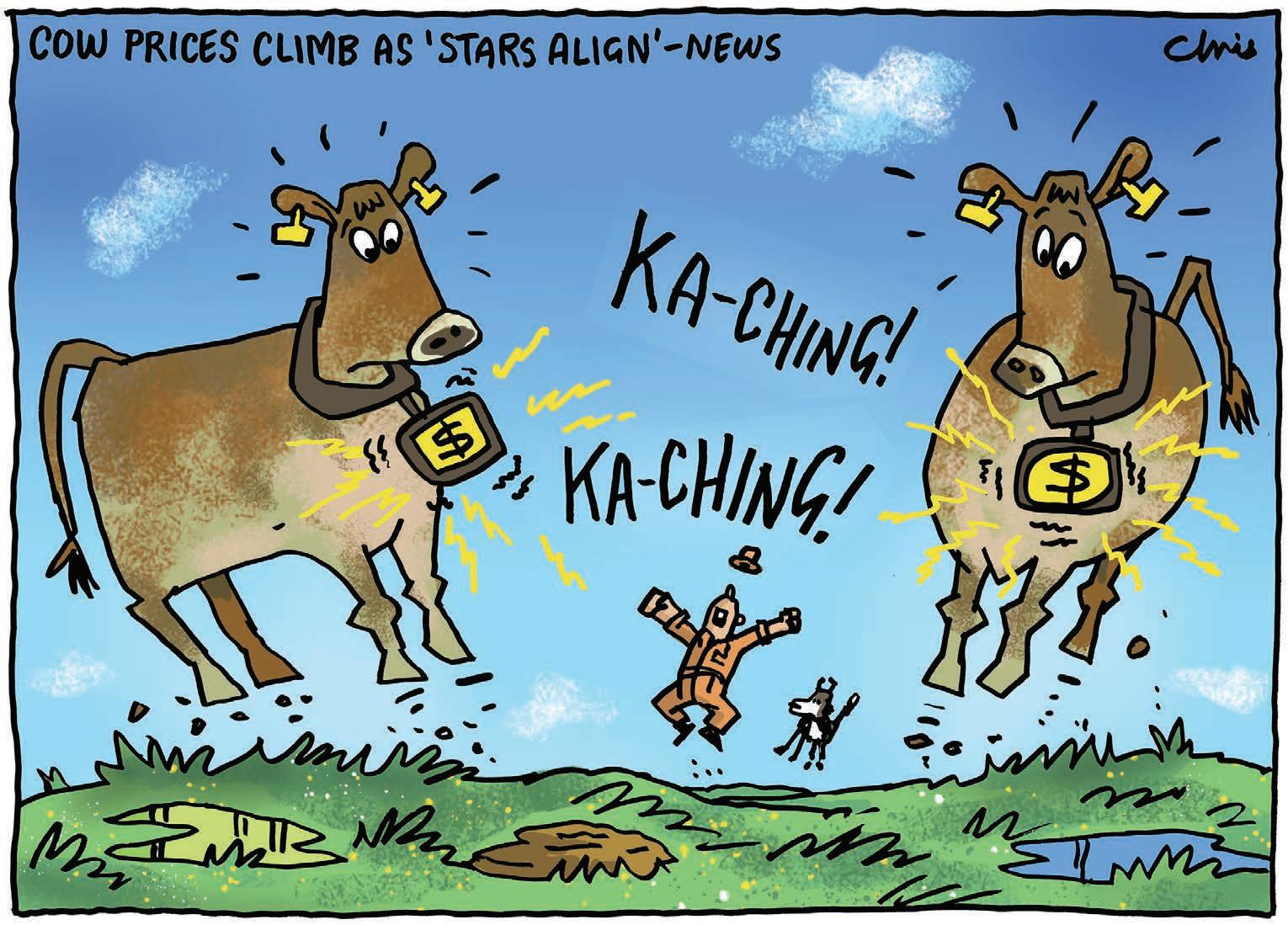
From the Editor
Nourishing the next generations

Neal Wallace Senior reporter
DETERMINING the wants and needs of the next generation of consumers is an imprecise science.
Try rationalising this: Millennials, those born between 1981 and 1996, are driven by feelings, focused on social media and influenced by celebrities. Generation Z, born between 1997 and 2012, are digital natives. The only world they know is one with the internet, smartphones and social media, but that doesn’t define them.
London-based food futurist Dr Morgaine Gaye says they want reality and have very different values and expectations to Millennials.
Generation Z are less trusting than their older cousins, which has helped curb the very real threat that alternative proteins once posed to meat and dairy consumption.
The covid epidemic prompted them to reconsider what they want out of life, and to
LAST WEEK’S POLL RESULT
look anew at the world they would inherit and what they were eating.
Inherently suspicious and questioning, they didn’t like the fact that they couldn’t recognise – let alone trust – many of the ingredients listed on the packaging of alternative protein products.
And therein lies a challenge for those marketing our food products: two emerging generations with two very different outlooks on life.
What was once another looming threat to meat and dairy producers is also stalling. The emerging protein fermentation process is far from being perfected or economically viable, and is plagued by requiring enormous amount of energy.
The general consensus is that demand for dairy and meat should stay buoyant for another year or two due to a combination of declining global production and sustained demand.
Dairy is enjoying what appears to be insatiable global appetite for protein and, while red meat faces some resistance due to price, consumers continue to trust it and recognise its health and dietary attributes.
And that includes Generation Z.
They love dairy protein and while they won’t sit down to a large steak every night, they will regularly eat small portions of quality red meat.
They are a generation who want the truth, and products and experiences that
Fonterra farmers seem poised to take the sensible option when it comes to spending their Lactalis payout.
Voters were asked how they would use their cash windfall: on debt repayment, infrastructure, tech solutions, improved sustainability or other.
Almost 70% (68.3%) of voters said they would be using the money to pay back debt. “Banks will have their hands out, don’t worry,” said one. Another felt the question would have been better if they were asked to rank the options. “A choice of just one option is unlikely to reflect the decision-making reality for most farmers. The answer depends upon existing debt/equity in the property, need for improved or replacement of a structure, tech solutions with high payoff and improved sustainability if the farm can convert this to profitability.”
Of the 4.1% who voted for tech solutions, one believed it was important to “pay it forward. Pay more for talent, improve housing standards, improve cowsheds and other infrastructure efficiencies, provide 50% s/milking jobs, option to lease land, buy parts of farms – to those that are the future.”
Just 2% voted for other, “Whatever each individual farmer wants to do – it’s their money,” said one.
are real. They will quickly see through any whitewashing or attempts to dupe them.
They suffer from high rates of depression and other mental health challenges and live in the virtual world, but that does not mean they are disconnected.
They have a very definite values and expectations, and are genuinely interested in the world around them. They will call it as they see it.
They are emotionally driven, and this creates opportunities as they seek food and beverages to help them deal with stress and anxiety.
They do not accept a life driven by getting a job, a house, a mortgage, and they also don’t accept what they see as global injustice. They are unhappy with aspects of the world they will inherit and are marching in the streets saying so.
Generation Z will also lead the next major consumer trend: improved individual immunity and health.
They will use tools and gadgets to determine their health, and seek food that provides the necessary micronutrients to enhance their individual health and improve immunity.
It wasn’t so long ago that consumer trends posed a major threat to animal protein consumption.
That risk may have eased a little, but the challenge of connecting with the latest consumer cohort remains.
Last week’s question: What should Fonterra farmers prioritise when the Lactalis payout arrives?
Letters of the week On the side of piglets
Dave Stanton Geraldine
AS SHEEP, beef and deer farmers in South Canterbury we free-range-farmed four mated sows a year.
And we concluded pigs are terrible mothers.
My four sows could farrow absolutely anywhere. Each farrowed in different locations – haybarn, side of a dry creek, utility shed etcetera.
The sows had 11-13 piglets each. One runt died and then over a month the mothers lay on, squashed, suffocated and killed all but five of their piglets each.
I would often hear the sound of a screaming piglet. Mum had laid down on it and wouldn’t roll over. I rescued piglets multiple times, but simply could not be there 24 hours a day, seven days a week to help them.
I’m on the side of the piglets’ welfare, survival and livelihood. Certainly over one sow’s temporary, momentary discomfort. We have regulated 600 piglet farmers out of business – the many pig farmers in this country who have simply given up due to the burden of government regulations.
Then, instead of producing our own hormone-free NZ pork, we are choosing to import the pork from countries which have far worse farm practices than we would ever allow in NZ farming.
We are simply exporting the problem.
Keeping fawns in mind
Tony Orman Marlborough
FURTHER to my letter, “A resource to be managed” (November 3), on wild game management, I should have added managing numbers will involve shooting hinds in the months September to mid-November to allow (a) the rising one-year-old youngster to develop through the winter and (b) to avoid leaving newborn fawns to slowly starve in late November-December.
After all, no farmer would take a ewe away from its newborn lamb. It’s important to keep deer numbers well within the carrying capacity of the habitat for both the environment and the wellbeing of animals.
Best letter WINS a quality hiking knife
Send your letter to the Editor at Farmers Weekly P.0. Box 529, Feilding or email us at farmers.weekly@agrihq.co.nz
Selling the farm and our future
Eating the elephant

AOTEAROA New Zealand’s economic foundation is being sold from under our feet.
In the past five years, we’ve seen more and more control slip away from New Zealand farmers and communities. From the dairy factories that process our milk to the brands that carry our reputation around the world, decision-making power and profits are quietly migrating offshore.
Fonterra is exploring the sale of
its consumer business, including Anchor, our most iconic brand, to French dairy giant Lactalis, which is paying a premium for an Asia Pacific-focused brand and valueadd platform.
Tip Top moved into Froneri’s portfolio in 2019. Westland Milk Products was acquired by China’s Yili that same year. Silver Fern Farms sold half its operations to Shanghai Maling. Synlait sold its North Island plant to Abbott, and Alliance has just sold almost two-thirds of the company to the Irish. Goodman Fielder, maker of our everyday staples, became fully owned by Singapore’s Wilmar International in 2019.
Each of these sales might make sense commercially when viewed on its own. But together, they show a clear pattern – New Zealand is becoming a price-taker in its own food system. Farmers and rural communities carry the risk while control and profits shift overseas.
We’re giving the next generation(s) a hospital pass, driven by four key areas: selling assets to meet short-term pressures instead of backing long-term returns; relying too heavily on offshore capital for investment; lacking a clear NZ Inc primary sector vision and strategy; and holding onto outdated ideas that treat national

ownership as a problem rather than a strength.
The cost of losing control is real. When ownership moves offshore, decision-making follows.
Choices about where processing happens, what gets invested in, and whether local facilities stay open move to boardrooms in Shanghai, Waterford or Singapore – not Wairoa, Invercargill or Fanshaw Street.
That means fewer jobs, less resilience, and farmers and communities left taking what they’re offered instead of shaping the future together.
This isn’t about shutting out foreign capital. It’s about being strategic. Many other agricultural nations protect key food assets (like energy and banking) while still welcoming international investment.
We can do the same.
First, we need to define what matters most. That means having
Farm plans top consents for freshwater management
In my view
REGULATED freshwater farm plans were the brainchild of the previous government. While the current government has promised to make them more practical, we remain concerned.
Beef + Lamb New Zealand has long supported integrated farm planning. Done well, it helps farmers manage risk and build value with plans tailored to their needs and completed by farmers themselves.
But integrated farm planning is very different from a regulatory farm plan, which brings with it costly and onerous certification and auditing.
We know many dairy farmers and their representative organisations support farm plans. Memories of anti-dairy farming campaigns remain fresh, and protecting social licence is understandably a priority.
In practice, though, dairy companies often do most of the technical work for their suppliers, removing the burden from farmers. For red meat producers, the
situation is very different. Farmers often supply multiple processors, and companies cannot provide the same level of support.
In some cases, where farms already require a resource consent to operate, replacing that costly consent process with a fit-forpurpose audited farm plan makes sense.
However, regulated farm plans should replace consents, not be added on top of them.
The reality is most farmers are already highly attuned to their environmental responsibilities.
But if a farmer is not undertaking a high risk activity that would require a consent, and the farming practices are permitted, the regulatory farm plan framework has to be significantly different.
Many farmers, ourselves included, have already chosen to adopt NZFAP+ to take advantage of processor incentives. Anyone who has gone through that audit knows how detailed it is.
In practice, our NZFAP+ plan
covers requirements for both council and our processor, avoiding duplication.
An NZFAP+, GAP or similar certification should also be recognised as equivalent to a regulated farm plan and accepted in its place.
At the same time, there are thousands of sheep and beef operations that are largely extensive and low impact, where the costly auditing and certification is just not justified.
The level of regulatory effort must reflect environmental risk. The reality is most farmers are already highly attuned to their environmental responsibilities.
Our farm, for example, operates under the permitted activity rules in Canterbury. This means we’re not required to hold a resource consent, provided we meet the necessary stock exclusion rules, nutrient limits and keep our winter cropping areas within the thresholds.
Environment Canterbury also only requires us to have a plan that is “auditable”, which in practice means we need to have records that demonstrate how we comply to permitted activity rules - but we don’t have to incur the cost of regular outside audits, nor do we require a consultant to complete our plan.
LEGACY: We need a primary industry sovereignty strategy that ensures our children inherit more than just the memory of what we once controlled, says Alex
a clear list of strategic assets that should stay majority New Zealand owned – such as major processing plants, national brands, logistics networks, seed and genetics IP, and essential storage. These should be protected through mechanisms like “golden shares” that prevent control transfers without national consent.
Second, we must build domestic investment muscle by creating an Aotearoa Food Security Fund. This fund, anchored by the NZ Super Fund, ACC, iwi investors and KiwiSaver participation, would co-invest with private owners and hold strategic stakes in key food and processing assets. It would provide patient, long-term capital to modernise and strengthen our food system.
Third, we should back innovation at home. That means investing in new technologies that help New Zealand capture more value –from marine, biomass and plant
New Zealand is becoming a price-taker in its own food system.
proteins to advanced processing and circular production systems –while keeping intellectual property and profits here.
Finally, we need governance that serves the national interest. Large investors, including Crown entities, should follow stewardship codes that prioritise New Zealand ownership, regional benefits and long-term resilience over shortterm profit.
The Kānoa Regional Economic Development and Investment Unit from the Ministry of Business, Innovation and Employment, and the Sustainable Food and Fibre Futures fund from the Ministry for Primary Industries aren’t yet efficient or excellent and should be repositioned.
Around the world, countries are moving quickly to protect their food and energy systems. The European Union talks about “strategic autonomy”. The United States is pushing “Buy American”. China runs decades-long food security plans.
It’s time for New Zealand to do the same. We need a primary industry sovereignty strategy that defines what we will protect, builds the capital to do so, and ensures our children inherit more than just the memory of what we once controlled.
New Zealand’s food story should be written by New Zealanders first, and then by our partners.

This approach has been working well.
Most importantly, there are many farms where regulatory farm planning simply cannot be justified: where waterways are absent or stock-excluded, where livestock graze extensively, or where the scale of the operation does not warrant the cost.
Let’s ensure that common sense prevails, that the requirement for regulated farm plans is commensurate with the risk those farming operations pose on waterways.
Let’s make sure that any instance where a regulated farm plan is appropriate, that farmers can complete the plans themselves if they chose to do so, ensuring ownership and practicality. And above all, we must avoid
creating an expensive new industry of certifiers and auditors that adds millions in costs to our sector without delivering real improvements in water quality. The government is currently considering how they will make the system introduced by the previous government more workable.
We’re hoping they have listened to farmer feedback and we see something that’s practical, outcomes focused, that takes account of extensive low-risk farming operations, and that ultimately adds value to a farm business rather than just another cost.

Alex Worker Worker, an AGMARDT Leadership Scholar and Rotary ambassador, is chair of Future Food Aotearoa and co-founded Nutrition from Water and LILO Desserts
Worker.
Kate Acland Acland is chair of Beef + Lamb New Zealand
SWAP: Regulated farm plans should replace consents, not be added on top of them, says Kate Acland.
Kate Acland BLNZ
Fonterra shelves its consumer complication
The braided trail
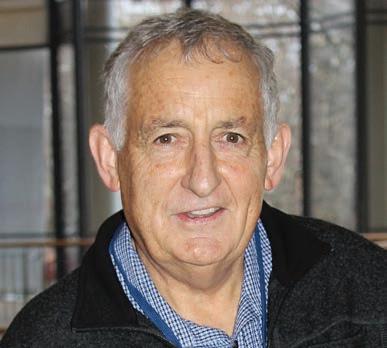
Keith Woodford
MD at AgriFood Systems
kbwoodford@gmail.com
FONTERRA’S sale of its consumer brands to an overseas owner marks the end of an era.
There was always a structural tension within the co-operative between the ideal business structure for ingredients versus consumer brands. Perhaps it was inevitable that there would be an eventual parting of the ways.
Whether or not the sale to French company Lactalis of the consumer-focused division is the best outcome for New Zealand is a moot point. My own preference would have been a public company headquartered in New Zealand, with Fonterra retaining a minority interest.
Despite knowing that change had to occur, with a co-operative not the natural owner of a consumerproducts marketing company, I am uneasy. Retaining a minority interest in a consumer company would have kept Fonterra closer to consumer-market signals. However, the potential largescale investors, such as the public and private KiwiSaver companies, and perhaps ACC, did not see
sufficient value to match the bid from Lactalis. In an open capital economy, it is dollars that count and the Kiwi investors did not front up.
So, if there is someone to blame, it is not Fonterra, but the broader New Zealand investor community.
I have written many times over the past 20 years about the tensions involved in Fonterra, as a co-operative, trying to span the void between marketing of long-life ingredients and short-life consumer goods.
In essence, an ingredients company is technology-based, underpinned by science, logistics and business-to business relationships. In contrast, consumer marketing is very much about understanding consumers and reacting quickly to evolving trends. The leadership and thinking skills needed for these two types of business are very different. Another fundamental difference between these two types of business is capital intensity. Also, a global consumer business needs considerable staff in each market. Top-down decision-making does not work in a fast-moving consumer business. Head office has to understand and respond quickly to the specific complexities of each market.
This is only possible if the key decision-makers are deeply involved in-market. Whiz-bang tours of a few days by executives and governance-board members do not cut the mustard.
I recall back in 2006 first talking with Fonterra directors about the merits of a two-company model, with the consumer-focused company majority funded by external capital. I and others sowed the seeds, but those seeds, if they ever sprouted, soon withered. Essentially, the directors and executives of those times thought
they could do it all.
Perhaps they could have done it all, but they were misled by their own rhetoric as to how to go about it.
During those early years of Fonterra, particularly from around 2005 through to about 2015, I was doing a lot of international travelling. That included multiple trips both to China and across South America, building on my earlier in-country exposures to those cultures from way back in the 1970s. I kept seeing things that Fonterra was messing up in the market place.
Fonterra is a very different company now to what it was even five years ago. Its ingredients business is much more efficient than in the past. Under chair Peter McBride, the board has decided to focus on the things it does best.
Within the broader public, there has been a lot of misunderstanding about Fonterra’s consumer business. In fact, most of the products sold by that business have not been using New Zealand milk. Instead, Fonterra has been procuring the milk in the country of destination, processing the milk in that country for consumer products, and branding the products as being Fonterra, with this of course being totally legitimate.
There are two fundamental reasons for this offshore milk production. The first is the challenge of perishable products, with a short shelf life, being transported long distances across international borders. The second is that New Zealand’s supply of milk is highly seasonal, whereas consumer demand for the perishable products is non-seasonal.
Now that divestment of the consumer business has been determined as the path ahead,

I kept seeing things that Fonterra was messing up in the market place.
there is no point in dwelling unduly on spilt milk. The big question now is how can Fonterra maximise returns from specialised ingredients and food-service products?
Food service is another part of the industry about which there is widespread misunderstanding by the general public. Food service requires Fonterra to work directly with in-country chefs from large companies using specialised ingredients and standardised food production systems.
I recall some 15 years ago devouring trial products in Fonterra’s Shanghai food-development kitchen. Since then, the food service category has grown greatly.
Food service involves working close to the market but it is still a business-to-business operation. Increasingly, it refers to specialised products such as mozzarella cheese and bulk-whipped cream.
Of course, it also includes butter, with New Zealand butter derived from grass-fed animals having a distinctive texture and colour.
To date, Fonterra has not done
OFFSHORE: Keith Woodford says it is ironic that Fonterra will continue to own the Anchor brand in China but not in New Zealand or elsewhere.
a good job of educating the commentariat, including some politicians, as to the differences between food service, specialised ingredients and commodities, and how each sits differently within the value chain.
Fonterra will always produce some commodities. This reflects the simple fact that seasonal production creates a flood of milk in October, November and December, with this creating its own priority of getting the milk quickly to a shelf-stable state. Turning it into whole milk powder which is then sold in bulk is how this is done. Fonterra is a genuine global leader in milk powder. Ironically, milk produced on New Zealand farms requires the addition of imported lactose to meet international commodity certification standards for whole milk powder. This means that New Zealand-manufactured milk powder is not a pure New Zealandsourced product. It contains an imported ingredient.
The bottom line of what is happening in the New Zealand dairy industry is that dairy exports are going to remain New Zealand’s most important export category. Let there be no doubt about that. Within that framework, the specific products will continue to evolve.
Will farmers give away their windfall?
In my view
Nic Lees
Lees is a senior lecturer in agribusiness management at Lincoln University
IT’S been a long time since New Zealand dairy farmers have had such a strong season. With Fonterra’s record $10 payout and the $3.2 billion capital return from the Lactalis sale, there’s a real sense of optimism across the sector, after years of cost pressure, compliance uncertainty and tight cashflows.
The question now is whether that optimism turns into smarter investment – or another round of expansion that could undo the gains.
This has happened before. Back in 2014, record payouts
encouraged farmers to push for higher production. Within a year, global dairy prices had slumped, and payouts dropped by nearly half. The lesson was clear: when New Zealand grows milk volumes too quickly, the global market reacts.
New Zealand accounts for just 3% of the world’s total milk production but dominates global trade in whole milk powder, supplying more than 60%.
Economic modelling has shown a small increase in national production can push down global prices. If this year’s cash injection fuels a new production surge, much of the $3.2bn windfall could vanish through lower prices. There are already signs of renewed growth. Environment
Canterbury has approved four new dairy conversion consents this year. It’s not a flood of new dairy farms, but it’s a signal that
expansion is again on farmers’ minds.
But more milk brings challenges beyond just pricing. Expansion means more cows, more feed, and more pressure on the land and water. In many catchments, particularly in Canterbury, Southland and parts of Waikato, nutrient limits are already being tested. Water quality has improved in some areas, but another wave of intensification could reverse that progress.
Then there’s methane. Livestock emissions still make up nearly half of New Zealand’s total greenhouse gases. Each extra cow makes it harder to meet our climate targets. While methane inhibitors and feed additives are showing promise, they’re still not widely available for pasture-based systems.
So, what’s the smart response this time? The simplest option
is paying down debt. With farm interest rates still high, reducing borrowings provides a guaranteed return and helps weather the inevitable price downturn.
The next step is investing in productivity and efficiency.
Smarter irrigation systems, virtual fencing, and precision technology that measures pasture growth and cow performance can all lift efficiency while reducing inputs and environmental impact. These are investments that often pay for themselves within a few seasons and improve both profitability and compliance.
Farmers can also use this season’s cash to future-proof their environmental performance. Upgrading effluent systems, fencing waterways, and expanding riparian planting protect both water quality and the sector’s social licence to operate.
This year’s windfall offers a
chance to strengthen, not stretch, the business.
Chasing production may deliver a quick boost in milk volume, but history shows it can come at a heavy cost to both price and environment.
New Zealand’s dairy reputation is built on grass-fed, lowemissions production – a model still seen as best in the world. The challenge now is to use this good season to make that reputation stronger, not risk it.
Farmers have always shown they can adapt and lead through change. This time, they can do it from a position of strength proving that resilience, profitability and environmental gains can work together to secure the future of New Zealand dairying.

Harvesting grass added to dairybot chores

Neal Wallace in Friesland TECHNOLOGY Dairy
ROBOTS maybe doing some of the mundane work on Thijs Neutel’s Groningen dairy farm in the north of the Netherlands, but he still has plenty to do.
Three automated Lely milking machines ensure his 200 cows are regularly milked, and a battery-powered Lely robot gathers and mixes a tailored diet from up to 12 silage, grain and concentrate options, and delivers a predetermined serving to each class of livestock.
Out in his fields, Neutel is testing a third robot, the Lely Exos.
Approximately the size of a Toyota Hiace van and also battery driven, it harvests 1400kg of grass at a time, automatically.
It takes this to the cows in the barn, opening and closing doors on the way, delivering predetermined amounts to each pen of livestock.
In summer it can make 10-12 loads a day and for this harvest season will harvest about 2 million kilograms.
As it cuts, it applies liquid fertiliser.
Robot milking systems are common in the Netherlands.
Anne Meestringa, Lely’s centre manager at Heerenveen, said there are 3200 dairy farmers milking 412,000 dairy cows in the northern region of the Netherlands, and 40% use robot milking systems.
The average-sized herd using robots is about 130 cows, with one
farm employing 10 units.
He said reasons for adopting robotic systems include that it is a challenge to find staff, people wanting more personal time instead of being tied to milking all year round, and the wear and tear on bodies.
Meestringa said cows are milked 2.8 to three times a day, often producing 10-15% more milk than if milked twice a day.
A self-professed lover of data, Neutel said robots give him all he needs, which helps him meet farm sustainability criteria for which he receives bonus payments from his dairy company.
He said his system costs more than others in the region but its efficiency means he is profitable.
He also has three wind turbines, which supply more than enough energy to run the farm.
The farm is 68ha of which 17ha is adjacent to his home and cow barn, and another 25ha is
rented. He also rents 10ha to a neighbouring potato grower.
Neutel works with a neighbouring arable farmer who takes some manure, which he regards as one of his biggest challenges.
This past season farmers could apply 55 cubic metres of manure per hectare but next season that will drop to 38m cu/ha, leaving Neutel with 3000m cu to dispose of over and above what he is allowed to apply to the soil.
And it will cost him €25m cu (about $50).
He can apply artificial fertiliser but only if it results in the overall reduction in nitrogen.
Neutel’s parents bought the former piggery and arable farm in 1997 when their previous farm was being squeezed by urban encroachment.
They began milking 50 cows and gradually increased numbers.
Neutel said as the operation

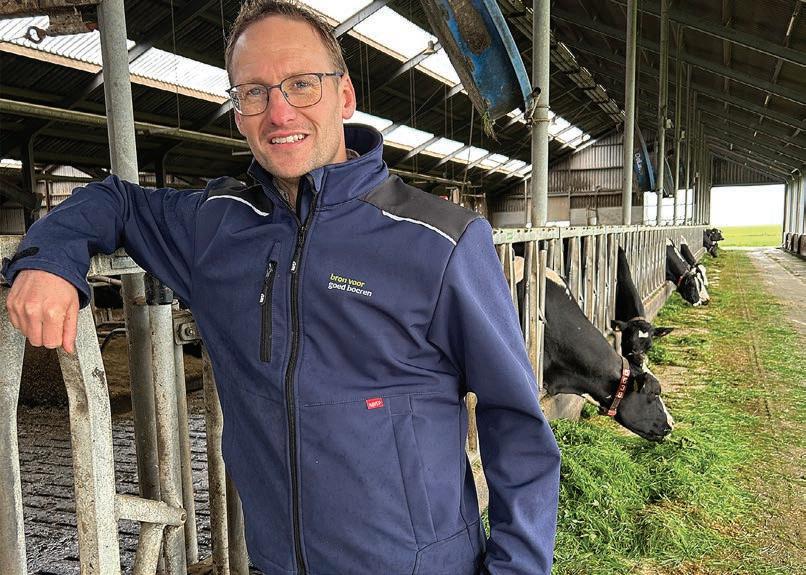
grew so did the workload and they found robots ideal.
“I’m not one to be hammering in nails. I’m the one who looks at how to do things easier.”
They bought their first robot milking system in 2014 and now have three installed.
The robotic feeder followed in 2023 and he finds it indispensable and very accurate.
“We were always precise on how we feed our cows. Now all I have to do is ensure that the kitchen [the feed storage area] is full.”
The grass harvester arrived in April and Neutel is helping Lely with its development.
His workload has reduced to the point that he now employs three casual staff for a combined 35 hours a week.
However, while the robots make life easier, there is still plenty to juggle.
“My arms are getting thinner and my head bigger,” he quipped.
This year his farm will produce 2 million litres of milk at 10,500 l/ cow and at 3.8% protein and 4.7% fat.
Lely was founded in 1948 by two brothers, Cornelis and Arij van der Lely, who initially invented a
finger-wheel hay rake. In the 1990s it evolved into an innovation and technology company.
Meestringa said it is hoped to have the grass harvester in production in the next couple of years but engineers are also looking at other technology. That includes a system to capture ammonium-laden air from cattle urine in barns, another environmental issue European regulators are looking at.
The system will remove the ammonium and change its format to allow it to be recycled as fertiliser.
EUROPE’S CHANGING LANDSCAPE
• Wallace’s Meeting the Market tour has been made possible with grants from Fonterra, Silver Fern Farms, Rabobank, Zespri, Alliance Group, Meat Industry Association, Wools of NZ, Beef + Lamb NZ, NZ Merino, the European Union and Gallagher.
https://www.farmersweekly.co.nz/ meeting-the-market/
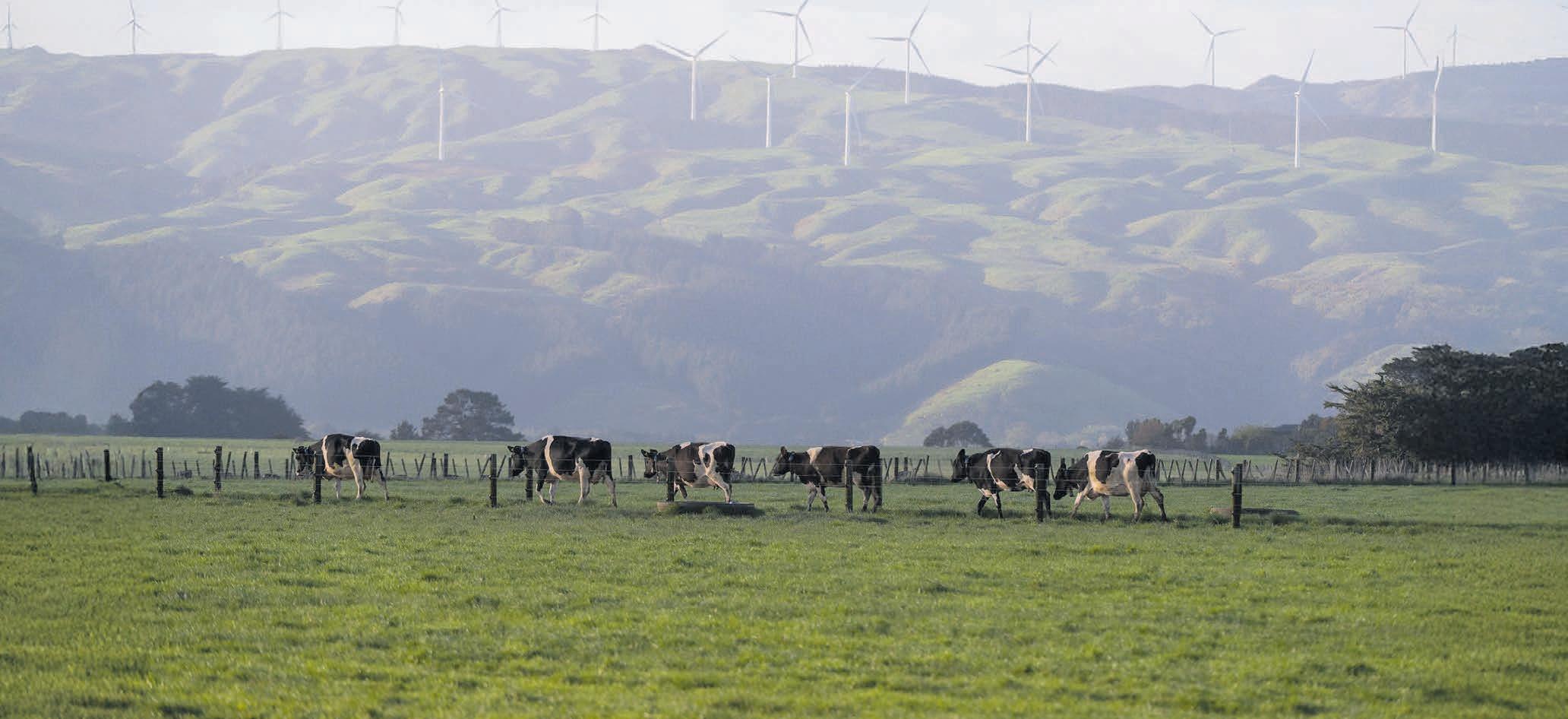

TECH BUFF: ‘My arms are getting thinner and my head bigger,’ says Netherlands dairy farmer and technology enthusiast Thijs Neutel.
ROBOT MILKER: Anne Meestringa, left, Lely’s centre manager in Friesland in the Netherlands, and Jeen Nijboer, Rabobank’s sustainability programme manager, with a milking robot.
Fonterra sale not sugar, but still sweet

Gerald Piddock NEWS Dairy
FONTERRA’S sale of its consumer and Mainland businesses to Lactalis is not a “short sighted sugar hit” as New Zealand First leader Winston Peters put it, but it will give shareholder Andrew McGiven an unexpected cash injection into his Te Aroha farm business.
It will provide a nest egg if dairy prices fall or if on farm costs rise like they have done in the past, he said.
Farmer-shareholders voted overwhelmingly in favour of the sale with 88.47% in support of it and 80.59% casting their vote from a milk solids perspective. The final votes on the divestment were cast at a virtual special meeting held on October 30.
The high percentage of Fonterra shareholders who backed the sale of its consumer business to French
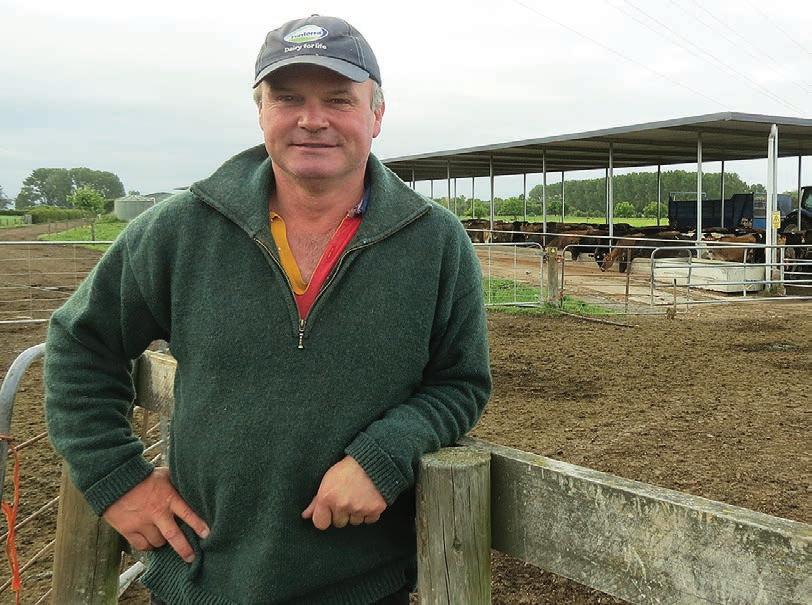
dairy company Lactalis gave the board the mandate it needed to proceed.
While the vote only needed 50%,
the decision was that contentious that a strong majority was needed, he said.
“It’s a clear mandate that the
Research backs profit gains from Halter tech
Staff reporter TECHNOLOGY Dairy
AN AGFIRST-Transform Agri study of Halter’s virtual fencing technology on 10 dairy farms across the country shows that when combined with strong farm management, significant gains in most areas of farm performance are possible.
The study by the two consultancy firms showed the technology enabled gains in pasture use, labour efficiency, animal performance, and environmental outcomes.
On average, these gains resulted in an increase in farm profit before tax of 13.2%. The farms also
harvested 8.9% more pasture and produced 9.5% more milk solids per hectare.
Six-week in-calf rates improved by 4.7%, while empty rates reduced by 2.1%. Several farms reduced staffing needs or hours worked, freeing time for higher-value tasks.
Staff reported less fatigue, shorter workdays, and improved job satisfaction.
Staff across all farms also highlighted improved work-life balance, with more predictable rosters and less repetitive manual work.
Freed-up time allowed teams to focus on monitoring, planning and animal care. From a recruitment perspective, several farms noted
that Halter has made farming roles more attractive to new, tech-savvy employees.
Farmers reported earlier detection of health issues and smoother calving management. Reduced stress on animals contributed to better recovery post-calving.
Farms reduced nitrogen use, improved crop utilisation, and were able to exclude environmentally sensitive areas from grazing during adverse conditions.
AgFirst CEO James Allen said the impact of Halter is largely dependent on the ability of a farm to use the information and technology in decision-making and management.
“What these farms show is
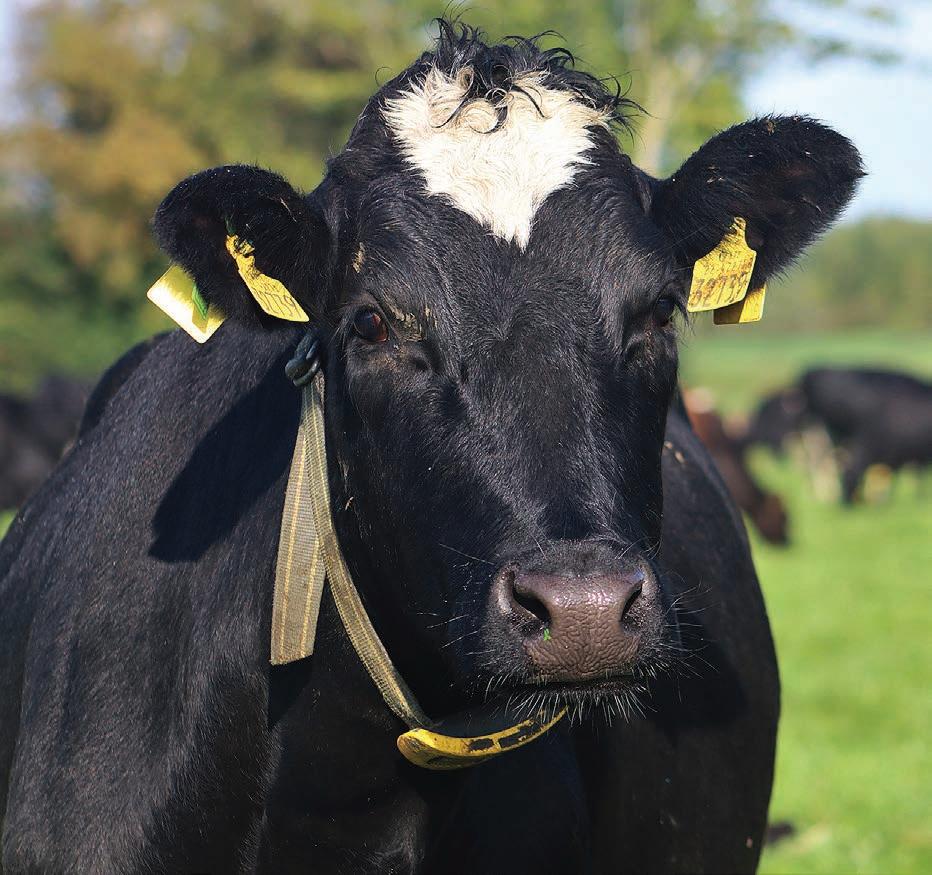
shareholders agree with what the directors have been telling us over the past few months.”
McGiven is a fully shared-up farmer and is aware that while they are enjoying positive returns at the moment, dairy prices are cyclical and those bad times could return.
“A lot of this will be consolidating debt and doing some essential R&M and fixing the balance sheets up.”
It also felt like a payback from when farmers had to buy the shares early on to match their production and the price fell, leaving many with a capital loss, he said.
“It’s nice to claw some of that back.
“As a farmer going forward, my hopes for Fonterra would be that they are able to concentrate and improve efforts in the food service and ingredients business and get better returns out of them which will hopefully keep the milk price
up as well as improving share price and dividend.”
The pressure will also be on Fonterra management to deliver over the next few years once the newly shaped business is in place.
“They have certainly reduced the amount of excuses they have put forward now with getting rid of one business. I think farmers will certainly be expecting a more focused effort on those two remaining business arms.”
Fonterra CEO Miles Hurrell outlined those targets at the special meeting where shareholders voted on the sale.
These included an average return on capital of 10-12% above the five-year average, maintaining the highest sustainable farmgate milk price possible and earning to be at the 2025 financial year levels within three years – offsetting the earnings impact of the divestment and returning more earnings to shareholders through a dividend policy of 60-80%.

that Halter can enable significant gains to be made by effectively optimising the farm’s resources. Halter helps build more sustainable, resilient, and productive dairy businesses.”
Halter’s head of corporate accounts and partnerships, Steve Crowhurst, said the results of the study aligned with the feedback Halter received anecdotally from farmers.
“The findings reflect what



GAINS: A study of Halter’s virtual fencing technology on 10 dairy farms across the country shows that, on average, gains resulted in an increase in farm profit before tax of 13.2%.
farmers tell us: when paired with good management and a willingness to change how they farm, Halter increases profitability. Our technology helps farmers be more efficient with their pasture, make more informed decisions, and create more balanced, sustainable rosters.’’
Crowhurst said he was pleased to see the higher returns even on farms that were already performing above regional averages.
WORK STARTS NOW: Te Aroha farmer Andrew McGiven says farmers will be expecting Fonterra to deliver on its re-shaped business in the years to come.
Record milkflows but softer prices ahead
Sector perspective

OCTOBER proved an eventful month for the dairy industry, both domestically and internationally.
The SGX-NZX Global Dairy Seminar in Singapore early in the month, followed by the International Dairy Federation (IDF) World Dairy Summit in Chile, brought together producers, manufacturers, traders, financial institutions and policymakers.
Record attendance at the SGXNZX Singapore seminar reflected strong industry engagement, while the summit in Chile provided valuable opportunities to exchange insights on evolving market requirements and sustainability priorities.
A common theme across both events was the widening gap between milk supply and demand. Most major exporting regions continue to report year-on-year (YoY) growth in milk production, while global demand has yet to keep pace.
This imbalance has been
reflected in recent Global Dairy Trade (GDT) results, which have shown softer prices. For New Zealand, the decline has been moderate compared with sharper corrections in the United States and European Union, yet downward pressure persists.
New Zealand’s September milk production, released in October, marked a fifth consecutive record in milksolids, with 228.8 million kilograms (kg MS) collected – up 3.4% YoY and 3.8% higher seasonto-date. Total milk collected reached 2.67 million tonnes, a 2.5% increase on the same month last year. While this was not a record in tonnage, the stronger milksolids result alongside modest volume growth indicates greater use of supplementary feeding.
This aligns with seasonal conditions. The NZX Pasture Growth Index (PGI) recorded a -5% decline in September versus the same month in 2024, as cooler temperatures constrained pasture growth across key producing regions. Waikato, Canterbury, and Otago all saw reduced growth potential, Taranaki remained steady, and Southland recorded a slight gain.
The NZX Milk Production Predictor currently anticipates October milk output to be around 1% higher than last year – which would still represent the strongest October result since 2020.
Outside New Zealand, milk production trends remain mixed.
The United States Department of Agriculture (USDA) remains closed due to the federal government shutdown, delaying release of September production data. The European Union reported a 2.9% YoY increase in August milk collections, while China saw a -4.5% decline for the same month.
Australia’s September production slipped -0.4%, and Uruguay posted
its first YoY decline in ten months (-1.4%). Argentina, however, continues to expand, recording a strong 9.9% YoY increase in September.
This growth in global supply continues to weigh on prices. GDT Event 389 saw the Price Index fall -1.6%, led by declines in whole milk powder (-2.3%), butter (-3.0%), and mozzarella (-11.8%). The following Event 390 recorded a further -1.4% drop, with whole milk powder, skim milk powder, cheddar, and mozzarella easing -2.4%, -1.6%, -1.9%, and -5.3% respectively.
Limited new buying activity is expected before key consumption periods – Christmas, New Year, Chinese New Year and Ramadan.
The sentiment continued into the first November event (Event 391), where the index fell for a fifth consecutive time by -2.4%, led by declines in WMP, butter, AMF and cheddar (-2.7%, -4.3%, -1.9%, and -6.6% respectively).
New Zealand’s dairy trade data remains encouraging despite softer prices. September export volumes rose 11.9% YoY to 209,271 tonnes, while export values increased 24.6% YoY, supported by firm prices relative to last year. Whole milk powder exports climbed 14%, with shipments to China surging 60% YoY and up 1% for the seasonto-date. Exports to Asia excluding China rose 3% and to the Middle East 14%. Other exporting regions also showed momentum, with total US dairy exports increasing 6.1% in July, and Argentina and Australia up 29.9% and 4.5% YoY respectively in August. Europe, by contrast, saw its export volumes

fall -11.7% YoY in August. Looking ahead, the near-term demand outlook remains cautious. Much of the product for December and January delivery has already been contracted through prior GDT events and off-platform sales, meaning limited new buying activity is expected before key consumption periods – Christmas, New Year, Chinese New Year and Ramadan.
While global dairy demand remains steady overall, it is not yet strong enough to offset ongoing production growth across major exporters.
For New Zealand farmers, the outlook is one of cautious optimism.
On-farm production remains robust despite variable weather, and international demand for quality product endures – albeit at softer levels than earlier in the season.
Market balance will depend on how quickly demand strengthens into the first quarter of 2025. For now, maintaining production efficiency and cost control will be essential as the market adjusts to a phase of plentiful supply and moderate prices.






OPTIMISTIC: For New Zealand farmers, the outlook is one of cautious optimism. On-farm production remains robust despite variable weather, and international demand for quality product endures.
Cristina Alvarado Alvarado is NZX head of Dairy Insights










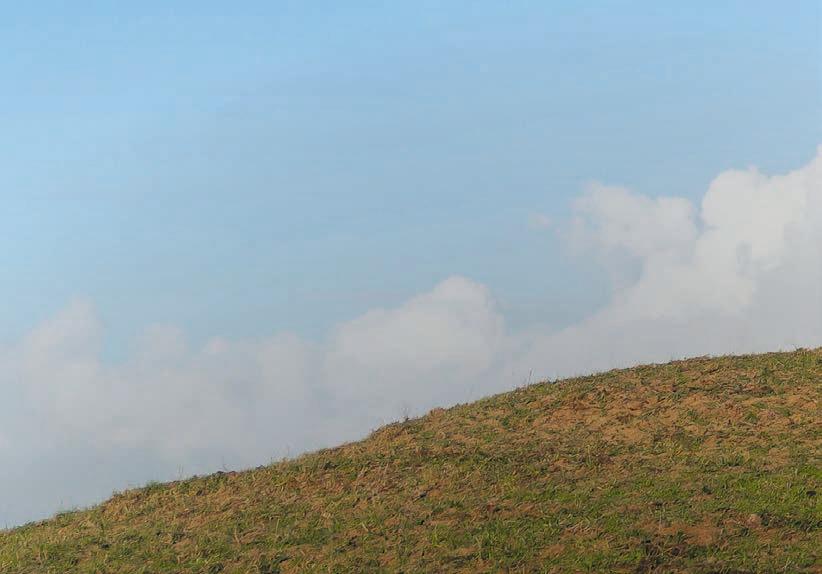
rts: Summer Sma


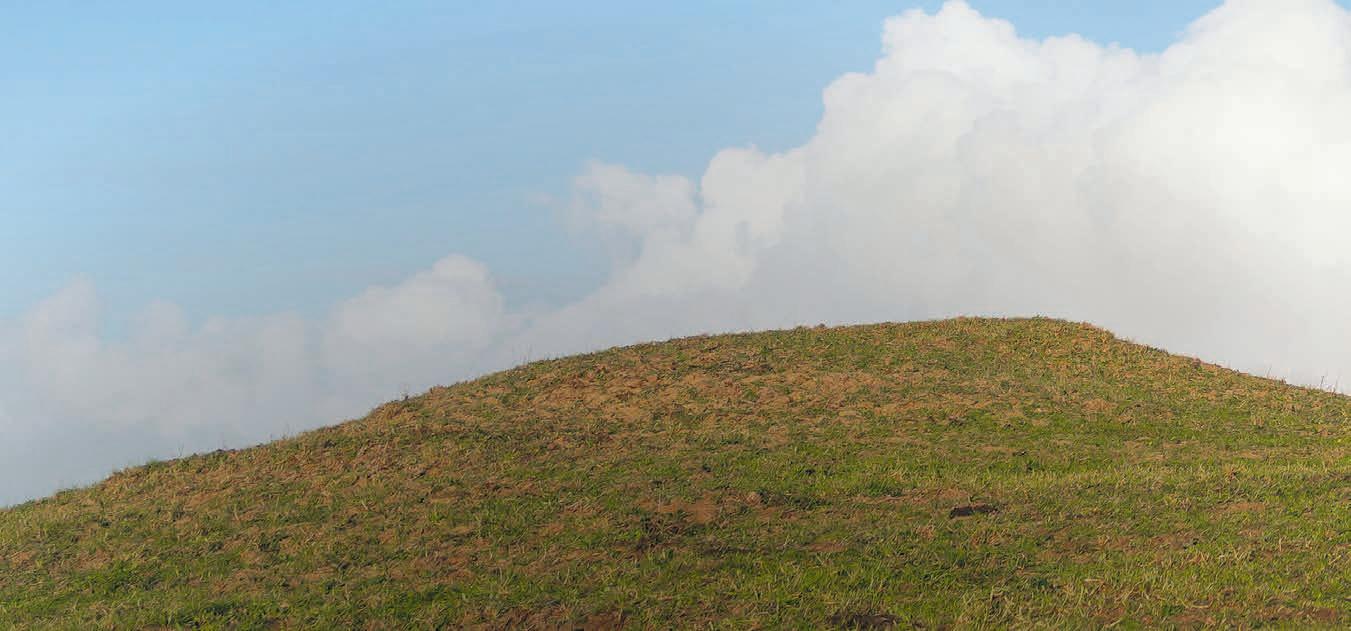
Your essential toolbox for the season ahead
As the days heat up and soil moisture drops, summer brings both challenges and opportunities on-farm. From managing feed and supplements to keeping cows cool and milking efficiently, ever y decision counts toward maintaining productivit y and animal wellbeing.
To help farmer s get the best from the season, D air yNZ’s Summer Smar ts brings together science -backed tool s, farmertested know-how, and timely advice all in one place It ’ s designed to help farmer s plan, respond quickly, and make confident, profitable decisions throughout summer
Har vesting more feed
A s summer dr y sets in, slowing pasture grow th means less leaf emergence and tighter feed supply Matching your grazing round to the three -leaf stage can help maximise pasture grow th and set you up with stronger cover s heading into autumn
A feed wedge is one of the most valuable tool s for this period It gives a clear snapshot of what ’ s happening across your farm highlighting surpluses, deficits, and where to a djust grazing pressure With this information, you can take the guesswork out of feed planning, make timely
grazing decisions, and reduce stress knowing your nex t steps are backed by data
Learn how to use a feed wedge for smar ter pasture management on the Summer Smar ts page
Using supplements efficiently
When used wisely, supplements can play a key role in managing feed deficits and suppor ting cow per formance through summer Aligning your supplement plan with your pasture grow th cur ve helps you maximise pasture utilisation, crop har vest, and overall profitabilit y
If conditions tighten unexpec tedly such as during drought or irrigation restric tions
D air yNZ’s Supplement Price Calculator a nd FeedChecker tool s can guide you toward the most cost- effec tive choices
These tool s help ensure ever y kilogram of supplement fed deliver s a positive return in milk income
Spend less time milking with MaxT
Looking to save time in the shed without losing produc tion?
D air yNZ’s MaxT (maximum milking time) approach allows you to reduce milking duration while maintaining milk output and udder health



By milking cows for a set time based on milk volume, MaxT defer s residual milk to the nex t milking, where it can be har vested more efficiently The benefits are big, as there is less time milking, lower labour demand, and reduced elec tricit y and water use, all while keeping produc tion steady
Find out more on how to apply MaxT and improve your milking efficienc y this summer at dair ynz .co.nz/max t
Finding the right milking inter val
Flexible milking options, such as milking 10 -in-7 or 3-in-2 schedules, can help reduce workload and stress while maintaining produc tion Research shows that when managed well, flexible milking c an have minimal impac t on yield while improving work-life balance for farm teams
Use D air yNZ’s Milking Time Planner to explore how different milking schedules could fit into your operation this summer
Reducing heat stress
Hot days can take their toll on cows When they can’t release excess body heat, they eat less, produce less milk , and show signs of discomfor t Ever y region in New Zealand experiences heat stress
conditions over summer, so prevention is key
There are five priorities to focus o n:
• Providing shade
• Ensuring a good water supply for drinking and cooling
• Adjusting milking times and routine
• Reducing cow walking time in the heat of the day
• Providing sprinkler s in the shed or yard
Before the heat arrives, work with your farm team to ensure ever yone can recognise the signs of heat stress in your herd and make a plan with steps on the best ways to prevent it
Your summer toolbox
From managing heat stress to milking smar ter and making the most of ever y pasture leaf, Summer Smar ts brings together prac tical, science -based tool s to help you stay produc tive and resilient this season
Visit dair ynz co nz/summersmar ts to explore the range of resources
If you ’ ve been impac ted by recent weather events, we have additional resources to help you prepare for summer Learn more at dair ynz co nz/adver se - events






Put Summer Smarts to work on your farm. Su m m e r
Dair yNZ’s Summer Smarts brings together the tools, timing, and advice that help you take the season in stride


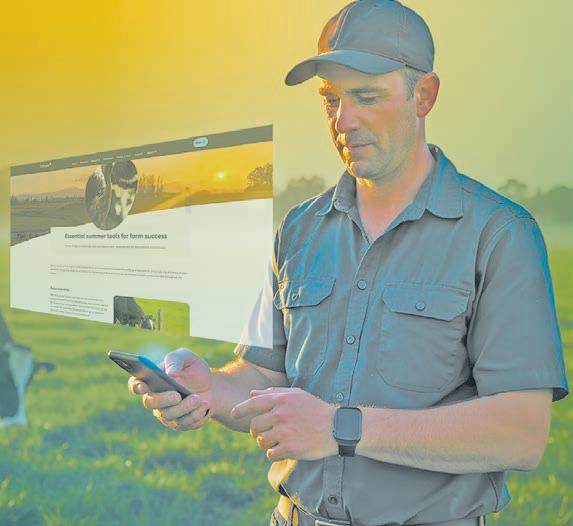


From harvesting more feed to flexible milking, it’s research that’s already working for your farm
dair ynz co nz/summer-smarts
Finding a good fit on farm

Samantha Tennent PEOPLE Health
IN HER five brief years, Toni Dean has stayed in 17 backcountry huts throughout New Zealand, thanks to her parents’ dedication to staying active away from the farm. Anna and Bobby Dean also have two younger daughters, Autumn and Fleur, and love keeping active with them all.
Before becoming parents, Anna and Bobby were competitive multi-sport athletes, trying their hand at a range of events. They have both competed in the Kathmandu Coast to Coast many times, with Bobby even coming third when Autumn was three months old, and Anna winning the two-day event back in 2016.
The One NZ Godzone adventure race has been another hot event on their calendar. They have also dabbled in triathlons, running, mountain biking and biking events. If it’s about pushing your body, commitment and determination, they’re there.
But since having young kids, their usual training slot has become family time, with activities like dinner and getting ready for bed rather than training outside.
“A lot of people who do sport with a nine-to-five job do their training in the morning, even with kids,” Anna said.
“But it can be pretty hard with farming as we’re usually working at that time.”
So they’ve wound back to simple running events and tramping for now, till the kids are a bit older.
Anna and Bobby have two farms near Maketu in the western Bay of Plenty. One is a 62 hectare farm with 200 cows, wearable technology and an internal rotary that they own, and they are herdowning sharemilkers on Bobby’s parents’ farm, which is 185ha with 660 cows and a 44-a-side herringbone shed.
They run the two farms together as “one herd” since they’re only 3km apart.
“It feels like we’re farming 860 cows with two cowsheds,” Bobby said.
“We calve everything on the big

farm, which keeps the small farm as a one-person job. So everything comes from the small farm in the springer transition, about 10 days to two weeks before calving.
“Once 50 of the smaller farm’s cows have calved, we take them back and start that shed.”
Each herd is tagged with a different colour, and both farms are operating between Systems 4 and 5, with in-shed feeding and baleage in the paddock.
They used to have a contract milker on the small farm while contract milking themselves on the larger one. This season, they’ve switched to herd-owning
sharemilking and brought on a herd manager for the small farm after investing in wearables.
“After having a third child, everything off the farm paused more; we were stuck at home a bit more, so farming became our sport,” Anna said.
They felt the small farm wasn’t achieving its potential and wanted to be more involved. Bobby covers the herd manager’s days off, and he’s found he has more of a finger on the pulse now.
“It is more work, but I enjoy it,” Bobby said.
“Production is way up and everything is going really well.”
After having a third child … we were stuck at home a bit more, so farming became our sport.
Anna Dean Maketu
Bobby grew up farming on the land they now run and met Anna while she was working in Mount Maunganui after studying in Wellington. He asked if she’d like to try contract milking with him, and she left her job to join him.
Bobby already owned the small farm, and his parents wanted to start winding down, which is how the younger couple got the opportunity to begin contract milking.
Their three-year plan involves significant debt reduction; the payout and interest rates will determine how quickly that happens.
They’re also aiming to build a house on the smaller farm and get back into multisport.
“We’d like to unload our workload a little bit eventually, but it has to be sustainable,” Bobby said.
“We’re trying to figure out what balance is for us and our family.”
And they’ll keep doing whatever events they can, even if it remains ultra running races for now.
BNZ offers new farmers finance, mentoring
Staff reporter NEWS Finance
ASPIRING dairy farmers can apply for reduced deposit requirements and mentoring for two seasons through the BNZ First Farm proposition.
The offer covers the first step towards farm ownership or buying cows for sharemilking, said BNZ general manager for agribusiness and corporate banking, Dave Handley. Every approved customer will be paired with an experienced farmer mentor who has been through the
highs and lows of herd or farm ownership and knows what it takes to make a farming business succeed.
“One-on-one support from a proven operator in key areas such as business planning, budgeting, cashflow, governance and people decisions will make a real difference from the beginning.
“Industry surveys show only onethird of New Zealand farmers have a formal succession plan.
“We know there are opportunities to make the next step into ownership more straightforward for the next generation while ensuring valuable farming knowledge isn’t lost.
“First Farm does both through more accessible bank funding and structured mentorship which connects experienced farmers with those striving to purchase their first farm or herd, making the transition between generations both more attainable and sustainable,” Handley said.
Deposit requirements and prices are assessed on a case-by-case basis. Eligibility, lending criteria, terms and conditions and fees apply.
While initially focused on dairy, BNZ plans to offer similar initiatives to other agricultural industries in the future.

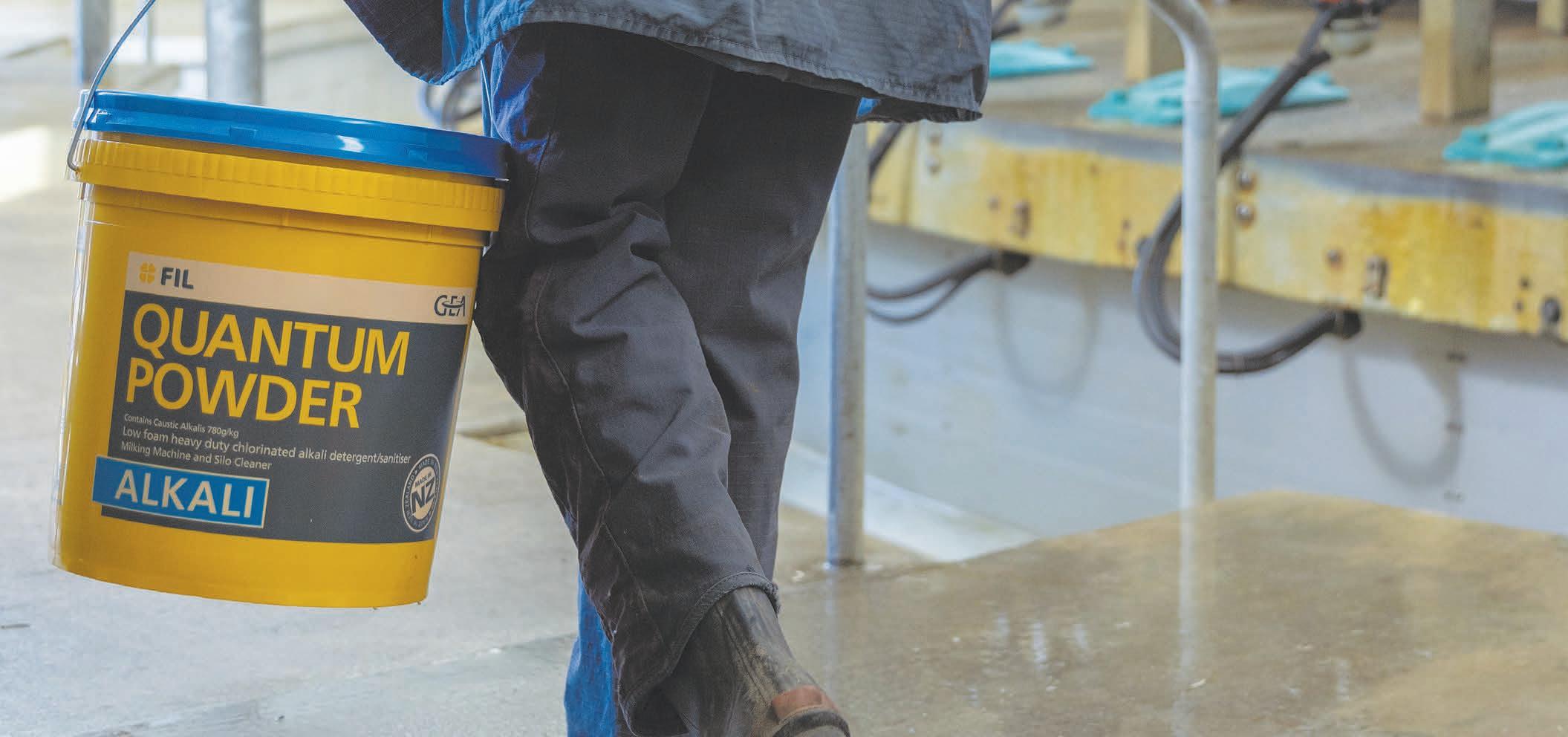





HEADING OUT: Anna and Bobby Dean make family time active, sharing their love of tramping and the outdoors with Toni, Autumn and Fleur. Photo: Supplied
STEP ONE: Dave Handley says the First Farm offer covers the first step towards farm ownership or buying cows for sharemilking.
Mastitis screening tool funded for UK release
Staff reporter TECHNOLOGY
Animal health
NEW Zealand agritech company Bovonic has secured funding from Cultivate Ventures to help launch its mastitis screening device QuadSense in the United Kingdom and Ireland.
Cultivate Ventures has joined the company’s investor group for the first time, in an investment round led by Pacific Channel, and also included Enterprise Angels and NZVCs.
The investment will enable Bovonic to transition from a fastgrowing New Zealand startup to a global agritech exporter.
QuadSense is a self-installable, in-line mastitis screening device designed for conventional milking systems, which make up more than 90% of dairy sheds worldwide. The technology gives farmers real-time visibility of udder health during milking, helping detect mastitis early and protect both production and animal welfare.
Since its commercial launch, more than 4000 QuadSense units have been installed across approximately 150 New Zealand farms.
“The support from Cultivate Ventures is a strong endorsement of both the technology and the problem we’re solving for farmers,” says Bovonic founder and CEO Liam Kampshof, who has recently relocated from New Zealand to the UK to oversee the rollout.
“Dairy farmers are looking for tools that are accurate, affordable and easy to install. That’s what QuadSense is delivering on farm, day in and day out.”
Cultivate Ventures backs highgrowth agri-tech and agri-food technologies transforming the future of food production.
“We’ve been tracking Bovonic’s progress closely over the past few years and are pleased to participate alongside Pacific Channel and other investors in this latest funding round,” said Cultivate Ventures’ director Marcus Henderson.
“Bovonic stands out as one of New Zealand’s most promising agri-tech ventures, and we’re excited to support Liam and his team as they continue to scale their operations domestically and start to pursue global market opportunities.”
Pacific Channel chief investment officer Dr Rob Powell said Bovonic
exemplifies the type of scalable, science-backed innovation New Zealand can lead on globally.
“QuadSense addresses a major productivity and welfare challenge for dairy farmers worldwide. This next phase shows how New Zealand-developed deep-tech can scale internationally to deliver both economic and environmental outcomes.”
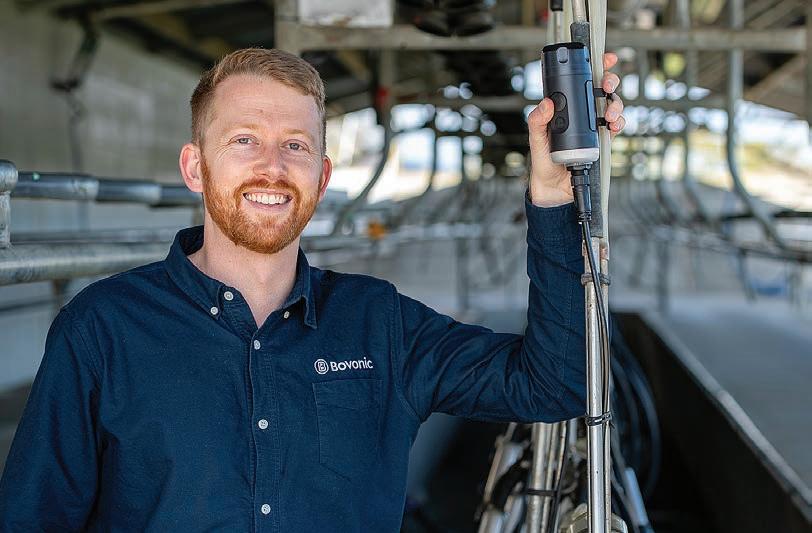
AgriZeroNZ backs N start-up Āmua
Staff reporter TECHNOLOGY
On farm
AGRITECH company Āmua has secured $1.2 million from AgriZeroNZ to accelerate development of its cow wearable technology.
The Canterbury start-up, based on a hill country farm near Waiau, is developing a smart device that enables the rich nitrogen in cow urine to be used as fertiliser – potentially solving freshwater nitrate leaching and nitrous oxide emissions at their source.
The patented device works by
spreading concentrated urine patches out across the paddock.
Data modelling by AgResearch in the Bioeconomy Science Institute has indicated that this could provide comparable pasture growth to synthetic nitrogen, reduce nitrous oxide emissions by up to 95% and nitrate leaching by up to 93%.
Āmua CEO and co-founder Roger Johnson, who farms in North Canterbury, said the company developed the technology to transform the naturally abundant on-farm nitrogen (N) resource into an eco-friendly and cost-effective fertiliser.
“Nitrogen is a key nutrient for grass growth and there’s plenty of it naturally available on farm, yet as a farmer I can spend around $150 per cow on synthetic fertiliser and a lot of it is being lost into the groundwater or air.
“By spreading the cowproduced nitrogen across the paddock, we can increase the effectiveness of this natural fertiliser.”
AgriZeroNZ chief executive Wayne McNee said it is pleased to back the unique solution, which marks its first equity investment in nitrous oxide mitigation.
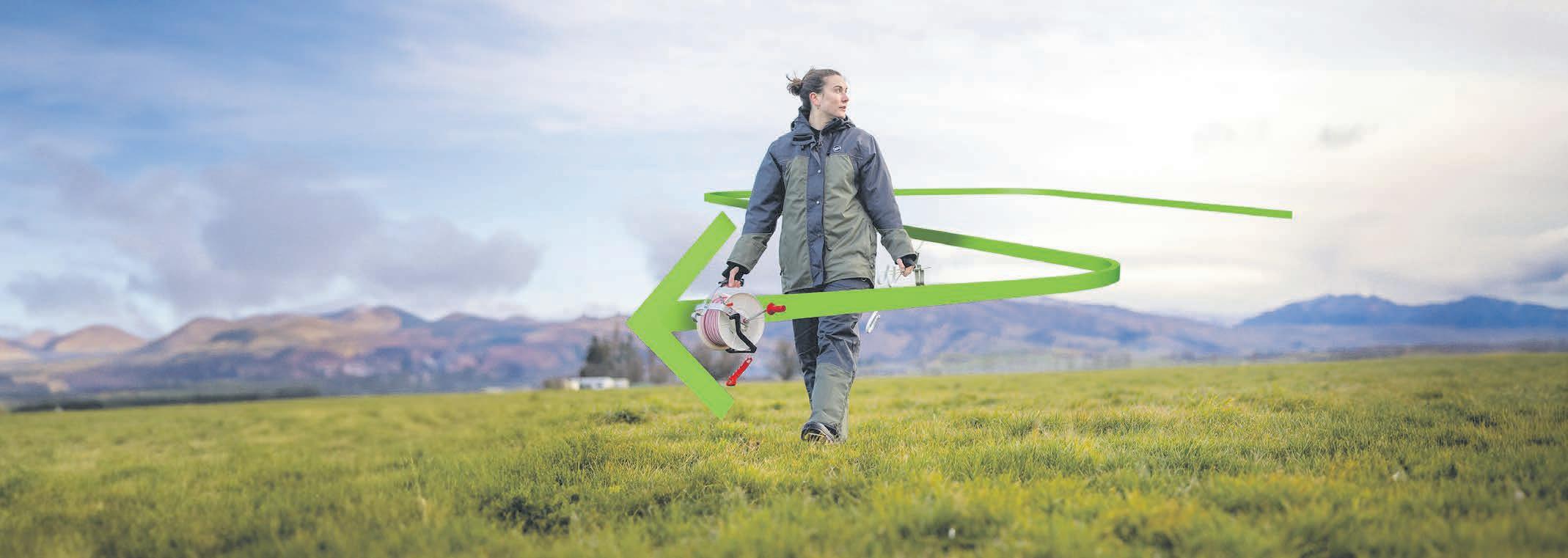




REALITY: Bovonic founder and CEO Liam Kampshof said the funding will help the company make its first major offshore launch a reality.
Farming amid fierce competition for land

Neal Wallace in Utrecht NEWS
Environment
THE challenges facing Dutch dairy farmers are obvious, looking out over Richard de Bie’s Hoogland farm.
De Bie milks 130 cows on flat, fertile country near Houten in the Netherlands. The expanding city’s relatively new multi-storey apartment blocks are obvious in the near distance. Roads crisscross the countryside and a bike path skirts the boundary.
Land is precious in the densely populated, central European lowland country.
“At the moment everybody wants land,” said De Bie, a fourthgeneration dairy farmer. His family have been milking
EUROPE’S CHANGING LANDSCAPE
cows for 140 years. De Bie’s grandfather initially leased the current farm until his father bought it.
He farms 66ha, of which they own 21ha and lease the rest. De Bie recently added another 15ha leased block several kilometres away, on which he will grow corn for stock feed.
As well as the 130 cows he runs 65 young stock.
The inability to buy or lease adjacent is another challenge for Dutch farmers, but even if they can, regulations require farmers pay NZ$18,000 for every additional cow they run.
“There is little chance you can
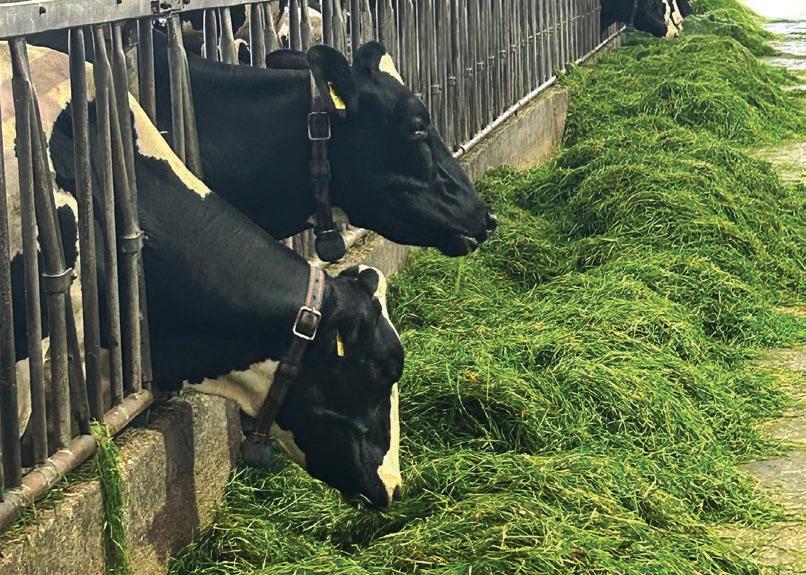
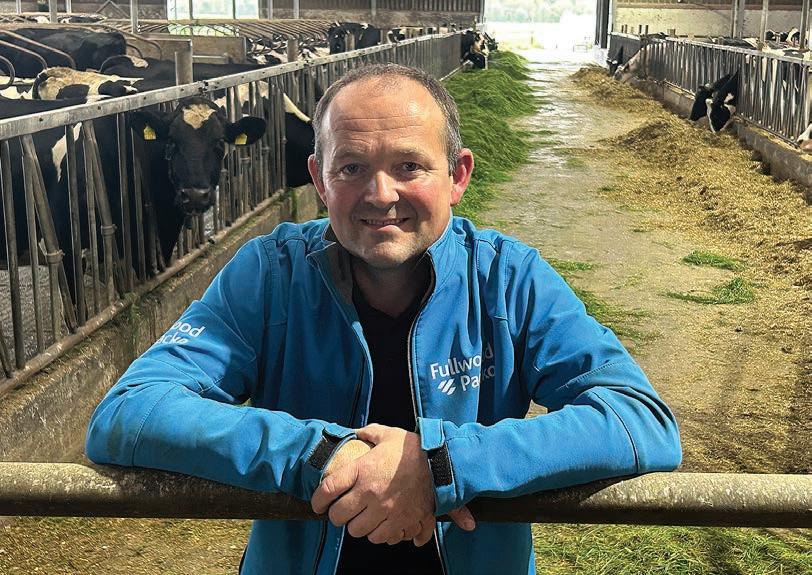
buy your neighbour’s ground,” he said.
Land in his region sells for NZ$265,000 to NZ$285,000/ha.
Over summer his cows spend time grazing outside, but just 15ha is available for grazing due to roads.
De Bie said that grazing the cows outside means he can qualify for one of the several sustainability premiums his dairy company, FrieslandCampina, will pay.
By grazing cows outside for 120 days a year for a minimum six hours a day, the milk is classified as pasture milk and De Bie receives a €1.3c/l premium.
Other premiums can be earned from maintaining an older herd, keeping bobby calves, managing greenhouse gas, nitrogen and ammonium emissions, growing more stock feed than is bought in,
US reputations are being built around NZ dairy

Neal Wallace in Chicago MARKETS Dairy
THE attributes of New Zealand dairy are being used to differentiate and promote food products in which it is an ingredient in Fonterra’s key United States market.
Elisa Giusti, Fonterra’s executive vice president for global markets ingredients growth, said the US has always been an ingredients market for the co-operative, but business there has grown exponentially in the past three years.
That growth has been built on recognition of NZ as a producer of grass-fed milk from farmers practising the highest standards of animal welfare.
“These are attributes consumers identify with and which they consider as being good and healthy for them.”
Giusti gave the example of Lucerne Dairy Farms, who sell grass-fed butter imported from NZ.
It will be sold through retailer Albertsons to tackle the US’s No 1 butter seller, Ireland’s Kerry
Gold, which is also promoted as being made from grass-fed milk.
“Fonterra is the ingredients supplier rather than owning the brand and it is an opportunity to bring NZ dairy onto the shelves,” said Giusti.
Dairy protein is now ubiquitous, and it is seen as a food that aids people’s health.
NZ-sourced dairy is being used as an ingredient in products as diverse as infant formula, confectionary, cheese and butter, through to protein that helps the aged and products to nourish those who are ill.
Establishing brands in a market as complex and mature as the US will always be expensive and challenging, Giusti said.
She said NZ dairy is in demand with companies seeking it as an ingredient due to its high quality and coming from desirable production systems which can enhance their own attributes.
The market for organic milk is also rapidly growing, driven by demographies that have sufficient disposal income and who want and are prepared to pay for healthy food.
“People’s health is having a
bigger importance in their lives than previously,” she said.
Because consumers identify dairy as a high-quality source of protein and NZ’s production systems as safe and animal friendly, Giusti does not believe there is a risk of dairy ingredients being replaced by alternative plant-based or fermented proteins.
“Quality has become important to consumers and an example of that is dairy.
“Not all protein is equal and dairy protein is one of the highest quality proteins people can consume.
“They’re not like-for-like.”
She believes alternative protein will help feed a growing population, but it will be complementary to instead of replacing dairy.
Giusti said Fonterra is selective about the companies it supplies dairy ingredients to, seeking those offering the highest value proposition, the ability to leverage value and a point of difference.
battery unit so he can store and release it at the most economically advantageous times.
Managing manure is one of the biggest challenges facing Dutch farmers, said De Bie.
To meet European Union nitrogen limits for manure, he said, he would need 130ha of land on which to apply it, and that equation has just got tougher.
The regulations next year reduce the volume allowed to be applied from 200kg N/ha to 170kg N/ha.
Next year he will have to pay to have 3000 tonnes removed at a cost of about €30/tonne.
A contractor may have an outlet or it could be dried and sold as garden fertiliser.
maintaining permanent pasture and sympathetically managing at nature and the landscape.
By meeting those various standards, De Bie can earn up to €2.50/100 litres, which comes from a fund farmers and the dairy company contribute to.
Last year, including premiums, he received €0.55/litre for milk of 4.4% fat and 3.6% protein.
Offering sustainability premiums allows his dairy company to promote and charge premium prices for milk with production attributes that consumers value.
Three years ago De Bie installed 800 solar panels and is now selfsustainable in energy, potentially generating five times the volume of energy that he uses.
To fully use the return on the export of surplus energy to the national grid, he has installed a
De Bie finds it ironic that regulators control the application of manure, but he can apply whatever artificial fertiliser he chooses.
It suggests lawmakers want fewer cows.
“It’s not about the environment because we can buy fertiliser; they want us to run less cattle.”
He has few other land use options, saying his grandfather tried unsuccessfully to grow apples on the farm.
“There is a reason why we farm cows.”
The rules create uncertainty about how many cows they will be allowed to farm in the future.
“It is not straightforward for making long-term decisions,” he said.
“We don’t know what will happen in the next few years, but we do know the Netherlands will produce less milk than we do now.”

She has spent her career in the US food sector, working with consumer brands and food service and now ingredients, but said she has never been more excited than she has in the past three years.
That excitement is due to the positioning and strength of NZ dairy in the US ingredients market and the opportunities being created.
“We’ve been deliberate and focused on where we see our right to win so we can maximise the return for farmers.”
In the 2025 financial year,
INGREDIENT: Elisa Giusti, Fonterra’s executive vice president for global markets ingredients growth, with US products that use NZ dairy as an ingredient.
Fonterra’s ingredients business earned $17.5 billion in revenue, up from $14.8bn the previous year, returning a gross profit of $2.2bn, an improvement on the $2bn in 2024.
Wallace’s Meeting the Market tour has been made possible with grants from Fonterra, Silver Fern Farms, Rabobank, Zespri, Alliance Group, Meat Industry Association, Wools of NZ, Beef + Lamb NZ, NZ Merino, the European Union and Gallagher.
https://www.farmersweekly.co.nz/ meeting-the-market/
TARIFFS, TRUMP AND THE NEW AMERICA
UNCERTAIN FUTURE: Netherlands dairy farmers like Richard de Bie say regulations are creating uncertainty.
RULES: Cows on Richard de Bie’s farm. The farmer is convinced that lawmakers in the Netherlands want fewer cows on the land.
Power cuts hit cow health in Southland

Gerhard Uys NEWS Dairy
SOMATIC cell counts in dairy herds spiked across Southland after some herds missed repeated milking due to continuing power outages.
On Thursday October 23 gale force winds smashed through parts of the South Island, leaving a trail of destruction. Some dairy farms were left without power for days and Southland mayor Rob Scott kept the state of local emergency in place due to ongoing recovery needs.
Clinical head at Vetsouth, and Rural Support Trust deputy chair in Southland Georgette Wouda said in meetings she attended milk processors reported that somatic cell count (SCC) numbers on some farms spiked to about 1.5cells/mL million.
Despite milking returning to normal as milking resumed on some farms, there are still significant rises in cell counts and
a high frequency of mastitis in some herds.
She said contributing factors were not only delays in milking, but whether cows had to be moved to other sheds where they could be in contact with herds that could pass on mastitis, and if water supply was disrupted and equipment could not be properly cleaned.
She said farmers should look for signs of mastitis when putting cups on, and do rapid mastitis tests if there is any doubt. They should also be vigilant for lameness.
An explainer on somatic cell counts on LIC’s website says somatic cells are mainly white blood cells that increase in number in response to the bacteria that cause mastitis. They are always present in milk.
Somatic cell counts identify cows with sub-clinical mastitis. Cows with sub-clinical mastitis show no physical signs of infection but they are often less productive.
Director at NS Vets in northern Southland Morgan Greene said many cows were not milked for 36
hours, and SCCs were through the roof in the area.
He found instances of bulk tank somatic cell counts sitting well above 900,000cells/mL.
The target count is below 150,000cells/mL, Greene said.
Farmers should look for signs of mastitis when putting cups on, and do rapid mastitis tests if there is any doubt.
Actual increases in mastitis were not much higher than normal, increasing roughly 1%, he said. Greene said farmers with generators did not have trouble, but the cows of those without power took a knock.
Once milking kicked off again, the cell counts on farms dropped, but on average stayed 40,000cells/ mL to 50,000cells/mL above normal.
He said moving a generator between farms is not an easy undertaking and he had to

acknowledge farm teams who worked really hard to keep cogs turning.
Southland farmer Jon Pemberton said teams on his two farms in Brydone could continue milking with the help of a generator, but he lost about a day’s worth of milk on each farm because he couldn’t chill it and it had to be dumped.
He said his generator broke, but he managed to source a backup from an Otago farm.
Open Country was helpful and would fit in with his milk schedule, picking up milk as soon as he finished milking, he said.
A DairyNZ spokesperson said short-term spikes in SCCs should settle within two to five days once normal milking resumes.
To manage high cell counts cows should be fully milked out at every milking and proper hygiene and treatment protocols should be followed.
Partnership set to cut farm data duplication

Gerald Piddock TECHNOLOGY Data
DAIRYNZ’S DairyBase and Farm Focus have formed a new partnership to remove data duplication and provide faster benchmarking insights for farmers.
Dairy farmers can now connect their Farm Focus account directly with DairyBase, which simplifies data sharing, reduces admin time, and ensures their information contributes to industry-leading benchmarking.
The partnership is about making life easier for farmers and enabling smarter and more timely decisions to be made, said DairyNZ head of economics Mark Storey.
“Farmers have also told us they
want benchmarking to reflect what’s happening now – not what was happening 12 months ago. This is the first step in that journey, as we work on greater
partnerships with other key sector organisations.”
According to DairyNZ’s 2023 Workplace Productivity Survey, farmers spend around an hour per

day doing office work, including data entry.
DairyBase has supported thousands of farmers to understand and compare their farm performance for over 20 years. Farm Focus brings more than 40 years of experience in farm financial management.
Farm Focus CEO Auriga Martin said benchmarking gives farmers an edge in a tight season.
“Our top farmers use benchmarking to fine-tune performance, spot what’s working, and know when to pivot. We’re excited to make that process easier than ever through this partnership.”
The partnership with DairyBase is an opportunity for dairy farmers to have more real-time production data at their fingertips, he said.
“Having that reciprocal data transfer between Farm Focus and DairyBase is a real value add in the day-to-day tracking, profitability and performance against financials and business viability.”
The two systems also complement each other well. Farm Focus is aimed more at financial data whereas DairyBase focuses more on production data, Martin said.
This season, farmers are encouraged to sign up and connect their accounts early, allowing access to early benchmark reports.
The partnership will also help move from static, annual benchmarking to bi-monthly updates starting in the 2026/27 season – giving farmers more relevant, timely insights to support their planning throughout the year.




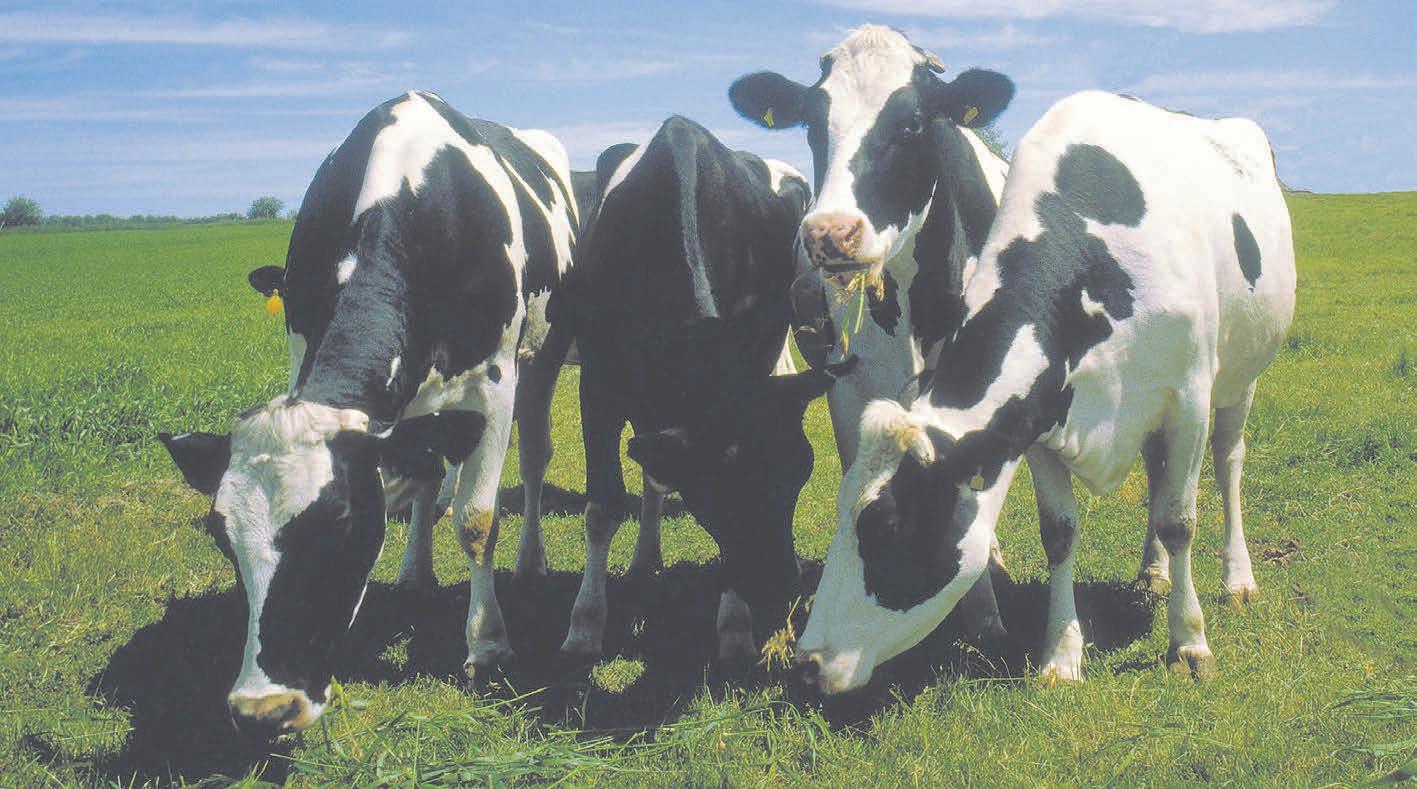
HIGH: Director at NS Vets in northern Southland Morgan Greene says with many cows not milked for 36 hours, somatic cell counts were through the roof in the area.
STREAMLINE: The partnership between DairyNZ’s DairyBase and Farm Focus should reduce data duplication for farmers.
Owl Farm marks 10 years of dairy excellence
Staff reporter
THE 10-year anniversary of Owl Farm – a joint venture between Lincoln University and St Peter’s School, Cambridge – highlights the continued success of the North Island’s first demonstration dairy farm, say those behind the partnership.
Lincoln University ViceChancellor Professor Grant Edwards said Owl Farm has delivered lasting benefits over the past decade, including showcasing innovation, enhancing education, demonstrating best practices and inspiring students to pursue studies in agriculture, agribusiness and environmental science.
“The Owl Farm partnership has created a direct pathway for St Peter’s students to attend Lincoln University,” Edwards said.
These visits help bridge the gap between urban and rural perspectives and allow students to see science in action.
Lauren Roberts Lincoln University
“Many more students also visit Owl Farm, and these on-farm experiences have inspired them to study at Lincoln. Several of these graduates are now giving back to the industry as leaders in farming, consulting and research.
“This strong pipeline highlights the value of linking secondary and tertiary education through a working demonstration farm such as Owl Farm.”
At the time of forming the joint venture in 2015, Lincoln University and St Peter’s School also welcomed industry partners, who are currently DairyNZ,
Fonterra, PGG Wrightson Seeds, Ravensdown and Westpac. They have contributed expertise to help improve Owl Farm’s performance and transfer knowledge and technology to students, farmers and beyond.
Lincoln University’s Professor Keith Cameron, who has been involved since the venture’s inception, played a key role in the construction of a wetland area on the farm.
Funded by the Waikato River Authority and Waikato Regional Council, the wetland treats farm drainage water before it flows into the Waikato River. The project also supported two Ecoblitz events, when Lincoln University staff trained students and community members to record changes in wetland biodiversity.
“Owl Farm provides leadership for dairy farmers and the wider community by demonstrating bestpractice sustainable agriculture systems,” said Cameron.
“Over 2000 people visit the farm each year, including schoolchildren who are given the opportunity to explore and expand their knowledge of agriculture and related disciplines.
“It is crucial to attract young people to careers in the food and fibre industries, with export earnings from our primary production sectors making up the vast majority of Aotearoa’s export income.”
Governance committee member
Professor Alison Bailey said the farm remains committed to being a leader in best-practice dairy systems.
“Owl Farm takes a holistic approach to farming, with its key performance indicators designed to meet best practice standards for a sustainable farm business of the future.
“These indicators span animal wellbeing, farm performance, environment, quality workplace, business health and community,” said Bailey.
Lincoln University Farms Educational Facilitator Lauren Roberts plays an active role at Owl Farm, making the journey north to Cambridge to host on-farm workshops for secondary school students across the Waikato region.
“As a specialist land-based university, Owl Farm is an important joint venture that connects us in the South Island with industry and prospective students in the North Island.
“In addition to the annual Owl Farm Open Day, which is open to the public, I host school groups on the farm to highlight responsible and sustainable dairy practices.
“These visits help bridge the gap between urban and rural perspectives and allow students to see science in action,” said Roberts.
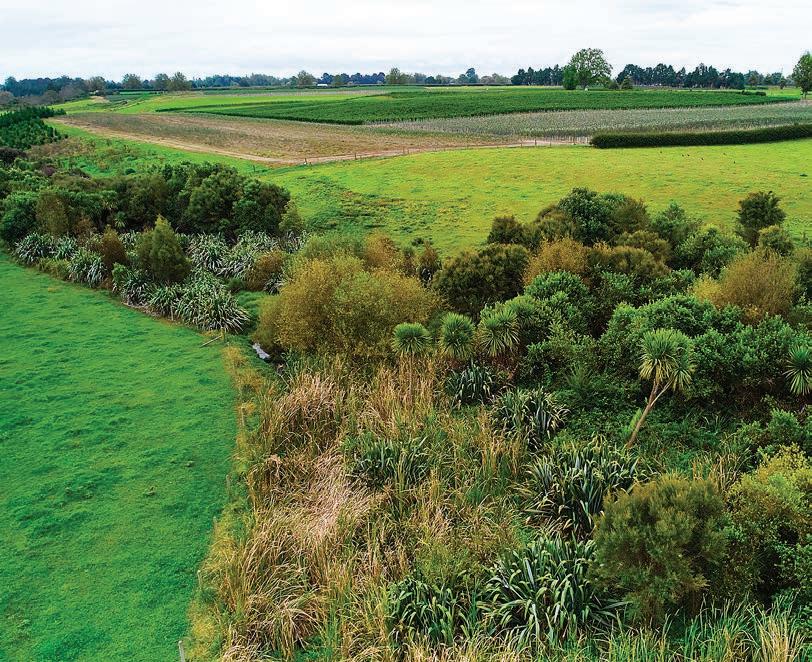
Fine weather kept milk tankers full in September
Staff reporter NEWS
FAVOURABLE weather has continued to drive up milk production, with Fonterra’s latest Global Dairy Update reporting a 2.5% increase for September compared to the same period last year.
Production for the 12 months to September was also up, by 1.8% on the previous comparable period.
The co-operative’s milk collections for September were 179 million kg MS. In addition to favourable weather, a strong milk price and high margins incentivised farmers to maintain higher production levels.
Season-to-date collections are 316.3 million kg MS, 3% above last season.
In the North Island, 107.9 million kg MS was collected, 3.1% higher than September last season. Soil moisture was high across most regions, being at or near field capacity for all areas except for some drier areas in Hawke’s Bay.
Temperatures throughout the North Island were slightly cooler than historical averages, which also supported higher milk yields.
Season-to-date collections are 212.1million kg MS, 3.3% above last season.
In the South Island, milk collections for the month were 71.1 million kg MS, 2.2% up on September 2024.
Sunlight levels were well above average for most of the South Island, with temperatures at or slightly above the historical average in milk producing regions.
Season-to-date collections are
104.2 million kg MS, 2.3% above last season.
Elsewhere, European Union milk production increased 2.7 % and, in the United States, production lifted 3.3% in August compared to the same period the year before. New Zealand dairy exports increased 10.9%, or 19,977 tonnes in September compared to the same period the year before. This was due to higher export volumes of WMP and fluid milk products, which increased 14.4% and 21.7%, or, 8470t and 7649t, respectively, partially offset by lower export volumes of AMF.
Exports for the 12 months to September were up 1.6%, or 56,304t, on the previous comparable period. The increase was mainly due to higher exports of cheese, partially offset by lower export volumes of WMP and SMP.

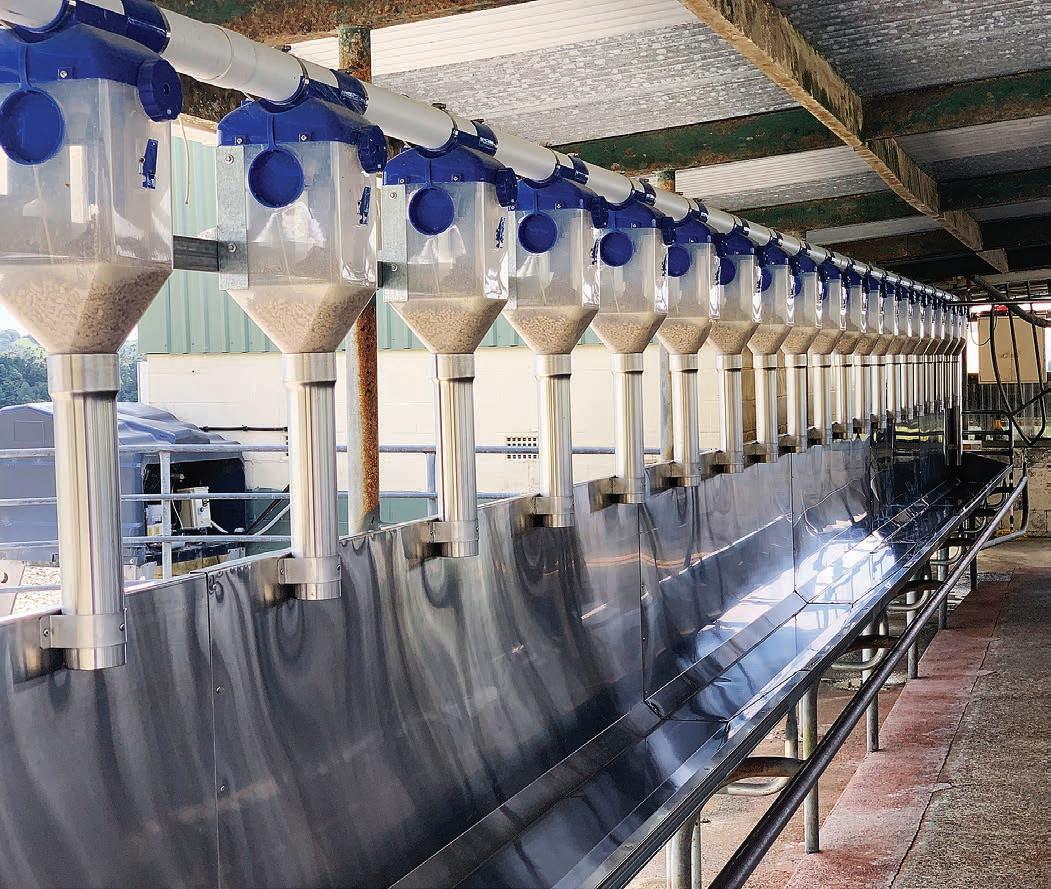
VISION: Lincoln University’s Professor Keith Cameron, who has been involved since the venture’s inception, played a key role in the construction of a wetland area on the farm.

Wilding pine photo speaks volumes
nyone wondering if livestock and good farm management make a difference in controlling wilding pines need look no further than Mike Lindsay’s Omahau Hill Station.
A single photo tells the story: where livestock graze, the land stays largely free of weeds and contorta; where they don’t, wildings take over.
More than 40 years ago, a hectare on the station near Twizel was fenced off and made rabbit-proof for a study on the pest’s impacts on biodiversity.
The research has long faded into history, but the fenced block remains – now serving as a vivid demonstration of how quickly wilding pines flourish without grazing.
“I bought the block 25 years ago and it was about then that the odd wilding was starting to appear. We’ve cleared it two or three times since,” Lindsay says.
“I’ve lost count of how much time and money we’ve spent on wilding control – one year the bill reached $60,000.”
The photo shows that his ongoing efforts, combined with livestock grazing outside the fenced hectare, keep the rest of the land free of weeds and wilding pines.
Four years ago, under the National Control Programme and using Taskforce Green, Lindsay says an “eye-watering amount” was spent killing pines on the 2300ha station – but he wasn’t impressed.
“I know the property best but they
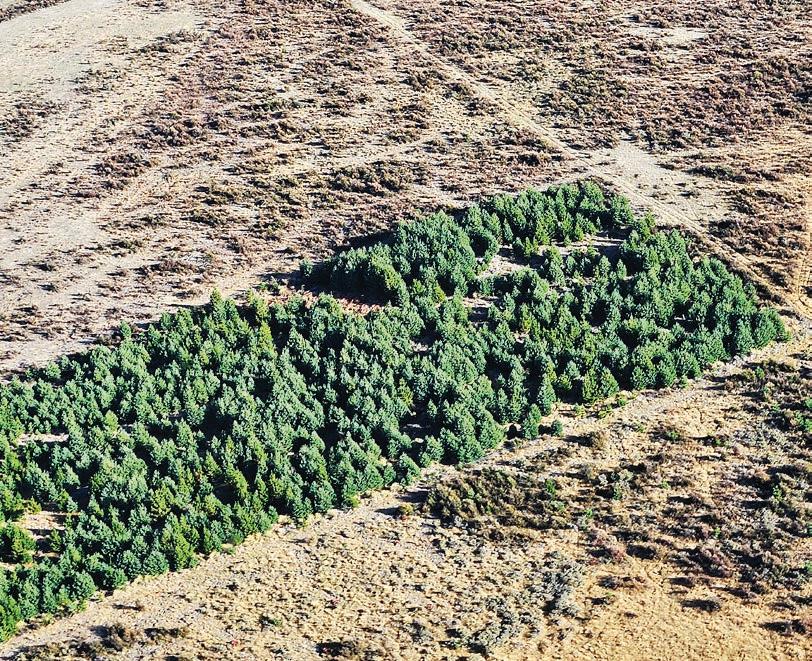
took no notice of my ideas about where to focus their efforts.
“It seems to me half of the budget was swallowed up in meetings, hiring side-by-sides, hi-vis and trackers, and a lot of other palaver.”
He’s pessimistic about keeping wildings in check going forward.
“We’re just downwind from the real wilding pine powder keg of Pukaki Downs.
“On my boundary, I’ve got DOC country littered with bloody pines.
“With the nor-westers we’ve been getting this spring, we’ll have seeds raining down on us.”
Ecologists and high-country farmers say wilding pine seeds can
travel 20-30 kilometres, and Lindsay agrees.
“I was out one day with my son-inlaw and we found a cone with dry seeds. I shook the seeds out above my head and some floated for at least a minute before they hit the ground.
“You can imagine what happens in a strong nor-wester.”
Recently, Federated Farmers Meat and Wool vice chair Simon Cameron accompanied the team from Q+A as they looked at how Molesworth Station is being reseeded with wilding pines from the nearby Branch/Leatham area.
Meat and Wool chair Richard
Dawkins says the story highlighted how the wilding challenge falls awkwardly between the portfolios – and stretched budgets – of the Ministers for Biosecurity (Andrew Hoggard), Agriculture (Todd McClay) and Conservation (Tama Potaka).
“To their credit, the ministers are listening,” Dawkins says.
“The issue is accessing the funding required. Currently, this just doesn’t seem to rank high enough on their priority list.
“Ahead of next year’s budgets decisions, they’ve tasked us with putting together case studies: five examples of land retired from grazing under tenure review that have had poor conservation outcomes; five where grazing concession bureaucracy is blocking progress; and highlighting where inefficiencies exist.”
It won’t be hard to find compelling examples, Dawkins says.
“Through tenure review, over 800,000 hectares of high-country land was retired from grazing over the past 30 years.
“We challenged senior officials to name one parcel of land that is in better shape now than when farmers were on it. They couldn’t do it.”
The Government currently puts $10 million a year towards wilding control work, with top-ups.
Federated Farmers is pushing for that to be upped to $50 million for the foreseeable future, as control work has fallen way behind in recent years.
“With any significant programmes, there will be possible
efficiency gains, and they must be examined. But the reality is more investment is required. Efficiency around the edges will not address this problem,” Dawkins says.
One solution that doesn’t cost any money, in fact it generates income, is streamlining DOC’s long-winded grazing concessions processes and also getting farmers and livestock back on conservation estate land in a pastoral lease.
We challenged senior officials to name one parcel of land that is in better shape now than when farmers were on it. They couldn’t do it.
Richard Dawkins Federated Farmers Meat and Wool Chair
“It’s a free solution, and the lease payments could generate tens of millions to be reinvested in wider wilding control work.”
Federated Farmers are due to meet again with the Ministers later this month.
“We’re at a crossroads. These decisions will change the face of New Zealand farming for the foreseeable future.
“Do we want weed and pest infected countryside, or do we want it well managed, pristine and generating an income which benefits all New Zealanders?
“We’re more than happy to do the grunt work if they’re ready to act on it.”
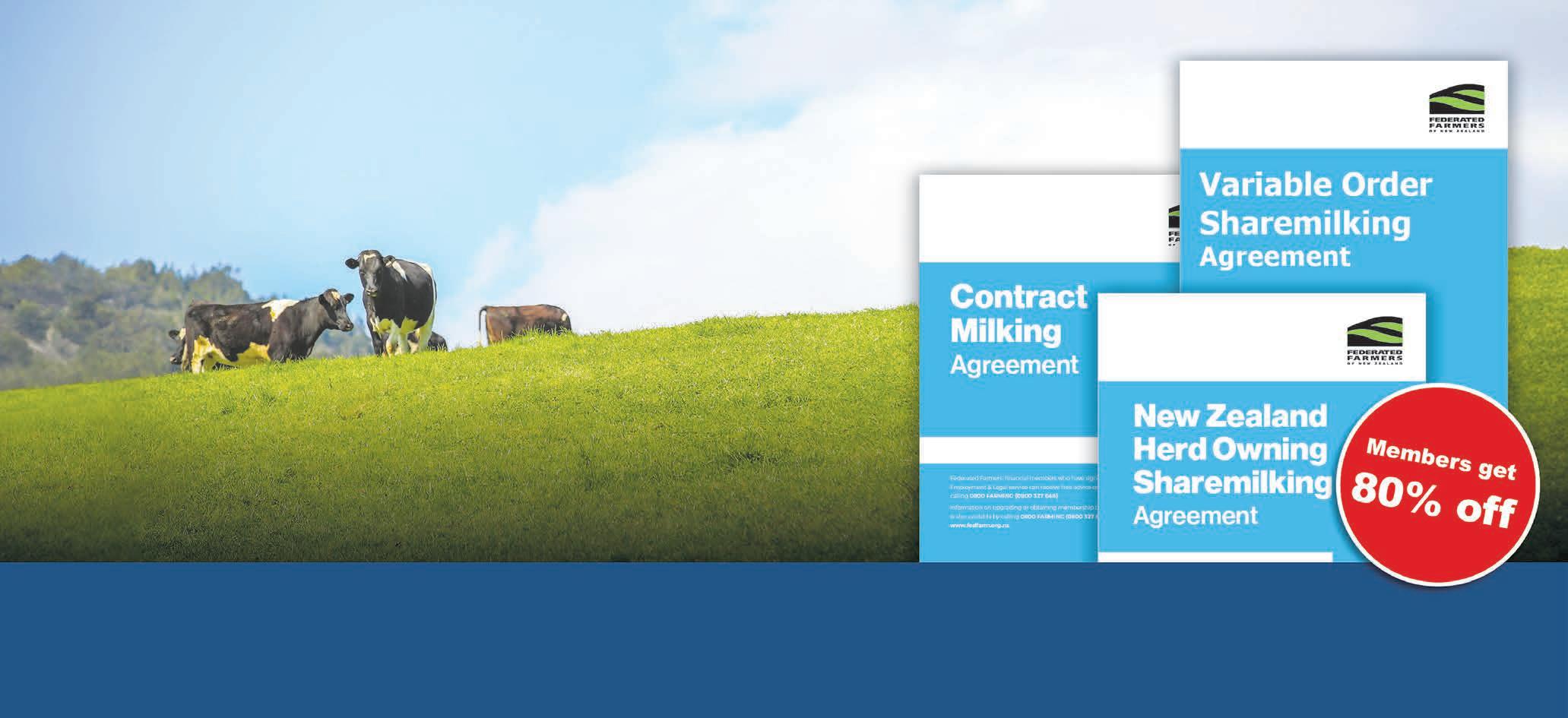
WILDING WARNING: A fenced off hectare of land on Omahau Hill Station highlights how wilding pines flourish when there’s no livestock or farmer control dealing to seedlings.
Feds back global call for split-gas reporting
Federated Farmers has joined agricultural organisations worldwide in calling for countries to adopt a split-gas approach to reporting agricultural greenhouse gas emissions.
The joint international statement has been submitted to parties to the United Nations Framework Convention on Climate Change (UNFCCC).
It urges global policymakers to recognise the fundamental differences between short-lived gases like methane and long-lived gases such as carbon dioxide.
Federated Farmers president Wayne Langford says the global alignment shows growing recognition that treating all emissions the same is flawed and has unfairly penalised pastoral farming nations like New Zealand.
“For too long farmers here and around the world have been bogged down in unscientific and unrealistic climate policy that doesn’t reflect how methane behaves in the atmosphere,” Langford says.
“Methane from livestock is shortlived and already trending down in New Zealand, yet under the old system farmers were expected to shoulder the burden of targets that simply weren’t grounded in credible science.
“At times it’s felt like absolute madness.”
Langford says the joint statement strengthens New Zealand’s longstanding global advocacy for a more accurate and transparent climate reporting system.
“This united call sends a very clear message to policymakers globally – if we want climate action that actually works, we must follow science.
“The warming impact of methane is fundamentally different to carbon dioxide, and our reporting metrics must acknowledge that.”
The current approach under the Paris Agreement uses the GWP100 metric – the Global Warming Potential over a 100-year timeframe – which bundles all greenhouse gases into a single measure of carbon dioxide equivalent.
Scientists have repeatedly warned this can misrepresent the true warming effect of methane, particularly in countries where emissions are stable or falling.
The joint statement argues that relying on GWP100 obscures the different warming impacts of the gases, makes it harder to see what emissions each sector is truly contributing, and creates policy that can over- or under-estimate warming.
“The science is clear that long-lived gases must get to net zero to stop contributing to further warming,” Langford says.
“But methane only needs to decline gradually to achieve the same effect.
“Only a split-gas approach gives governments the clarity they need to set realistic, achievable targets while still driving down emissions.”
Langford says the approach also supports the intention of the Paris Agreement to protect food security.
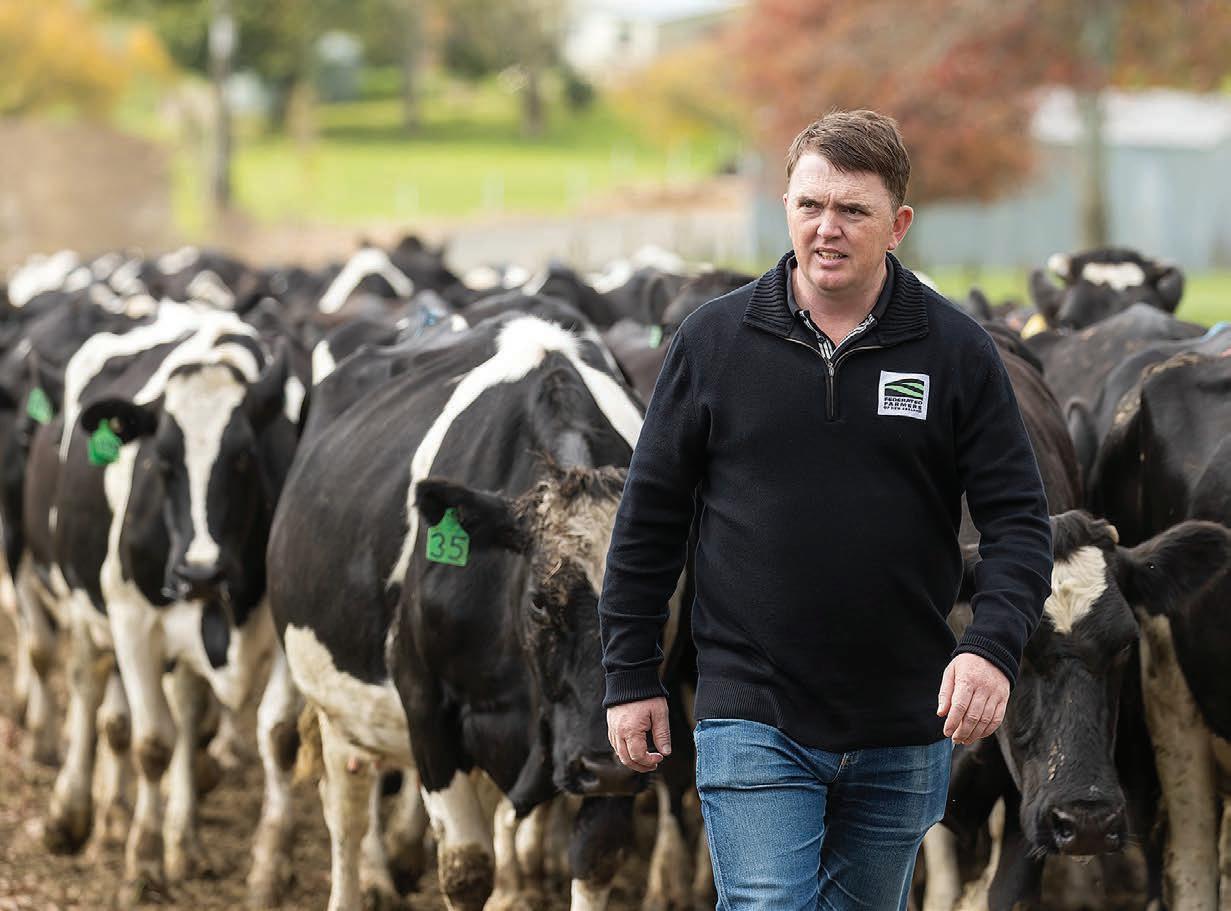
backing greatly improves the likelihood of policy change.
a major step in the right direction –but the job isn’t done.
The warming impact of methane is fundamentally different to carbon dioxide, and our reporting metrics must acknowledge that.
Wayne Langford Federated Farmers president
“We have a growing global population that needs affordable, high-quality food.
“New Zealand farmers are among the most climate-efficient producers of meat and milk in the world.
“If we shut down production here, it only shifts emissions to lessefficient countries – and that helps nobody at all.”
The joint statement includes signatures from organisations across 14 countries, including Argentina, Australia, Ireland, the United States and the UK.
Langford says the international
“Targets under the Paris Agreement are nationally determined, so there’s no need to reopen negotiations, but there is real strength in numbers,” he says.
“Rightly or wrongly, our Government has been wary of taking a split-gas approach on its own.
“This joint statement has the potential to create a global group of countries moving in the same direction – giving governments confidence to act.”
The move also aligns closely with recent changes to New Zealand’s own domestic climate policy.
In October, the Government committed to adopting methane targets grounded in the independent Methane Science Review.
It announced it was investigating the adoption of a split-gas approach for international commitments as well.
Langford says that shift represents
“We’ve finally seen signs of a much more practical and fair approach from Government, and that’s been a huge relief for farming families who’ve felt the pressure for far too long,” he says.
“But now we need to make sure that same science-based approach carries through to our international targets.”
“Why would we take one approach at home and then another on the world stage?”
Langford says the sector remains committed to doing its part.
“We want to keep improving and we’re proud of our record as worldleading low-carbon producers,” he says.
“All we’ve asked for is that policy recognises the science and keeps food production front and centre.
“This is about building a climate policy environment that is practical, fair and capable of delivering real warming reductions.”


Direct to Industry






HOME AND AWAY: Wayne Langford welcomes domestic progress on methane policy, urging Government to match it with split-gas reporting on the world stage.
Forests fuel feral pig challenges in Taupō
Taupō farmer Ruby Mulinder says her region’s battle with surging pest numbers should be a clear warning about the risks of large-scale afforestation.
Most of the forestry around Lake Taupō was planted 15 years ago to protect the lake’s water quality. It’s predominantly production forestry, rather than planted purely for carbon credits.
But Mulinder says the consequences of that blanket approach to forestry are hitting local farmers hard and the rest of New Zealand now risks repeating the same mistakes – at a much larger scale.
“What Taupō looks like today probably paints a clear picture of what other areas will look like in the future – with all the associated problems and challenges that come with it.
“In hindsight, full blanket afforestation into pines has created some pretty serious issues that we’re now battling.”
Mulinder, the local Federated Farmers meat & wool chair, says one of the biggest pest challenges in the Taupō catchment is feral pigs.
“We already see fairly extensive populations on our farm. The largest mob we’ve seen is 54, but we’ve had reports of mobs of 100, and on some properties they’re coming right up to the roadside and into front paddocks.”
She says the pigs aren’t just a nuisance – they carry serious economic and environmental consequences for farmers and rural communities.
“Pig damage is really complex because they do so much soil damage.
“You might have spread fertiliser and have a paddock ready to grow feed for lambs or lambing ewes.
“Then you go out in the morning and a few hectares will be turfed
up. Any nutrients you put on that paddock won’t be growing pasture anymore, so you’ve effectively created a leaching sink.”
This loss of nutrients affects both productivity and the environment.
“That’s actually what irks me the most,” Mulinder says.
“Farmers are trying to support New Zealand’s economy and make environmental improvements, but things like this totally undermine those efforts.”
The problem is you could easily hunt pigs four or five times a week and you still wouldn’t make a dent.
Ruby Mulinder
Federated Farmers Rotorua –Taupō meat & wool chair
Weed spread, damage to fences, pastures and crops, soil loss in Taupō’s pumice soils after heavy rain, disease such as leptospirosis, and ticks – the problems quickly stack up.
“We’ve also seen examples in the catchment of pigs targeting newborn lambs, as well as
mismothering ewes and lambs.
“It’s brutal for those farmers. We put a lot of time and effort into pig control leading up to lambing to try and avoid this scenario.”
Mulinder and her husband Sean Nixon own a 142ha farm near Tihoi on the north-western shores of Lake Taupō.
Surrounded by vast pine estates and bordering Department of Conservation land, the farm is a perfect highway for pests, she says.
“We’ve tried reaching out to forestry neighbours. Once, they sent someone for a one-night shoot and shot one pig. That’s not sustainable pest management.
“The problem is you could easily hunt pigs four or five times a week and you still wouldn’t make a dent.”
Recreational hunting helps keep pigs moving but, without a focus on sows, it often does little to suppress the population, she says.
“The strategic approach has to focus on whole mobs. Sows only need one male to reproduce, so if you only take out the big boars with hooks, you’ve achieved nothing.”
New tools like thermal scopes, GPS ear tags and tracking collars could

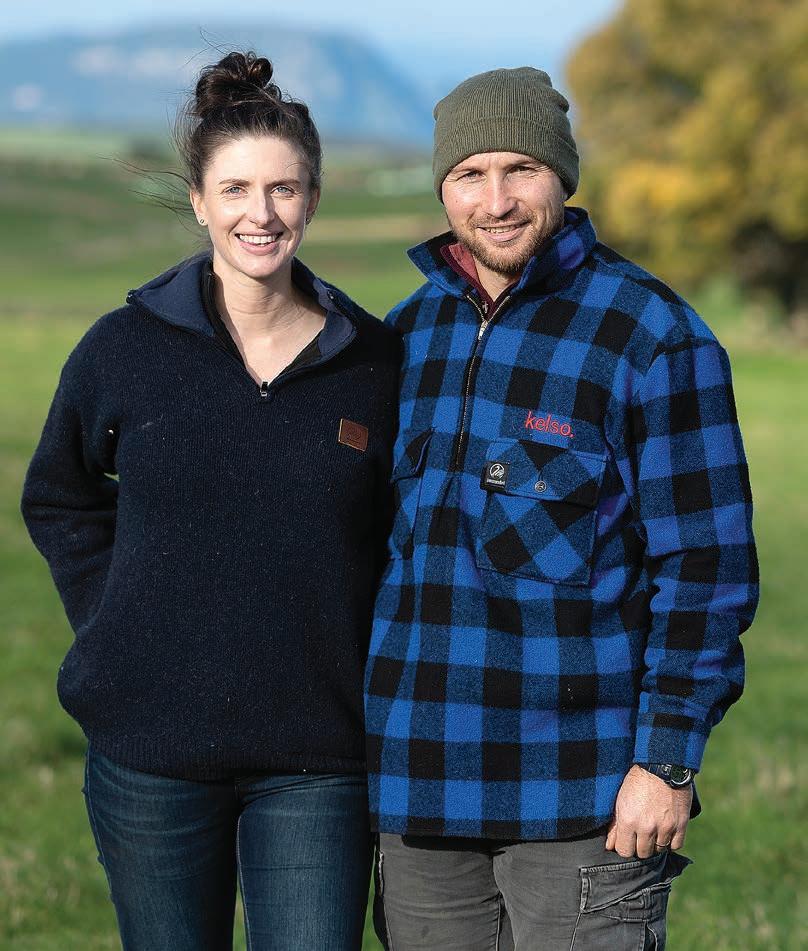
help, but farmers can’t manage transient populations spread across thousands of hectares – which they often don’t own.
Mulinder says Taupō proves blanket tree planting without longterm pest accountability is a policy failure – and carbon forestry is just worsening the problem.
“The Emissions Trading Scheme hasn’t helped. It’s effectively created a gold rush for big companies to convert productive farmland into carbon forests to make a quick buck.
“A lot of these forests are being planted by big multi-national companies or absentee-owners who don’t even live in New Zealand, so they don’t see devastating consequences for the community and environment.
“We’ve seen hundreds of thousands of hectares go into pines for carbon credits in recent years, so












































the pests will only get worse.”
Federated Farmers says regional councils are already stretched implementing their pest plans, and simply adding more obligations won’t work.
“This is a significant national issue. We need a national pest management strategy with proper funding behind it,” Mulinder says.
“Farmers will keep doing our bit, but without smart regional coordination, we won’t get these pest populations under control.”
Her fear is that Wellington won’t act until it’s far too late.
“Farmers are already living with the unintended consequences of largescale pine planting.
“Foresters get the easy profits, and we get the problems.
“Those problems will only get worse unless policy catches up with reality.”
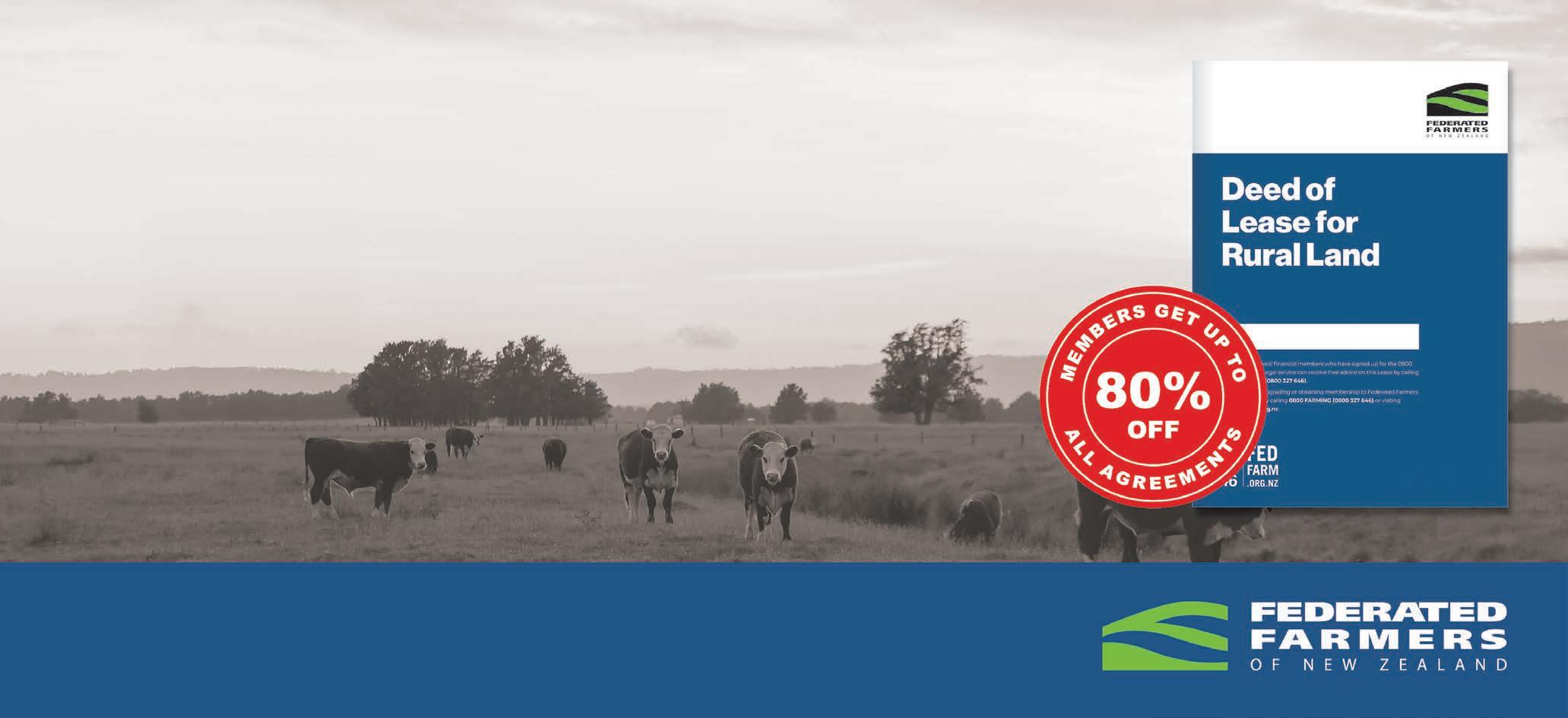
FORESTRY FALLOUT: Taupō farmers Ruby Mulinder and husband Sean say protecting Lake Taupō’s water quality is a key driver in their business, but blanket planting of exotics has created major pest and productivity problems that could have been avoided with more targeted planting.
IMPACT: Ruby Mulinder says pigs aren’t just a nuisance – they carry serious economic and environmental consequences for farmers and rural communities.
U-turn needed on HB farming rules
Federated Farmers Hawke’s Bay president Jim Galloway is calling on his regional council to park new farming rules to save ratepayers and farmers a whole lot of stress, money and anxiety.
The urgent request comes as the region’s TANK (Tūtaekurī, Ahuriri, Ngaruroro and Karamū water catchment) Plan Change 9 heads to the Environment Court.
“This plan change was first notified in 2020 but the political landscape has fundamentally changed since then,” Galloway says. “It makes no sense for the council to continue pushing ahead when we all know the Government is overhauling the Resource Management Act.
“Hawke’s Bay Regional Council (HBRC) needs to show some common sense, do the right thing for our community, and withdraw the plan until there’s more certainty.”
New resource management laws are expected to be in place by mid2026, while Environment Court processes aren’t expected to start until May, with decisions much further down the track.
Galloway says with all that in mind, he can’t understand why the council would want to run an expensive Environment Court process.
“Once new resource management laws are in place, the council will need to put in place new plans, freshwater targets and policies anyway.
“That means while these new rules for Hawke’s Bay farmers might be signed off by the Environment Court, in reality they may never be implemented.
“If the council are feeling trapped in some sort of legal quagmire, they should call for the Government to step in and call the plan to a halt. It’s been done before.”
He says Federated Farmers would be supportive of such a request.
“Without some sort of intervention, Hawke’s Bay farmers are going to be facing
significant and unfair restrictions on their land use.
“There will also be major issues with stock water drinking rights and huge costs to meet new stock exclusion rules.”
A major issue under TANK is the Heretaunga aquifer, which is deemed to be over-allocated.
Plan Change 9 seeks to cut the total annual consented water take –including from urban areas – from around 160 million cubic metres to 90 million.
Federated Farmers has consistently argued for greater investment in community water storage and aquifer recharge but agrees water conservation measures are necessary.
Without intervention, Hawke’s Bay farmers are going to be facing significant and unfair restrictions on their land use.
Jim Galloway Federated Farmers Hawke’s Bay president
“We just don’t think the targets and timeframes are fair, practical or workable for farmers,” Galloway says.
“The rules would prohibit further water takes in many catchments, including for things like stock drinking water. The rules also require streams to be fenced to exclude stock.
“So, the sheep can’t drink from a creek, but you can’t put down a bore for reticulated water either. How are farmers supposed to get their livestock water? It’s madness.”
HBRC are effectively proposing a moratorium on any new water takes.
That would mean if you had a water take consent in May 2020 it would stay, but for any extra water or a new take, it would be a prohibited activity.
“To give you a practical example,
if you had a peach orchard and Wattie’s tells you they no longer want your fruit, you couldn’t then use your water take to graze lambs instead.
“That’s despite the fact livestock drinking water is estimated to be around half a percent of what comes out of the aquifer.”
Under PC9 as it’s currently written, baseline land use will also be frozen at May 2020 –a significant intrusion on land use options.
“So, if you’re a sheep farmer that wants to destock because prices are low and you want to do something different with your land, you’ll be hit with huge resource consent costs.”
New stock exclusion rules would also require waterways to be fenced if a paddock’s slope exceeds 15 degrees or there are more than 18 stock units per hectare. “That’s even if the waterway only flows for short periods of time or at certain times of the year,” Galloway says.
“I know a farmer who didn’t make a dollar last year, and he’d be required to fence off a little creek that didn’t flow at all last winter. That’s not uncommon in Hawke’s Bay.
“The process and ensuing uncertainty is weighing heavy on farmers and growers, especially as processors and exporters are rapidly changing what they require.”
Unfortunately, there will be no-one to defend farmers at the Environment Court.
To continue fighting the case there, local farmers faced spending well over $100,000 on lawyers.
“Even then, there’s no guarantee of a better policy outcome. The uncertain RMA legal process risks pouring money down the drain,” Galloway says.
“Instead we’ll focus on advocating to council and Government to put this plan on ice and save ratepayers and farmers the expense of the Environment Court.”




POINTLESS PROCESS: Spending yet more money on lawyers in an Environment Court process that will be overtaken by RMA reform is a waste of time and resources, Jim Galloway says.
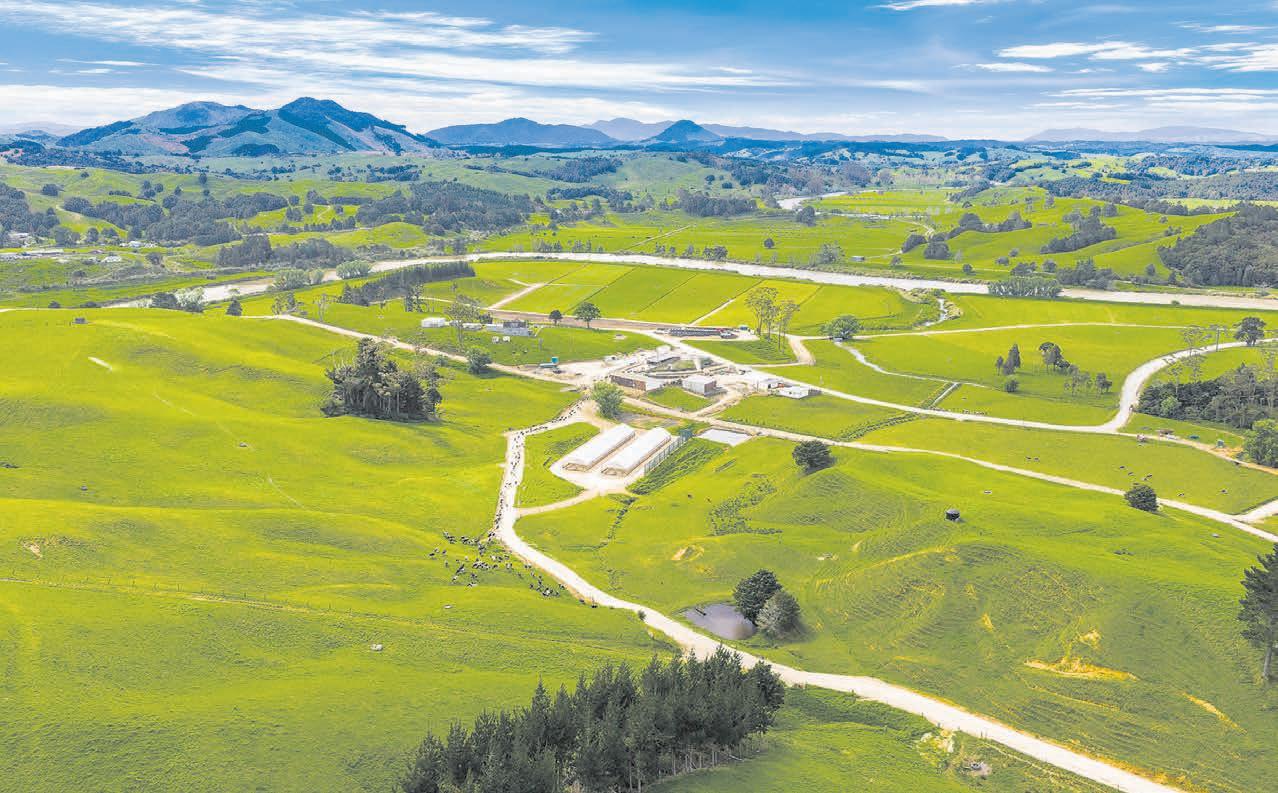
Dargaville 901 Pukehuia Road
245ha dairy farm with scale and infrastructure
This well-established dairy farm spans 245 4603 hectares (more or less, STS) across multiple titles, milking around 360 cows once-a-day with split calving for about 129,159kgMS The land offers a mix of contour – quarter flat, quarter plateau, and rolling to steep – ideal for grazing and cropping Productive Kaipara and Waiotira clays support 25 hectares regrassed and 26 hectares in crop rotation Effluent is managed by a four-pond system covering 50 hectares, supported by a travelling irrigator and cannons Infrastructure includes a 32ASHB shed with Allfex drafting gate supporting Sensehub cow collars, a 250-cow feed pad, two herd homes, and good shedding Three homes – five, three, and two bedrooms – complete the property Our vendors are now retiring, offering a great opportunity to take over this well-run, productive dairy farm bayleys co nz/1021087
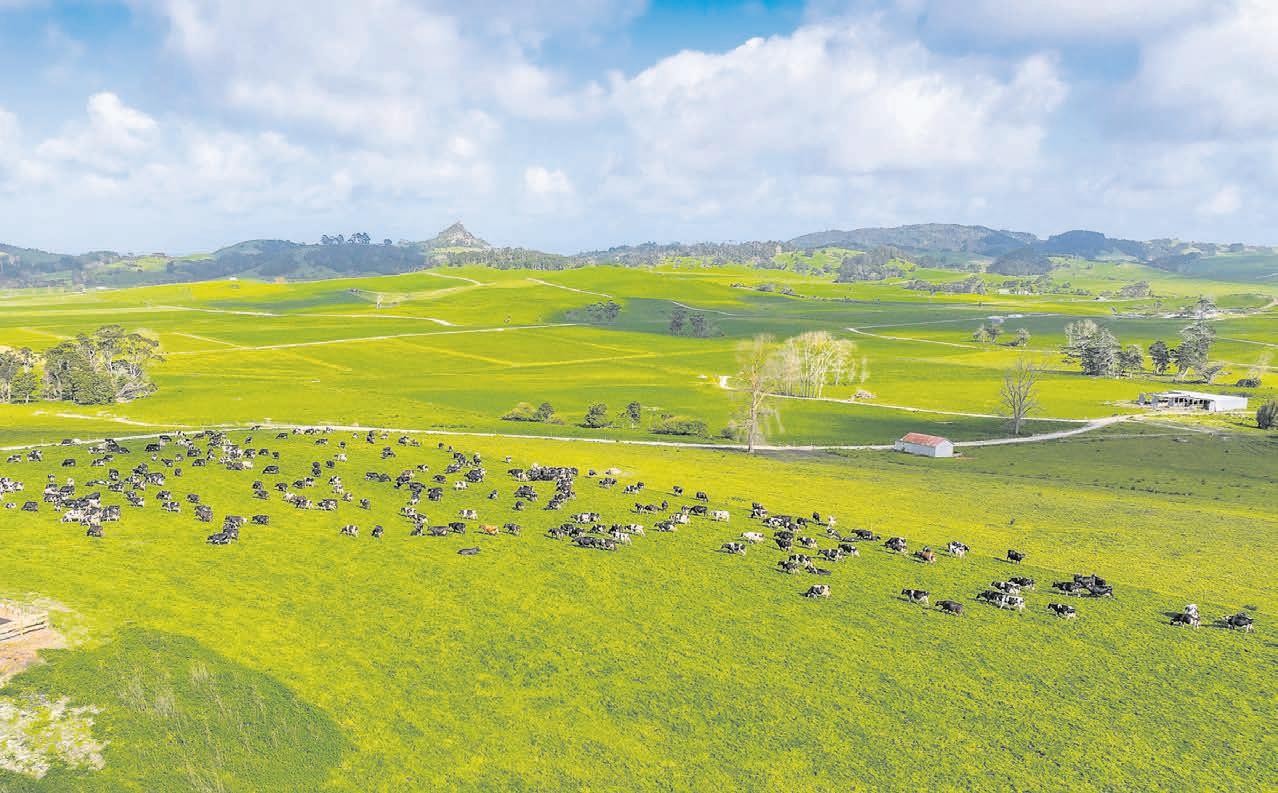
Ruawai 304 Tokatoka Road
Vendors moving on - prime dairy opportunity
With our vendor moving on, this 320 05-hectare (more or less) dairy farm near Ruawai, spread over seventeen titles, offers scale, reliable production, and strong infrastructure Most major capital work has already been completed, and a sale as a going concern is available The farm has averaged 224,273kgMS over the past three seasons from 590 cows plus rears 500 calves on whole milk for an extra 12–15 000kgMS The land mix includes 210 hectares of flats and 110 hectares of easy rolling country all connected by limestone races from the on-farm quarry Water comes from a dam and two bores servicing 36 paddocks with effluent managed through a threepond system With 140 paddocks good soils a renovated 40 ASHB shed large feedpad and three tidy homes this is a well-presented dairy farm in a strong location just two hours from Auckland bayleys co nz/1050873
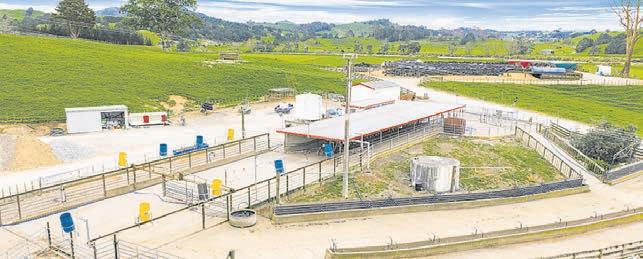

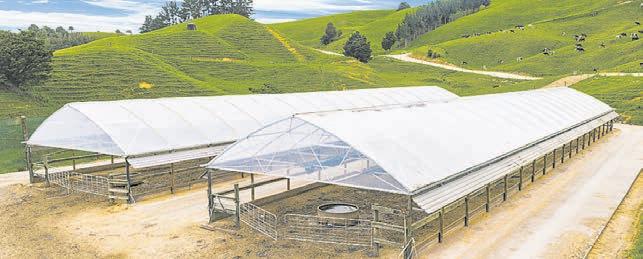
245.4603 ha Auction (unless sold prior) 12pm, Tue 16 Dec 2025
84 Walton Street, Whangārei
by appointment Todd Skudder 027 439 1235
skudder@bayleys co nz


320 05 ha
Tender (unless sold prior) Closing 2pm, Thu 18 Dec 2025 84 Walton Street, Whangārei View by appointment Todd Skudder 027 439 1235 todd skudder@bayleys co nz MACKYS REAL ESTATE LTD BAYLEYS, L CENSED UNDER THE REA ACT 2008

Boundary lines are indicative only
Matatoki 264 Matatoki Road
Smart farming investment - efficiency & scale
A highly productive 123ha (more or less) Matatoki dairy farm across three titles well set up for efficient operation and consistent performance Flat and well subdivided into 80 paddocks it supports around 330 split-calving cows with recent production of 127 568kgMS (2024/25) Infrastructure includes a double-up 15 ASHB (30 cups) shed with inshed feeding 300-cow yard feedpad 120T maize pad PKE bunker meal silo wintering barn and ample implement and calf sheds Effluent is managed via a 20hp pump irrigating 60ha Two quality homes (fourand three-bedroom) provide accommodation Water is supplied via TCDC mains; fencing and nutrient management are well maintained Conveniently located 12 9km from Thames and 25km from Paeroa, with easy access to Hamilton, Tauranga, Auckland, and Coromandel beaches; offering scale, efficiency, and lifestyle bayleys co nz/2630155
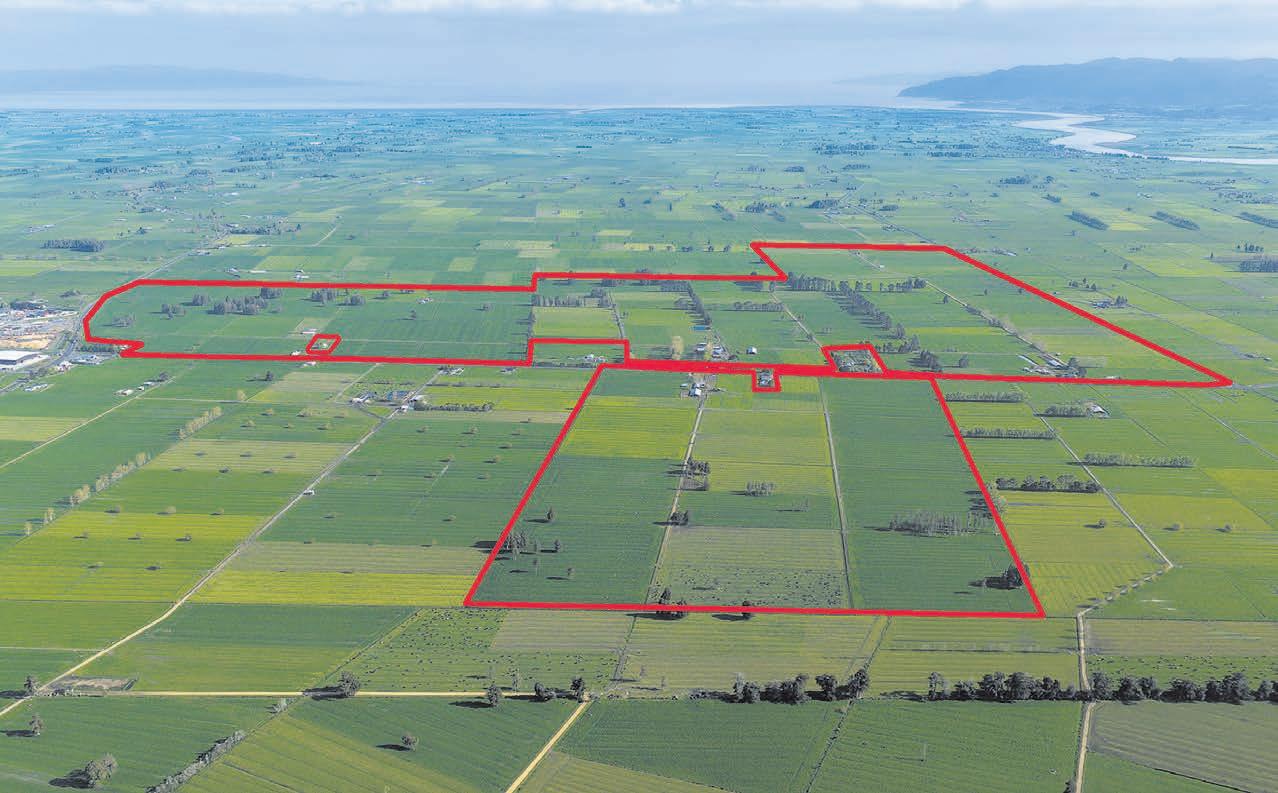
A Hauraki Plains legacy - productive and proven
Opportunity before Christmas! A significant 241ha (more or less) dairy holding in the heart of the Hauraki Plains offering scale, infrastructure, and lifestyle appeal Flat, fertile land with 146 paddocks supports around 600 cows producing over 207,000kgMS Infrastructure includes a 43-aside herringbone cowshed, wintering barns, calf facilities, sheds, and staff accommodation Around 90% of troughs and water systems are new With council water, efficient effluent, and multiple dwellings, this high-performing farm offers proven production and longterm potential close to Ngatea, Hamilton, Auckland, and the Coromandel bayleys co nz/2630156
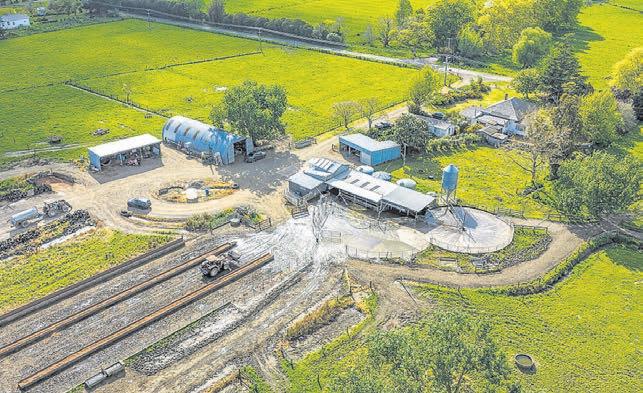

123 ha
Tender (unless sold prior)
Closing 3pm, Wed 3 Dec 2025
96 Ulster Street, Hamilton
View 11am-12pm Tue 11 Nov or by appointment
Karl Davis 027 496 4633
karl davis@bayleys co nz
Sam Aislabie 027 429 5410
SUCCESS
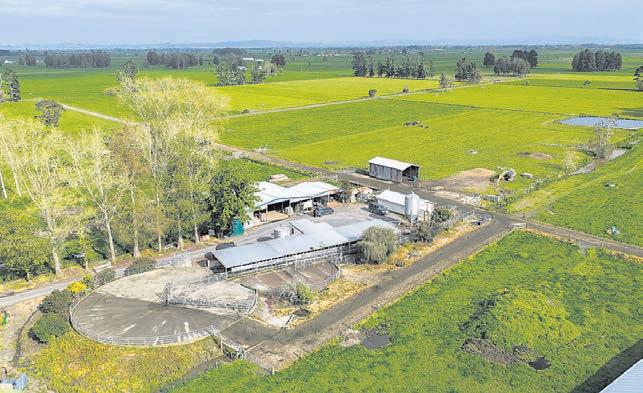

Karl Davis 027 496 4633
karl davis@bayleys co nz
Sam Aislabie 027 429 5410
sam aislabie@bayleys co nz
SUCCESS
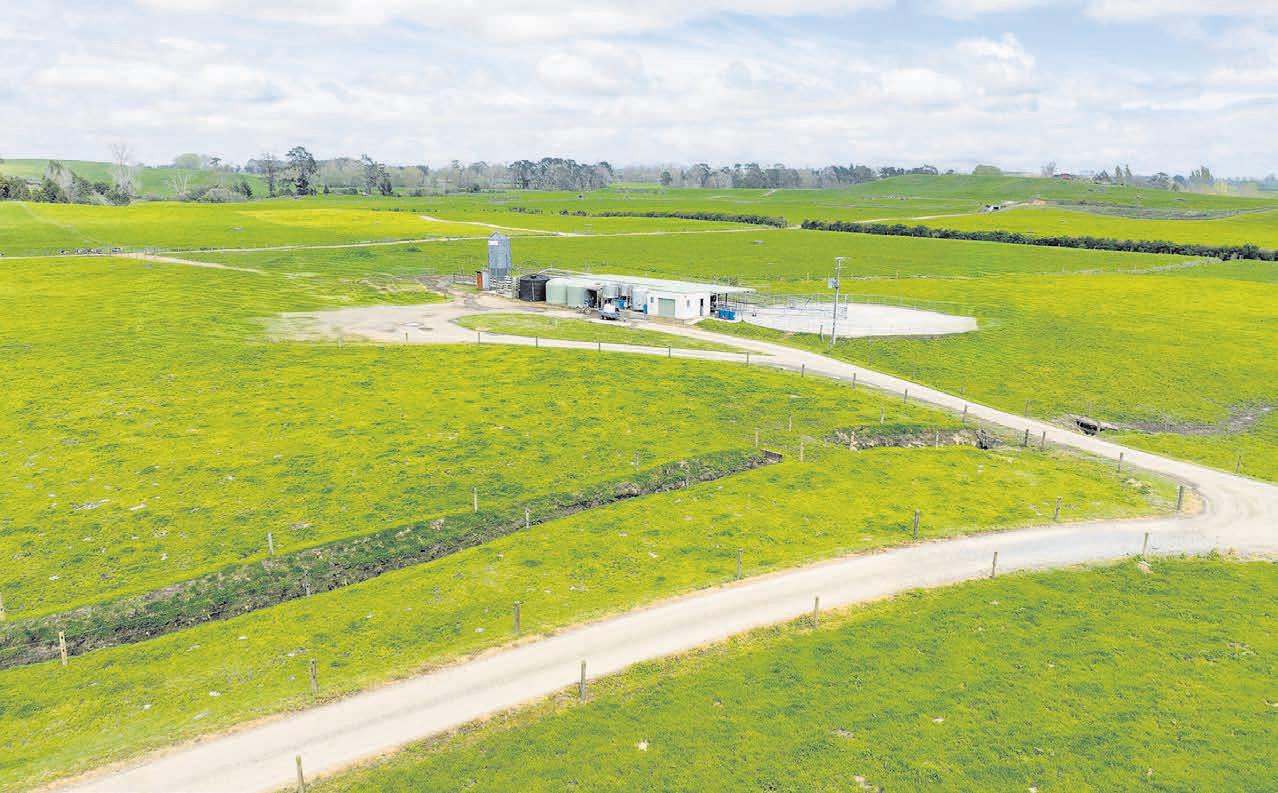
Prime land – dairy or grazing – purchasing options
A rare chance to secure quality land in a sought-after district Choose from 70 91 hectares (STS) or two newly surveyed lots (titles pending): 48 08 hectares as the main dairy platform with a modern three-bedroom home and extensive infrastructure or 22 83 hectares of quality bare grazing land with its own water bore adjacent to this block is a fully renovated brick home on a separate 0 9ha title adding further purchasing flexibility The property features a well-maintained 22-aside dairy shed with in-shed feeding, a modern effluent system, multiple barns and sheds Contour is mainly flat to gently rolling with strong soils and proven production of over 138,000 kgMS from 290 cows Located in the desirable Te Poi district, just 16km from Matamata and within easy reach of the Bay of Plenty, this outstanding dairy or lifestyle investment is an opportunity not to be missed bayleys co nz/2400921
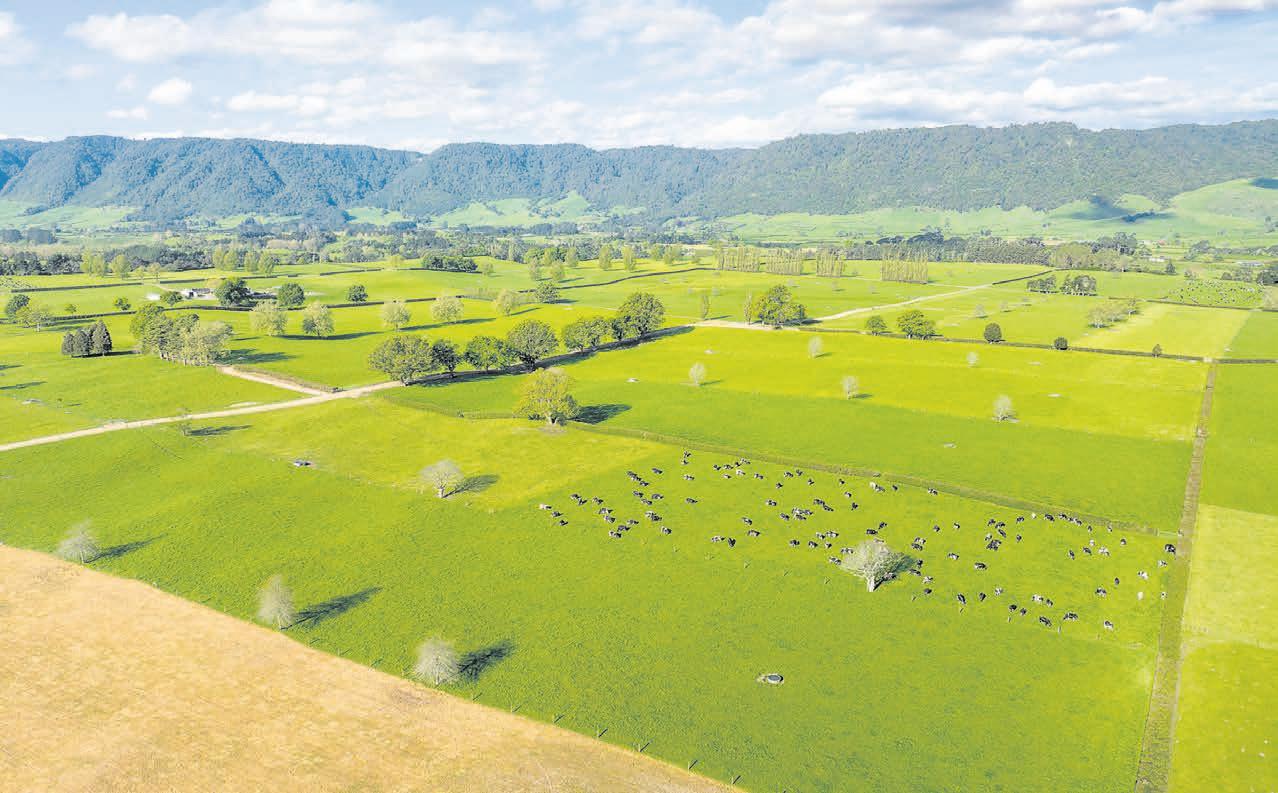
Matamata 72 and 82 Harding Road
Elite
dairy opportunity - quality, contour, class
A rare opportunity to secure a top-tier dairy unit just 9 6km north of Matamata This immaculately presented 118ha (more or less) farm in two titles, offers superior contour, elite soils, proven performance and a commanding presence with frontage to Tower and Harding Roads Milking up to 360 cows with production levels up to 180,000kgMS supplying Open Country Dairy, this high-performing operation is supported by a 30-aside ASHB shed with in-shed feeding and Pro-Track Herd Management Key features include a compliant effluent system with new 2 5M-litre pond, dual water supply (bore & town), and pasture irrigation over 75ha Accommodation includes three homes, with an optional executive homestead on a third title This is a standout property combining productivity, quality, and lifestyle in a dress circle location bayleys co nz/2400805
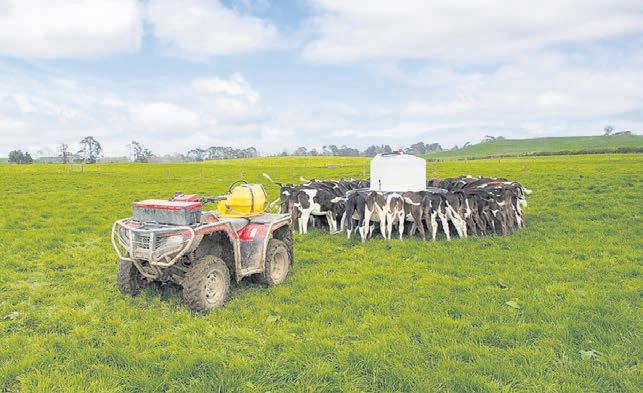

70 9 ha
Tender (unless sold prior)
Closing 2pm, Tue 25 Nov 2025
65 Arawa Street, Matamata
View 11am-12pm Thu 13 Nov or by appointment
Sam Troughton 027 480 0836
sam troughton@bayleys co nz
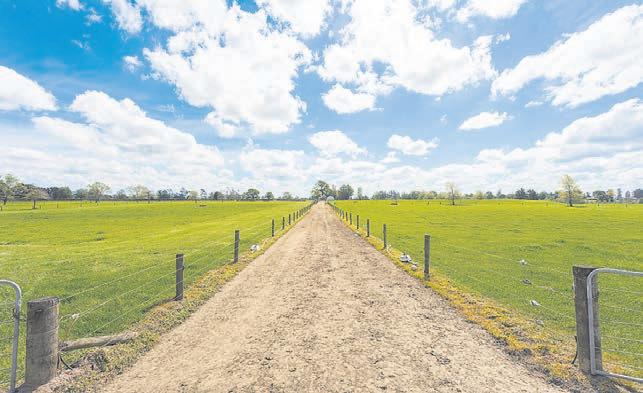
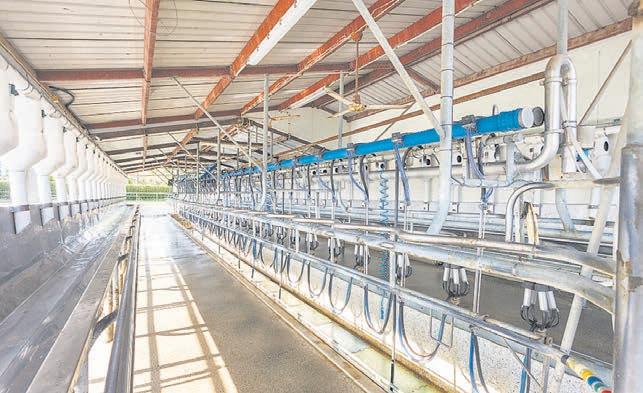
Matamata 128 Rapurapu Road, Te Poi
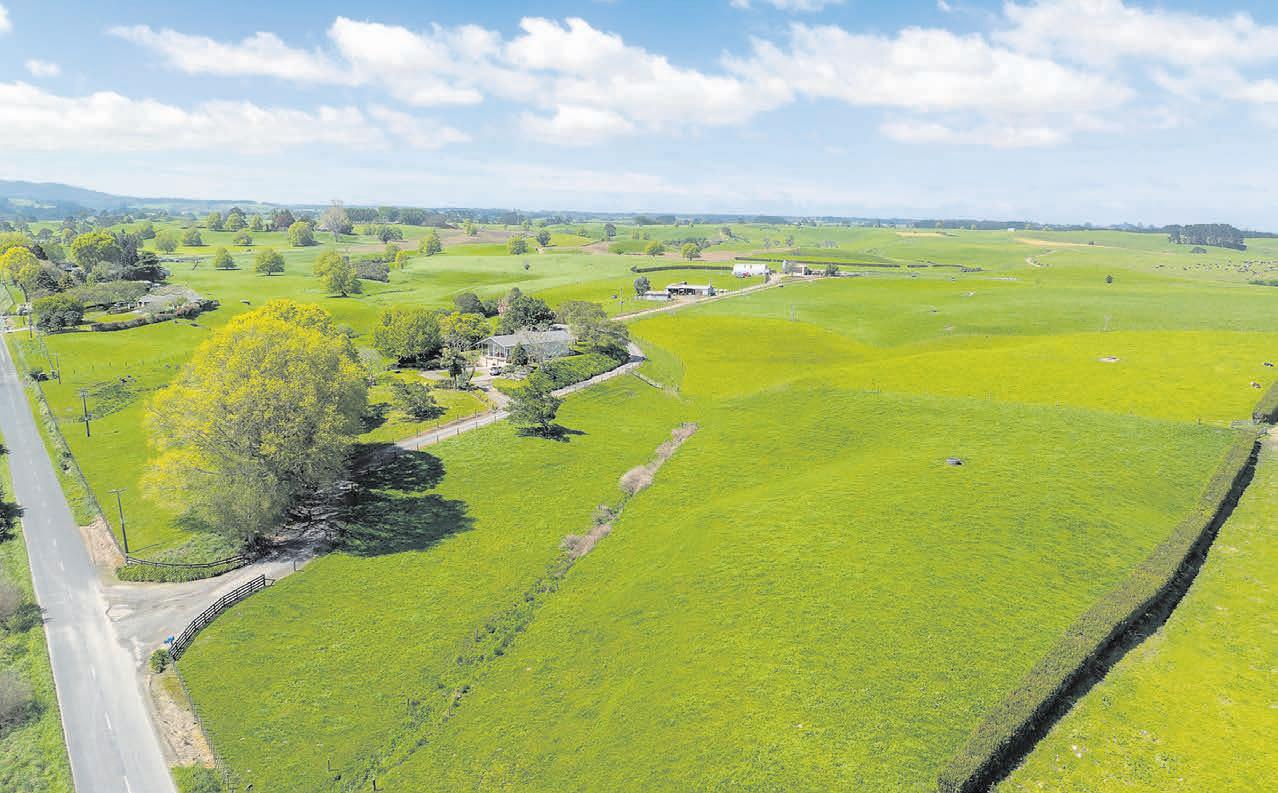
76.7 Hectare dairy unit - proven to perform
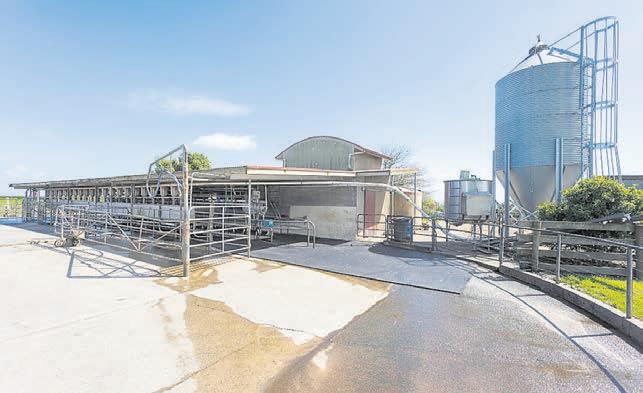

76.73 ha
Tender (unless sold prior)
Closing 2pm, Tue 2 Dec 2025
65 Arawa Street Matamata
View 11am-12pm Mon 10 Nov Mon 17 Nov & Mon 24 Nov or by appointment
Sam Troughton 027 480 0836
sam troughton@bayleys co nz SUCCESS

With the vendor’s decision to sell, this 76 7ha (more or less) established dairy farm offers a winning combination of fertile soils, undulating contour, fertile soils , functional infrastructure and proven performance Milking 200+ cows through a 20-ASHB cowshed with in-shed feeding, supplying around 92,000 kgMS annually The farm is well raced and subdivided and with its mix of gentle contour provides seasonal grazing flexibility, A renovated four-bedroom home provides modern comfort and sweeping rural views amid lush gardens Perfectly located near Kuranui School, Okoroire Hot Springs, Tirau, Matamata, and an easy drive to Tauranga Ideal as a first farm, second farm, or portfolio addition combining productivity, lifestyle, and potential bayleys co nz/2400929 Hawke's Bay 50 Little Bush Road, Puketitiri
Production plus Sika hunting at Puketitiri
Located in a summer safe farming district only 53 kilometres north-west of Napier ‘Te Wairere’ is 315 hectares of mainly easy/flat contoured country with a solid reputation for producing strong quality livestock Add to this the fully reticulated water system strong fertiliser history an excellent pasture renewal programme fantastic laneway from the woolshed to back satellite yards along with the huge natural resource of Sika and fallow deer This property is an absolute gem providing excellent returns as well as an off the grid hunting cabin complete with a spa pool The high performing ewe flock which lambs over 160% and boasts high worm resilience is also up for sale Featuring a large four bedroom homestead a four stand woolshed implement and hay sheds sheep and cattle yards A must view for those wanting a turnkey farming opportunity bayleys co nz/2854220


315 ha
Auction 11am Fri 28 Nov 2025
15 Havelock Road, Havelock North
View by appointment
Tony Rasmussen 027 429 2253
tony rasmussen@bayleys co nz
Chris Heenan 027 599 3527
chris heenan@bayleys co nz EASTERN REALTY LTD
L CENSED UNDER THE
2008
Tirau 220 Waiomou Road, Okoroire

Boundary lines are indicative only
Patoka 1438 Waihau Road
Quality 241 hectares of finishing land
Located only 10 kilometres from Patoka School and 45 kilometres west of Napier city is ‘Little Falls’, a very attractive 241 hectare property with huge potential to crop and develop large portions of flat and easy land
Utilised in recent times as a sheep and beef finishing unit to a larger farming business there is also the option to intensify the sheep and beef farming with the quality four stand woolshed three bay implement shed/workshop sheep yards and two sets of cattle yards A real feature of the property is the fully refurbished three bedroom home which is well positioned to capture the sun and fantastic rural views over the rolling rural landscape to the north This attractive farm has great potential as a finishing property or dairy runoff Surplus to vendor’s requirements A must view for local and out of town buyers bayleys co nz/2854234
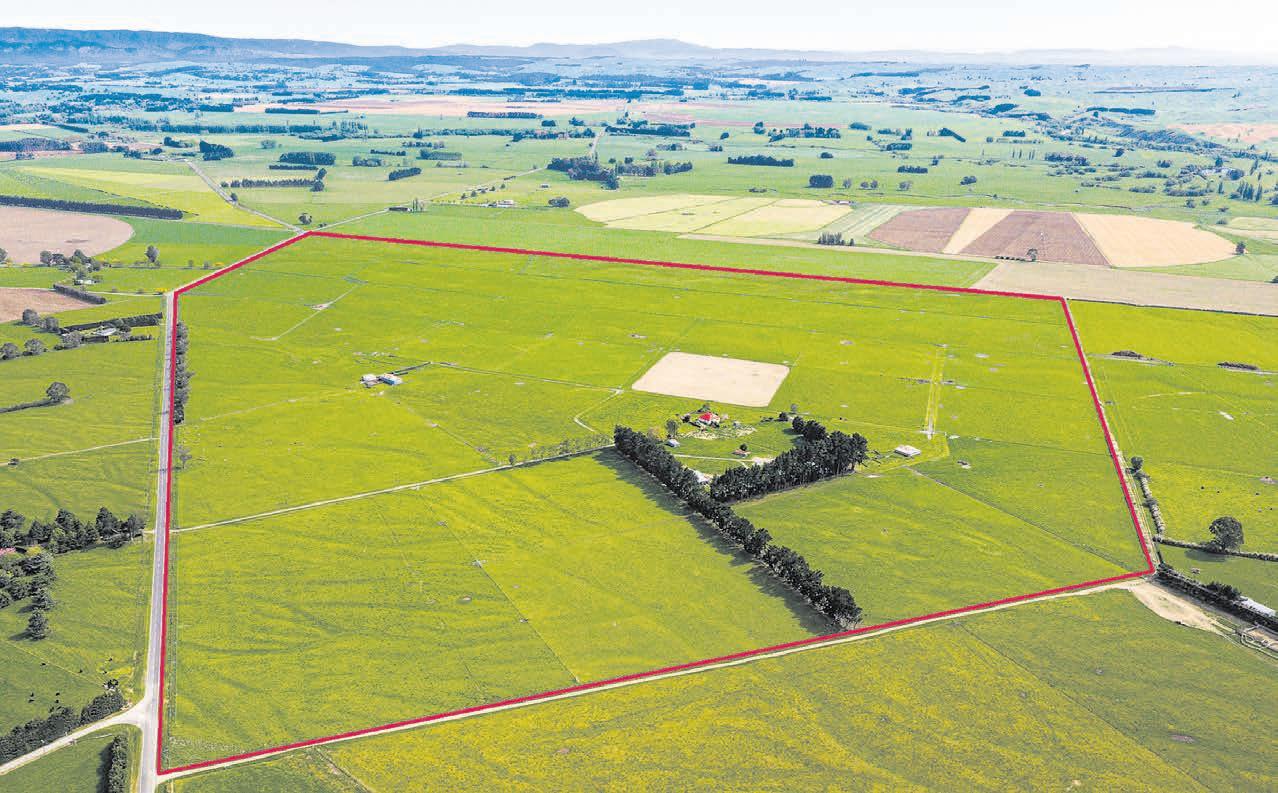
Boundary
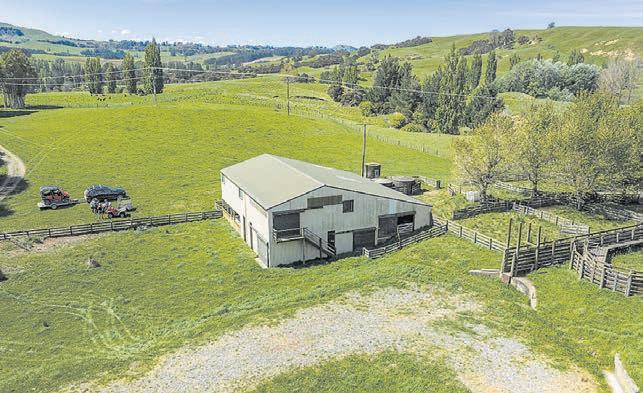

241.5 ha
Tender Closing 4pm, Mon 17 Nov 2025
15 Havelock Road, Havelock North
View by appointment
Tony Rasmussen 027 429 2253
tony rasmussen@bayleys co nz
Chris Heenan 027 599 3527
chris heenan@bayleys co nz
EASTERN
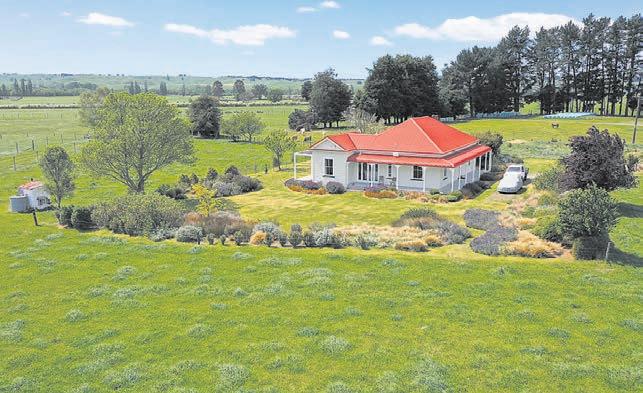
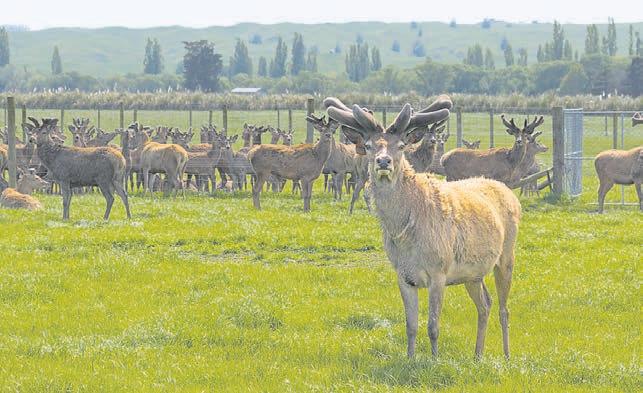
Central Hawke's Bay 1254 Tikokino Road, Tikokino 126 9 ha
Quality 126ha deer, finishing and cropping farm
An easy commute by plane or car this luxurious small farm would be perfect for a professional couple working from home Located only 13km west of Waipawa township and 73km south of Hawke’s Bay Airport is this versatile flat farm which boasts a fully refurbished three bedroom villa and several implement sheds and a deer shed The quality of the workmanship on the beautiful character villa from the new kitchen and bathroom open plan living area to the ensuite and walk-in wardrobe off the master bedroom and the native floorboards combine beautifully with a modern finishing Approximately 80ha have been historically cropped in peas and maize Currently running breeding hinds and progeny velveting stags and trading cattle Approximately 74ha is fully deer fenced into 24 paddocks with an extensive laneway system making this an easy care operation bayleys co nz/2854231
Auction 11am Fri 28 Nov 2025
15 Havelock Road, Havelock North
View by appointment
Tony Rasmussen 027 429 2253
tony rasmussen@bayleys co nz
Andy Hunter 027 449 5827
andy hunter@bayleys co nz
EASTERN REALTY LTD, BAYLEYS, LICENSED UNDER THE
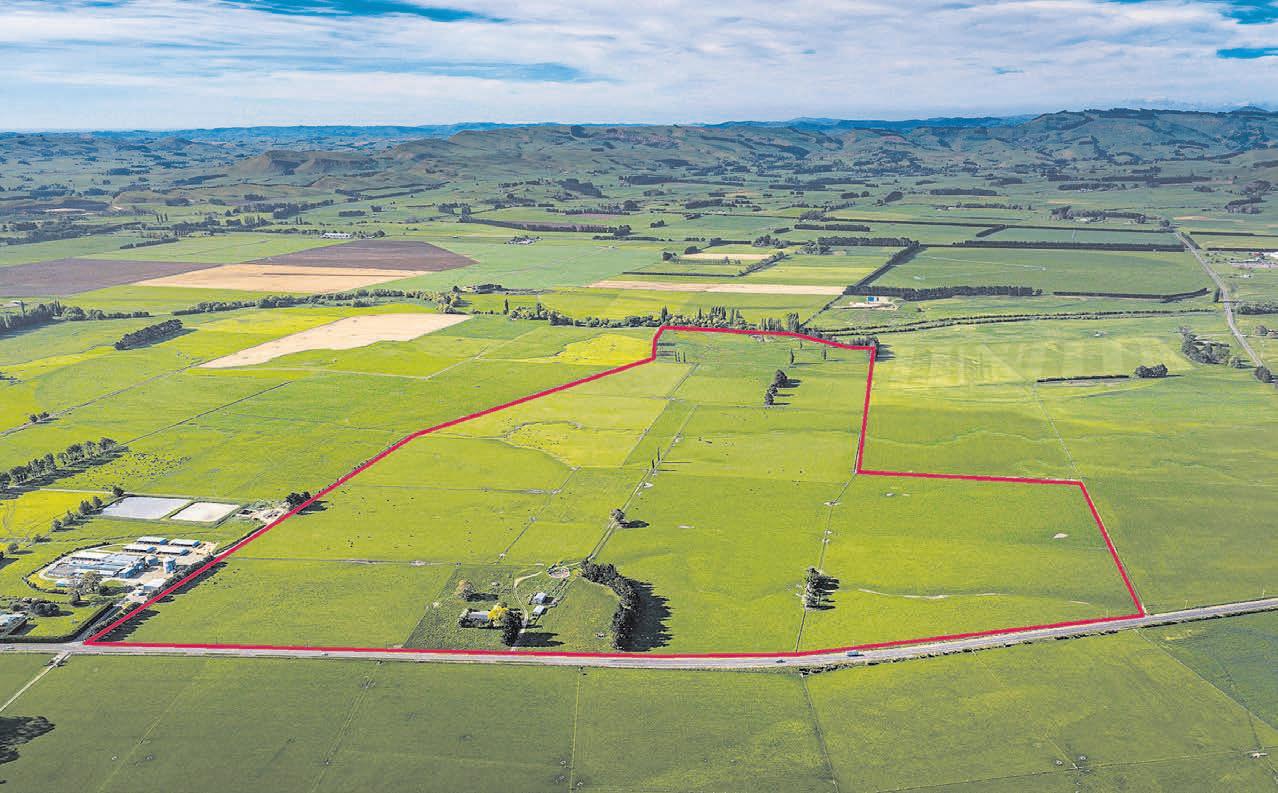
Central Hawke's Bay 3637 State Highway 2, Takapau
83 hectare finishing or dairy support
Located only 14 kilometres south of Waipukurau on the Takapau plains is this versatile farmlet which will have great appeal and opportunity This flat parcel of land is fully reticulated, and is currently finishing beef cattle
Featuring a five bedroom home, woolshed, sheep, and cattle yards on quality silt loam soils, this is the perfect first farming opportunity where you could rear calves, or would suit the retired farmer, or provide an additional support block for a larger farming operation The added bonus is the dam at the rear of the property, perfect for those wanting their duck shooting fix All this, and a short commute to Waipukurau Surplus to vendor requirements bayleys co nz/2854233

Central Hawke's Bay 683 Bush Road, Wallingford
1,083 hectare breeding/finishing
property
The Estate of AW Parsons offers a genuine sheep and beef breeding/finishing property Situated 37km southeast of Waipukurau with the school bus at the gate, only 24km to Flemington Primary School Currently run as one unit, the estate is split into three separate blocks The main landholding of 869ha provides the easy to medium/steeper breeding platform with a very good standard of fencing, subdivision and laneways Three large dams form the source of the extensive reticulated water system Improvements include the four bedroom manager’s residence, staff accommodation, and a four stand woolshed complex The 43ha bottom finishing block of flat to easy contour includes cattle yards The Awahiwi Road block of 169ha can be purchased separately to the main farm and comprises easy contour, sheep and cattle yards, and an all weather airstrip bayleys co nz/2854191

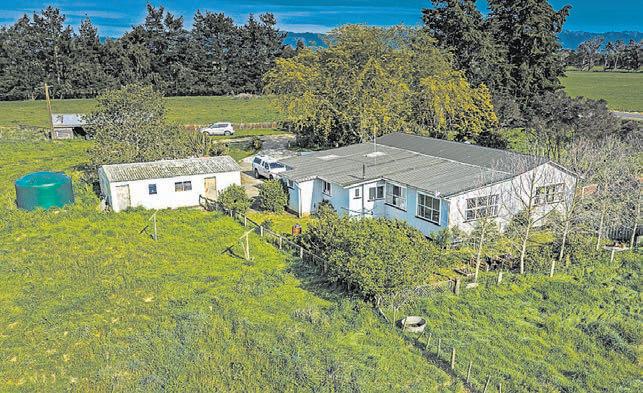
83 2 ha
Auction 11am Fri 28 Nov 2025
15 Havelock Road Havelock North
View by appointment
Tony Rasmussen 027 429 2253
tony rasmussen@bayleys co nz
Andy Hunter 027 449 5827
andy hunter@bayleys co nz

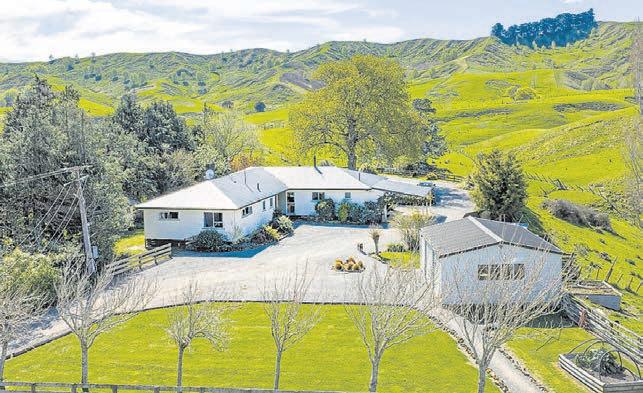
1,083 ha
Tender Closing 4pm, Thu 20 Nov 2025
15 Havelock Road, Havelock North
View by appointment
Andy Hunter 027 449 5827
andy hunter@bayleys co nz
Tony Rasmussen 027 429 2253
tony rasmussen@bayleys co nz
EASTERN
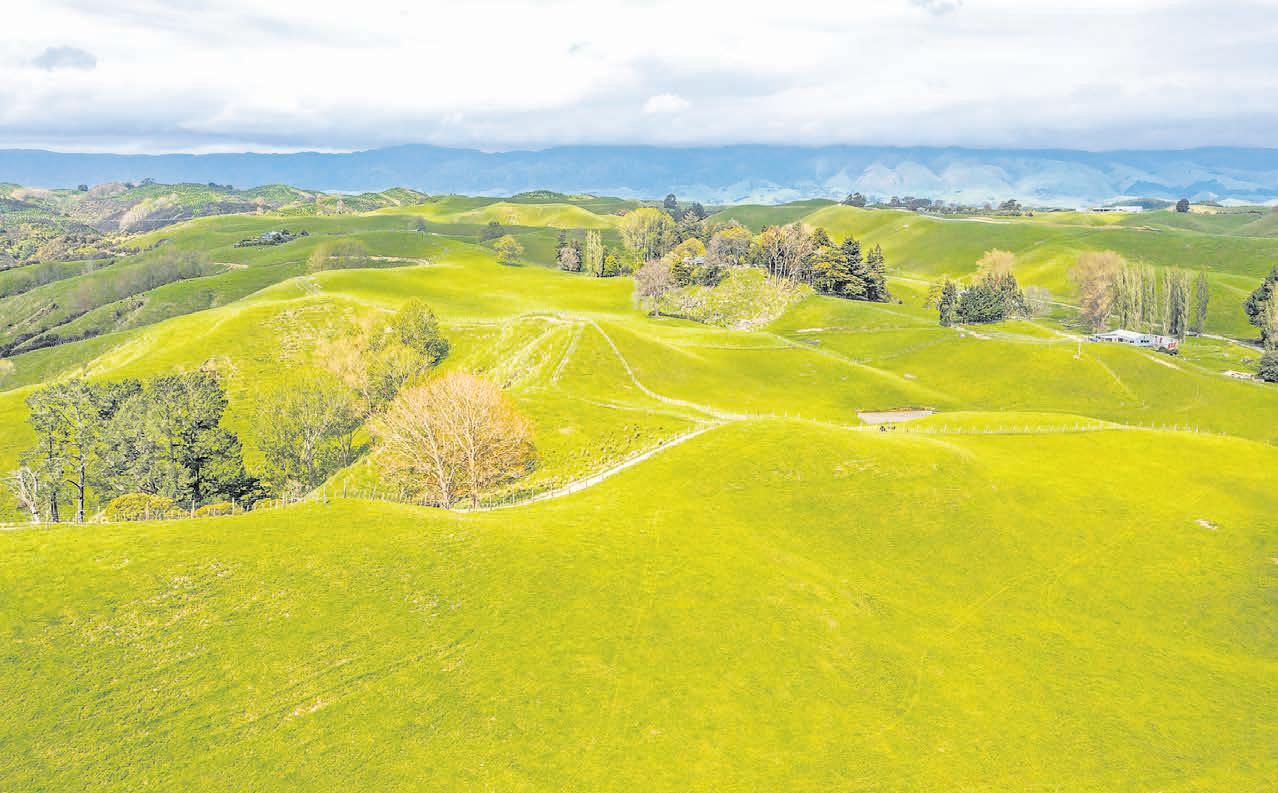
Grazing, first farm opportunity
Only 24 5 kilometres from Feilding in the Manawatu District are 135 hectares (more or less) currently utilised for grazing beef & dairy cattle Located on Pollock Road the property has a mix of contour running from medium rolling hills to a steeper gully running through the property down to the Oroua River providing recreational opportunities Fencing is conventional post and batten with some 2 and 3-wire internal electric fences and stock water is mostly spring fed dams The stock policy has included wintering cows for six weeks, plus yearling cattle with weaners grazed through the spring and summer Improvements include a network of tracks providing access across the property, cattle yards with a loading race, a hayshed, plus converted living quarters to complete the package A great first farm or additional grazing unit in close proximity to Feilding bayleys co nz/3053185

Mowbray Deer Farm and Butler Springs
Situated in the heart of the Fairlie Basin, this deer and beef enterprise is offered to the market as our vendors scale back their operations Mowbray Deer Farm, 1,211 hectares (more or less) is a large scale breeding property focused on producing quality weaners from around 1,000 mixed age red hinds and 200 Hereford and Angus/Hereford cows The farm also supports sheep grazing, hunting, and a tourism venture, featuring Sutherlands Hut, the oldest surviving shepherd’s hut in NZ Located just approximately 17km away, Butler Springs covers 332 hectares (more or less) and is fully deer fenced This property complements Mowbray’s operation, managing the weaners and velvet production from 700 plus stags and 600 deer (including fawns, hinds, and surplus stags) The property also carries finishing cattle, dairy grazers and sheep grazing bayleys co nz/5528756
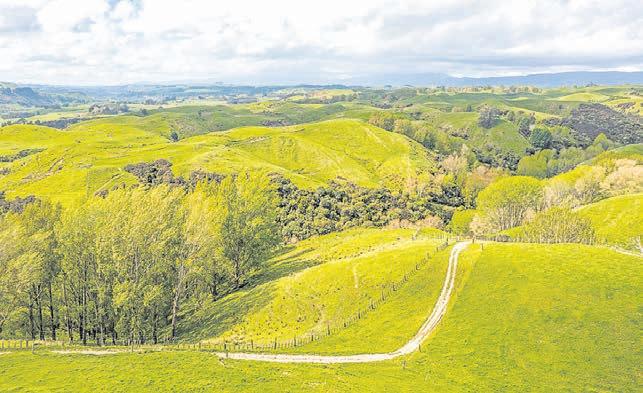
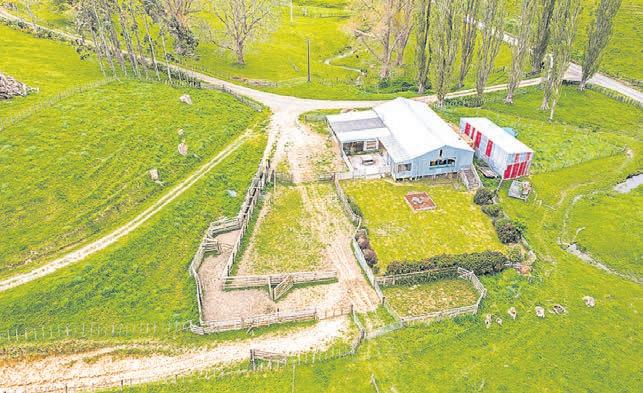
Tender (unless sold prior) Closing 1pm, Wed 3 Dec 2025 49 Manchester Street, Feilding Phone for viewing times
Mark Monckton 021 724 833 mark monckton@bayleys co nz Jack Monckton 027 394 3705
jack monckton@bayleys co nz
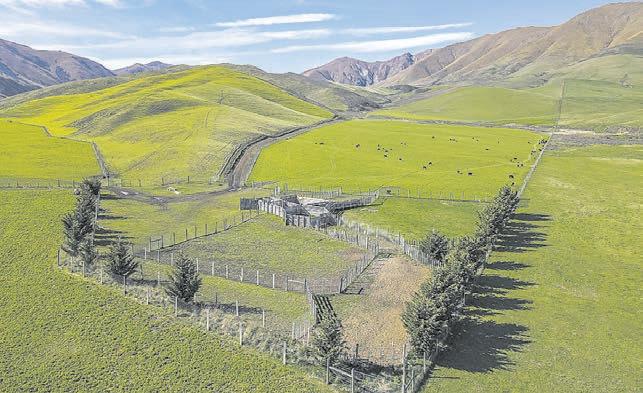
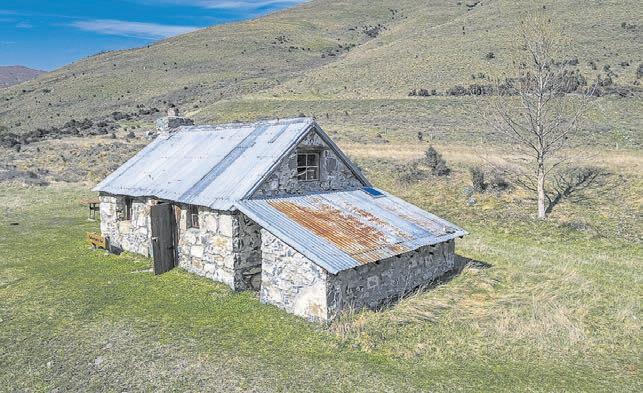


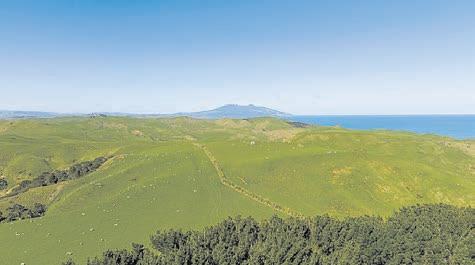
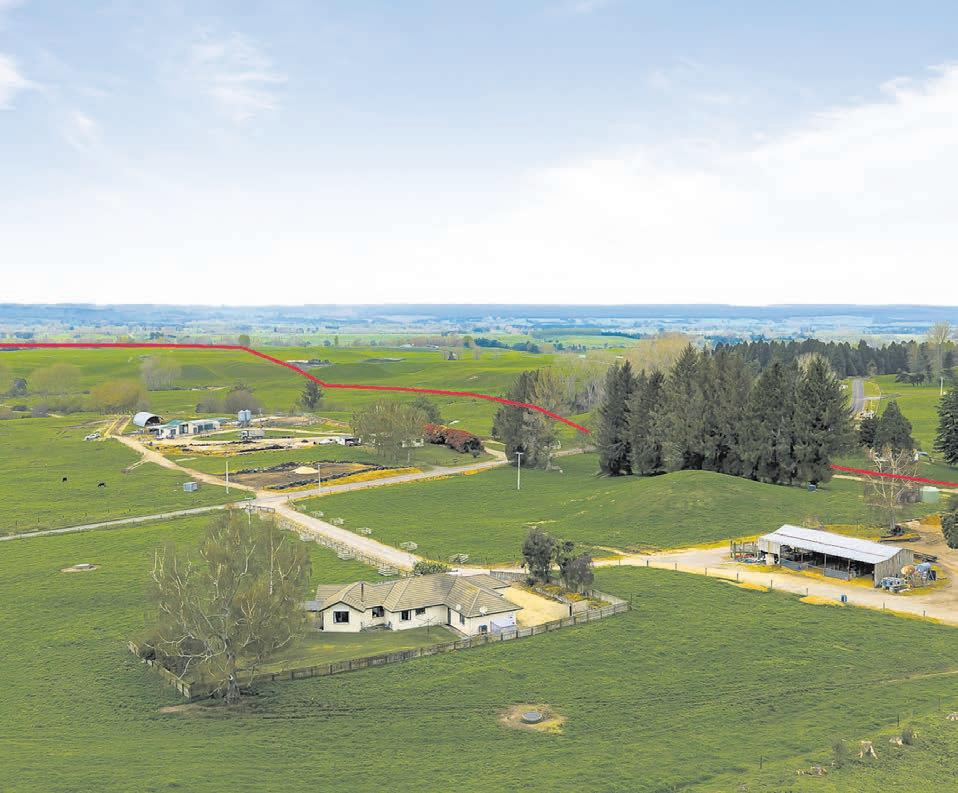
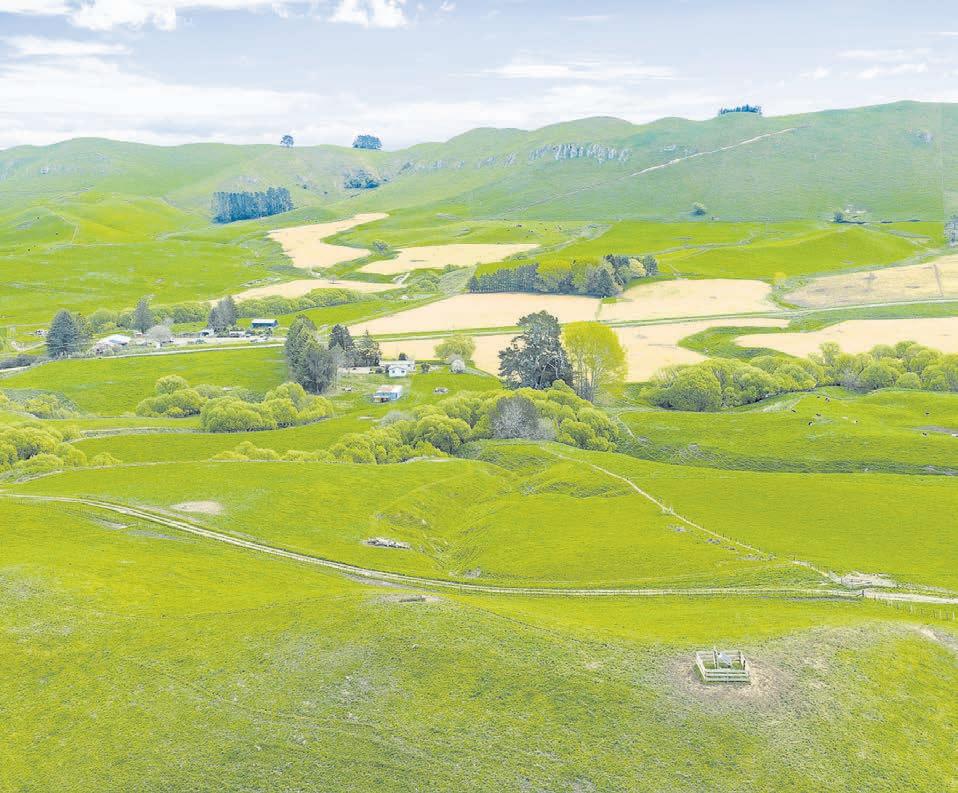

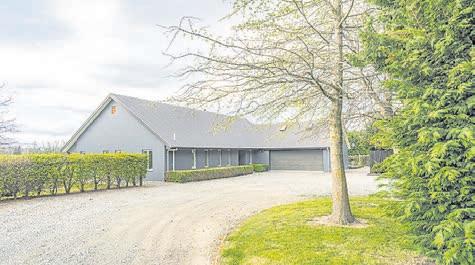


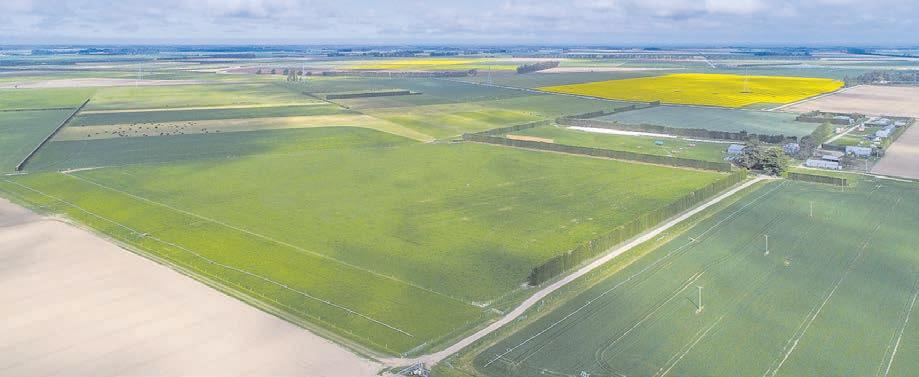
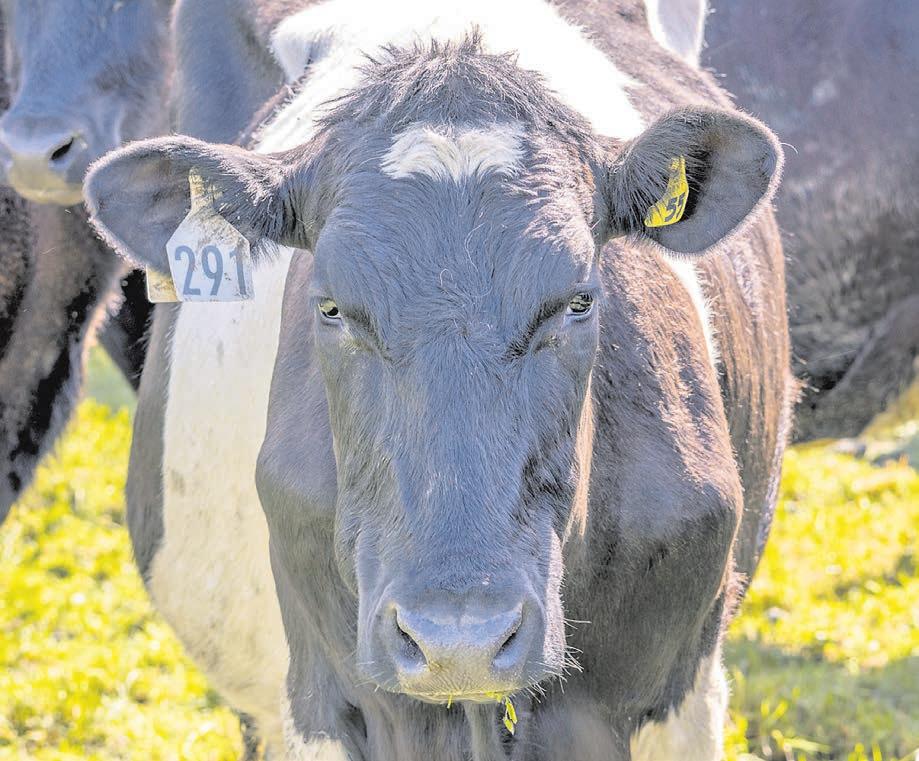
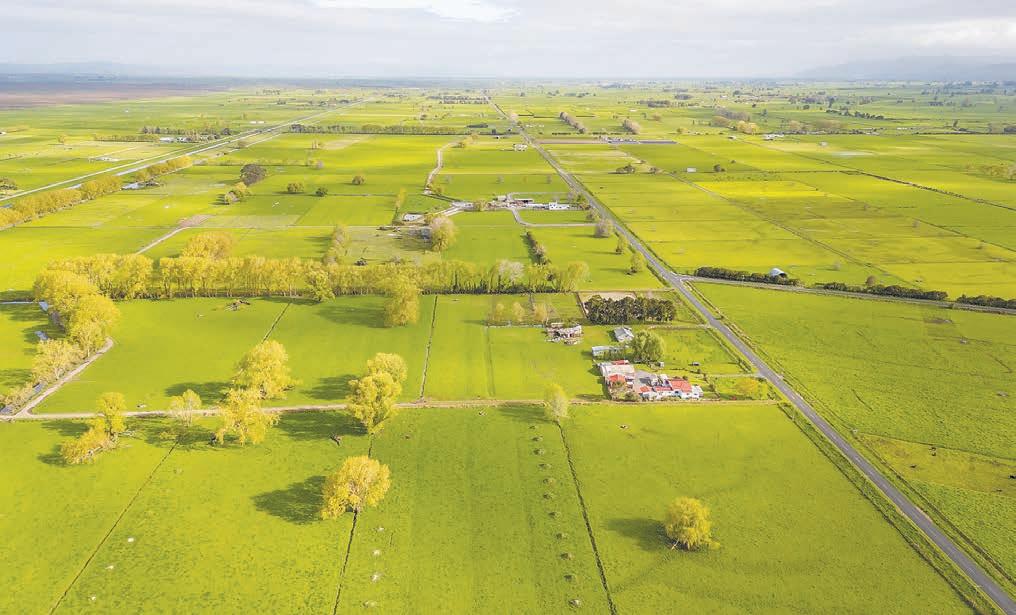

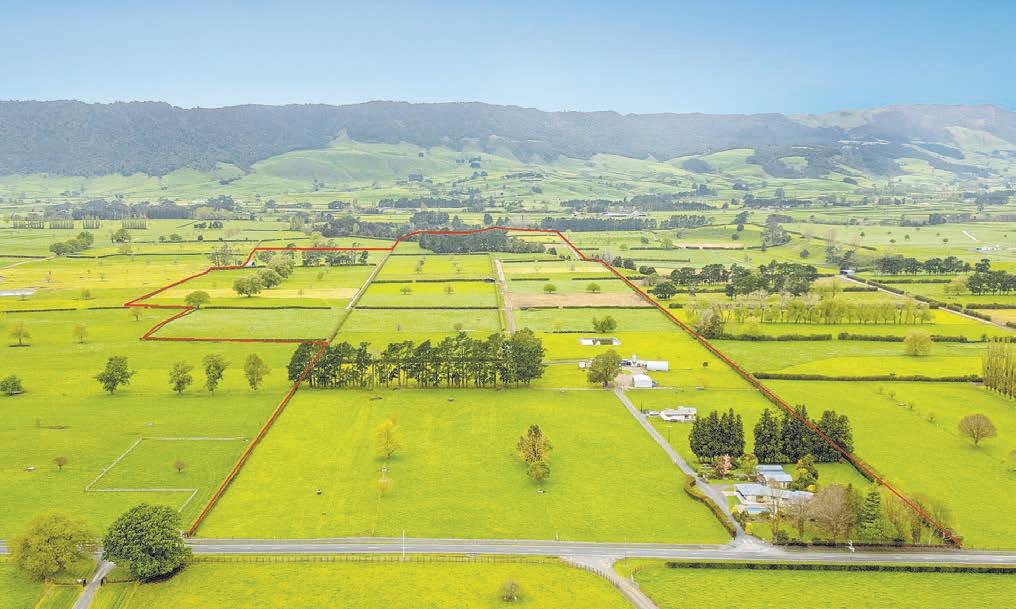
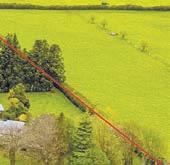


Ashburton 522 Surveyors Road,
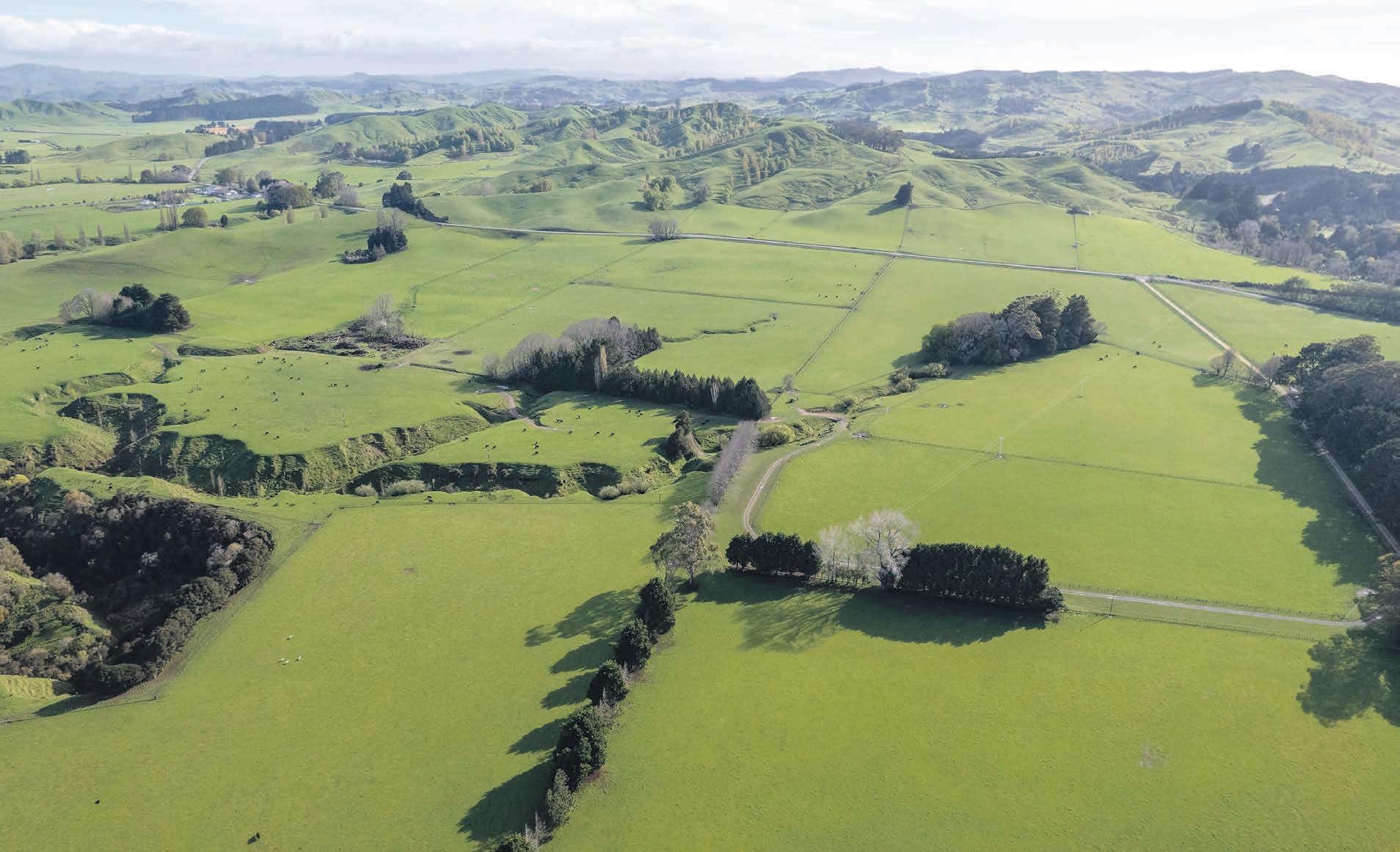



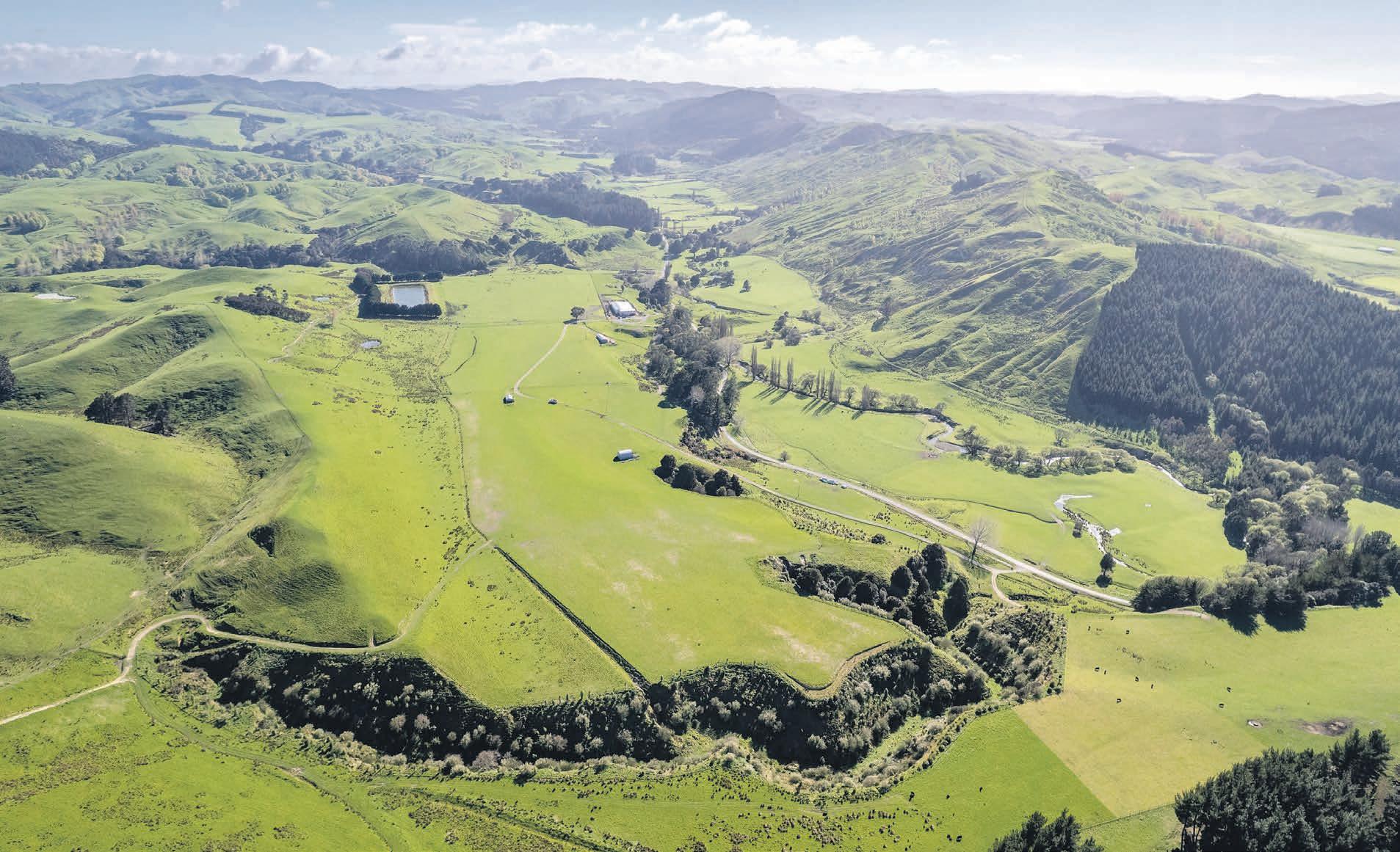
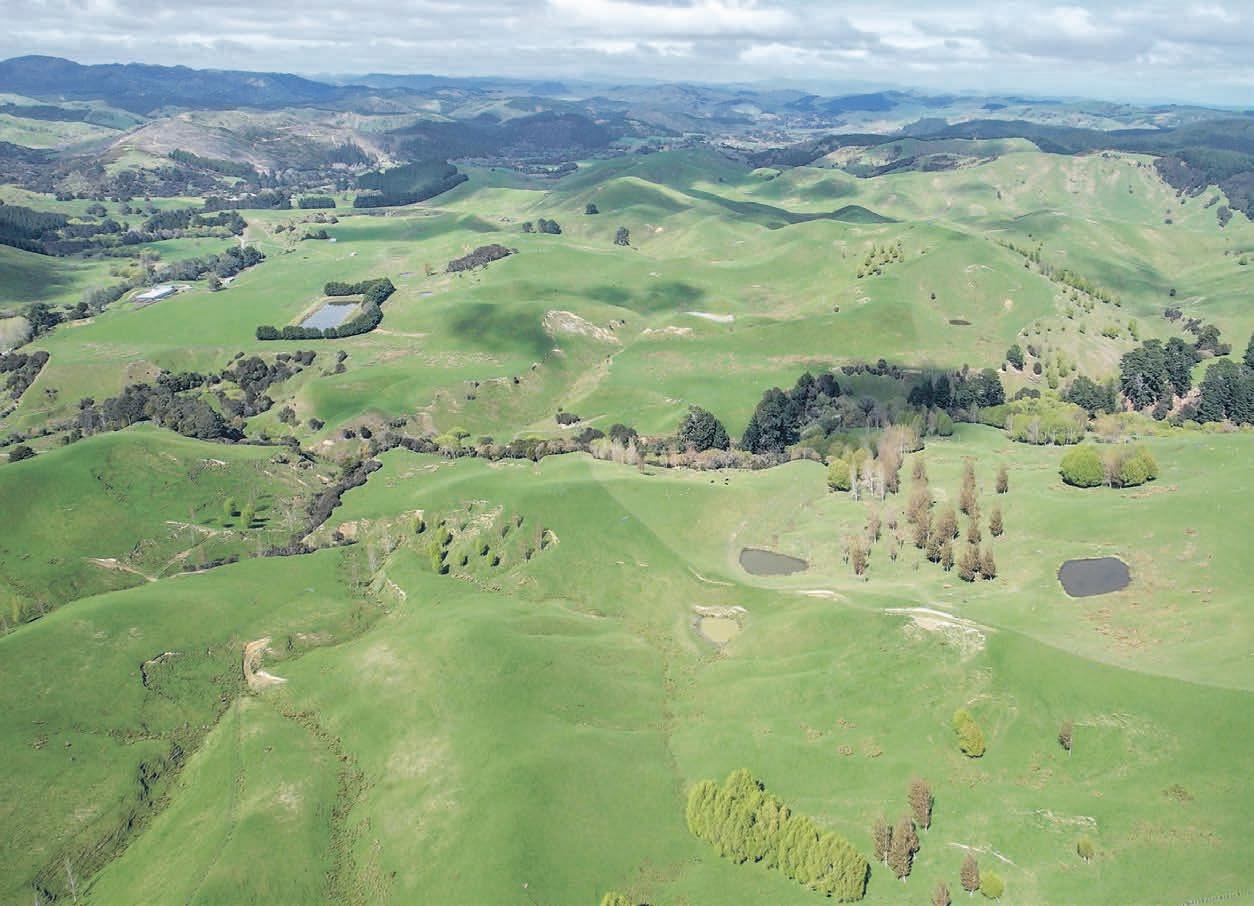

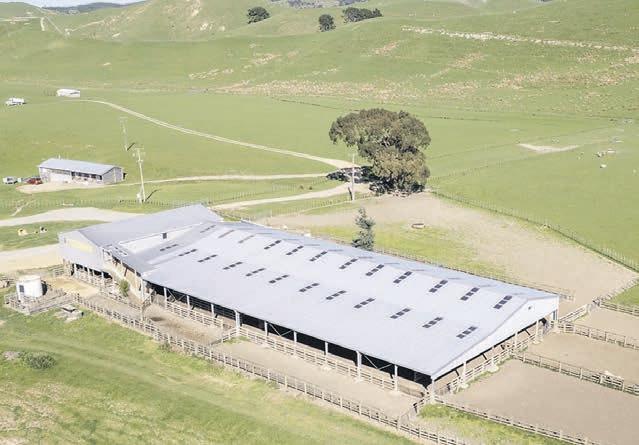
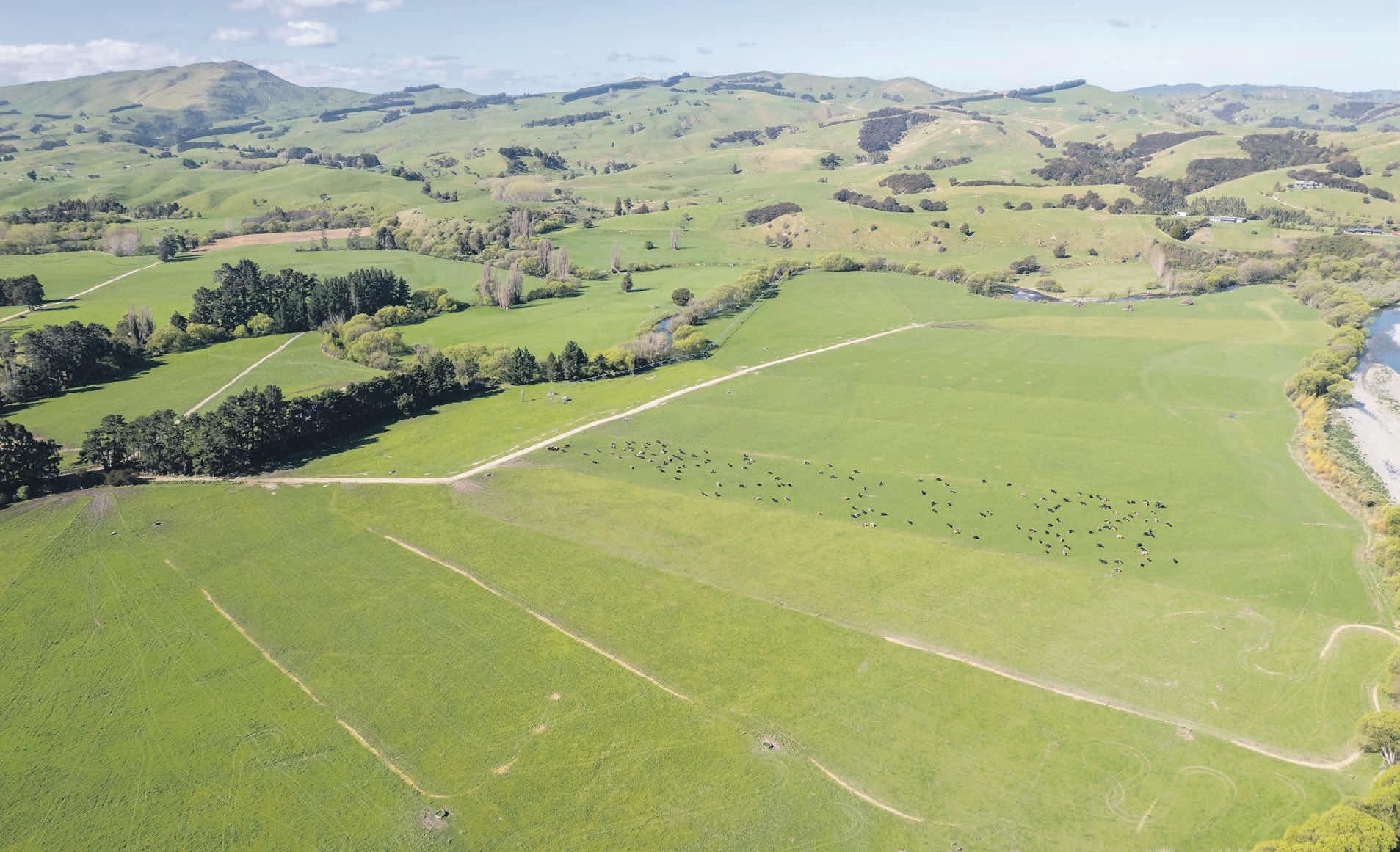


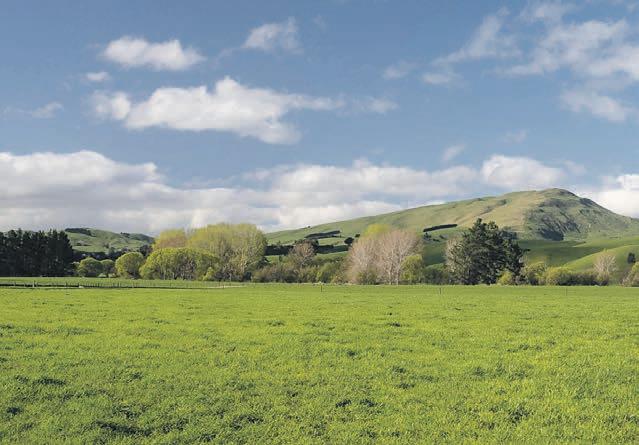
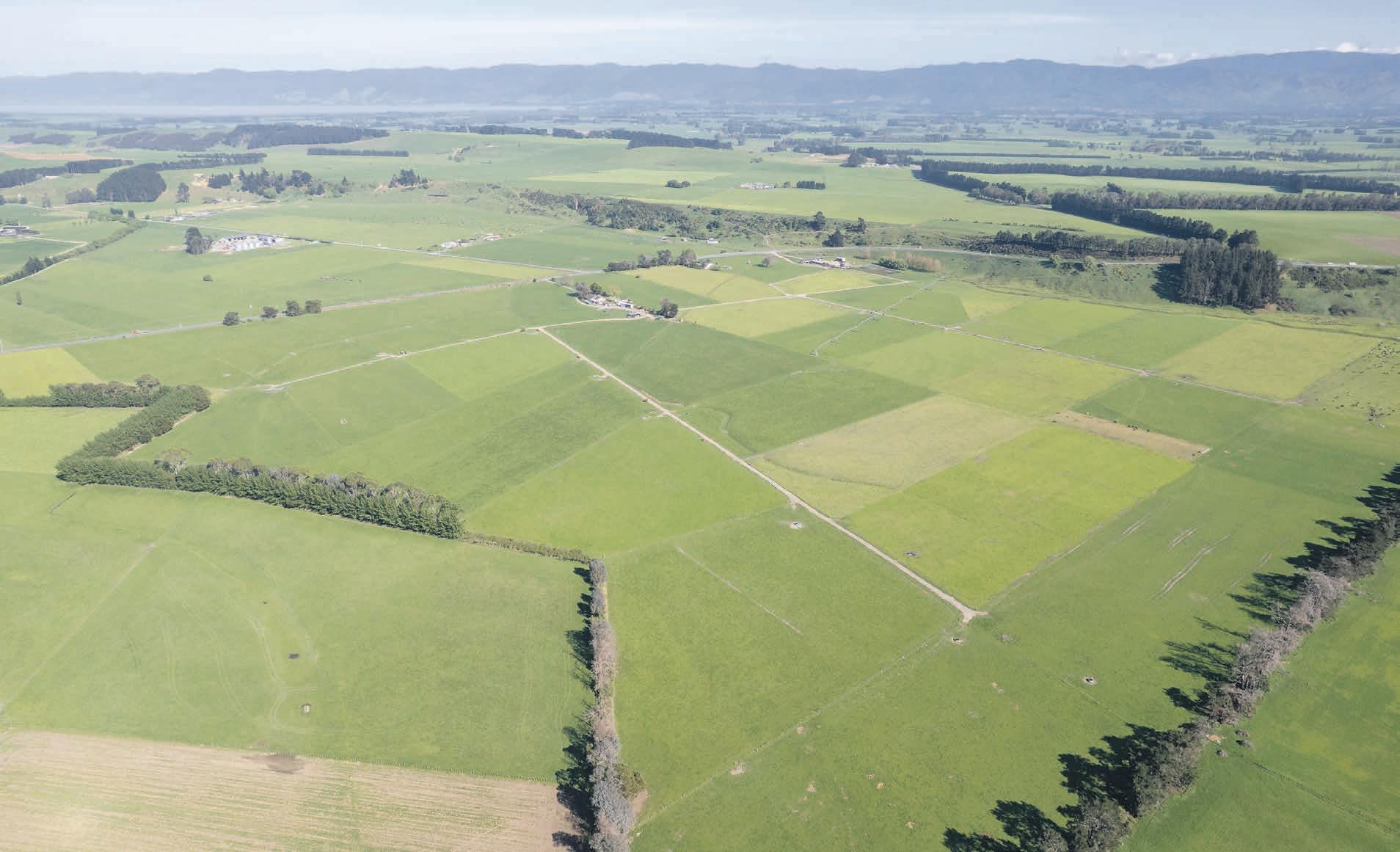



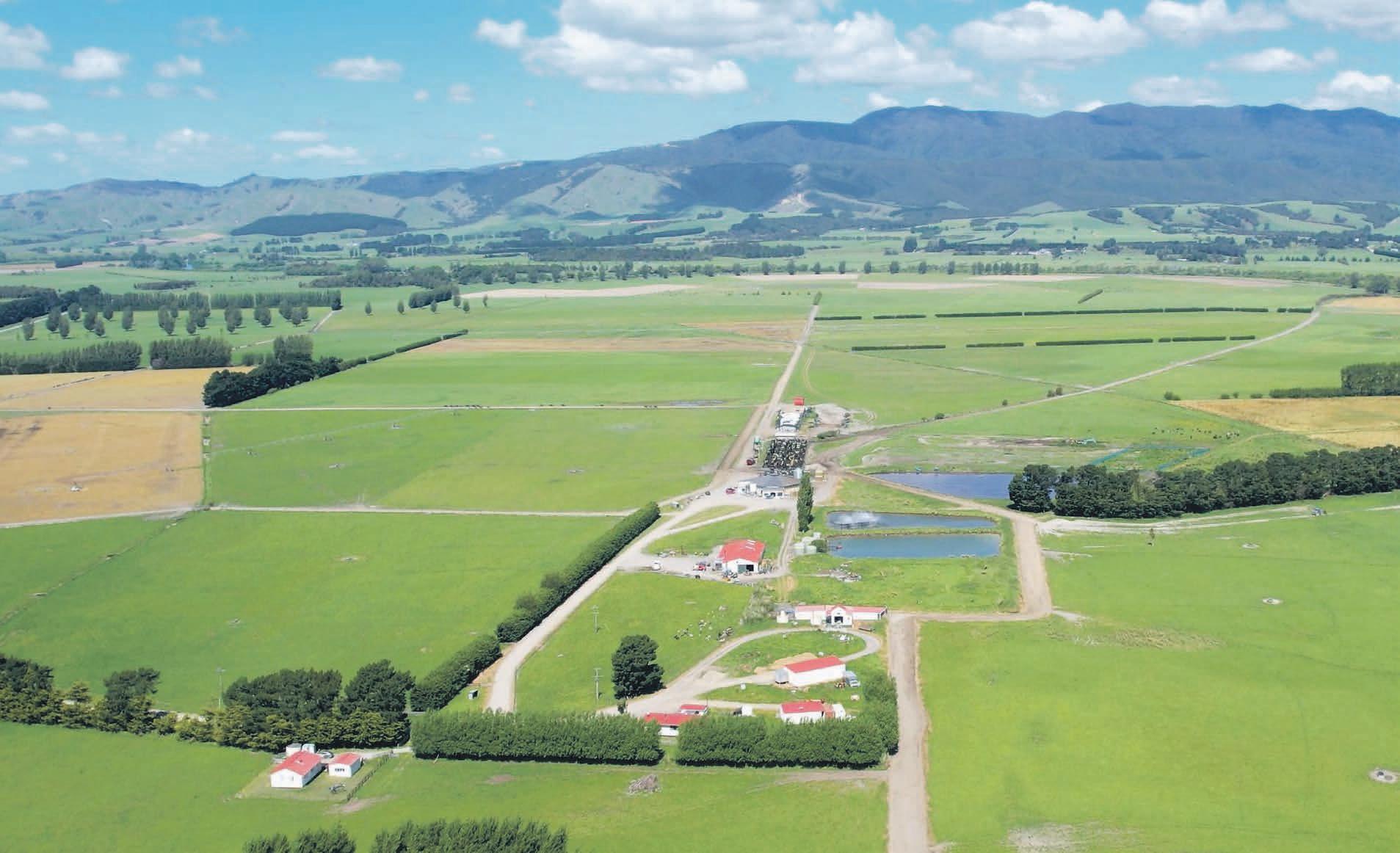

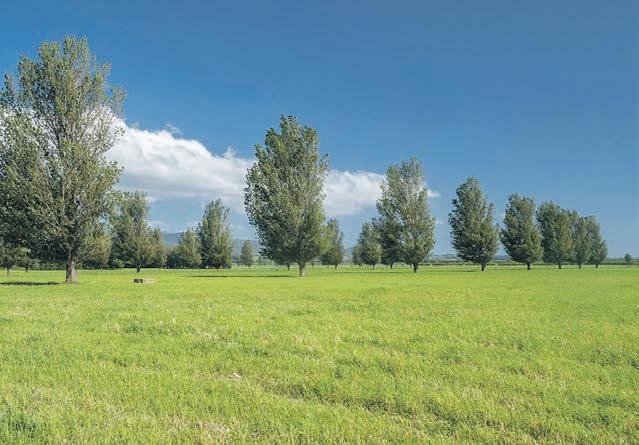
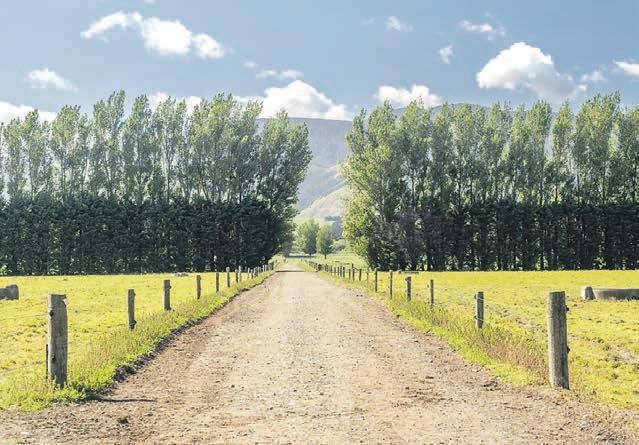
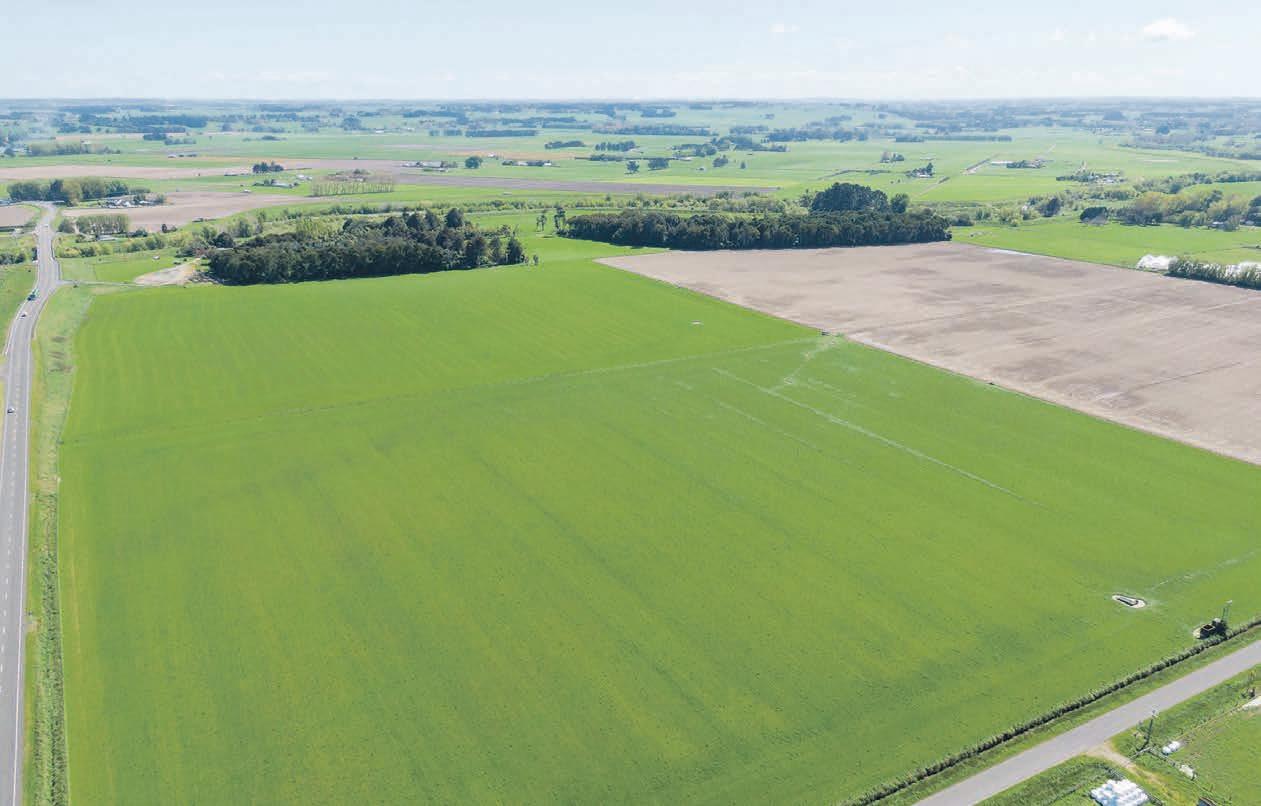

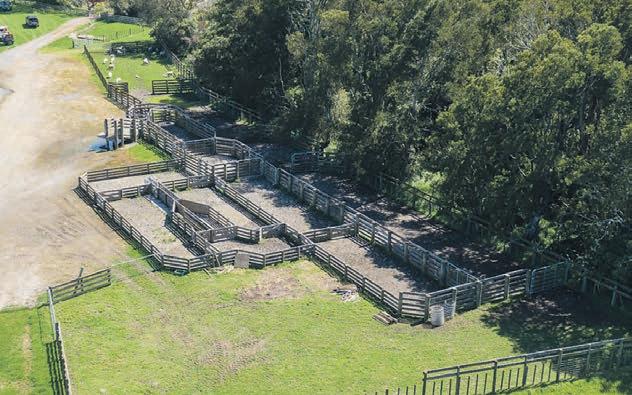
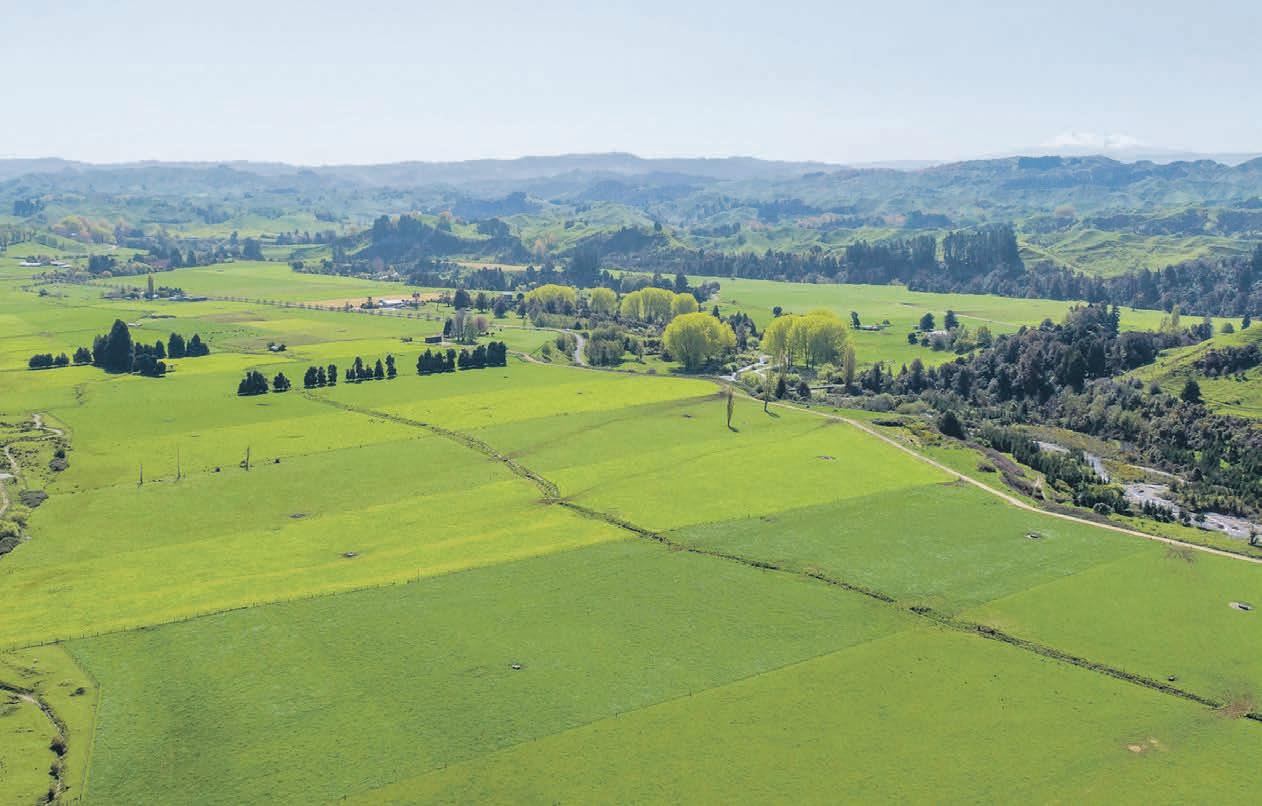


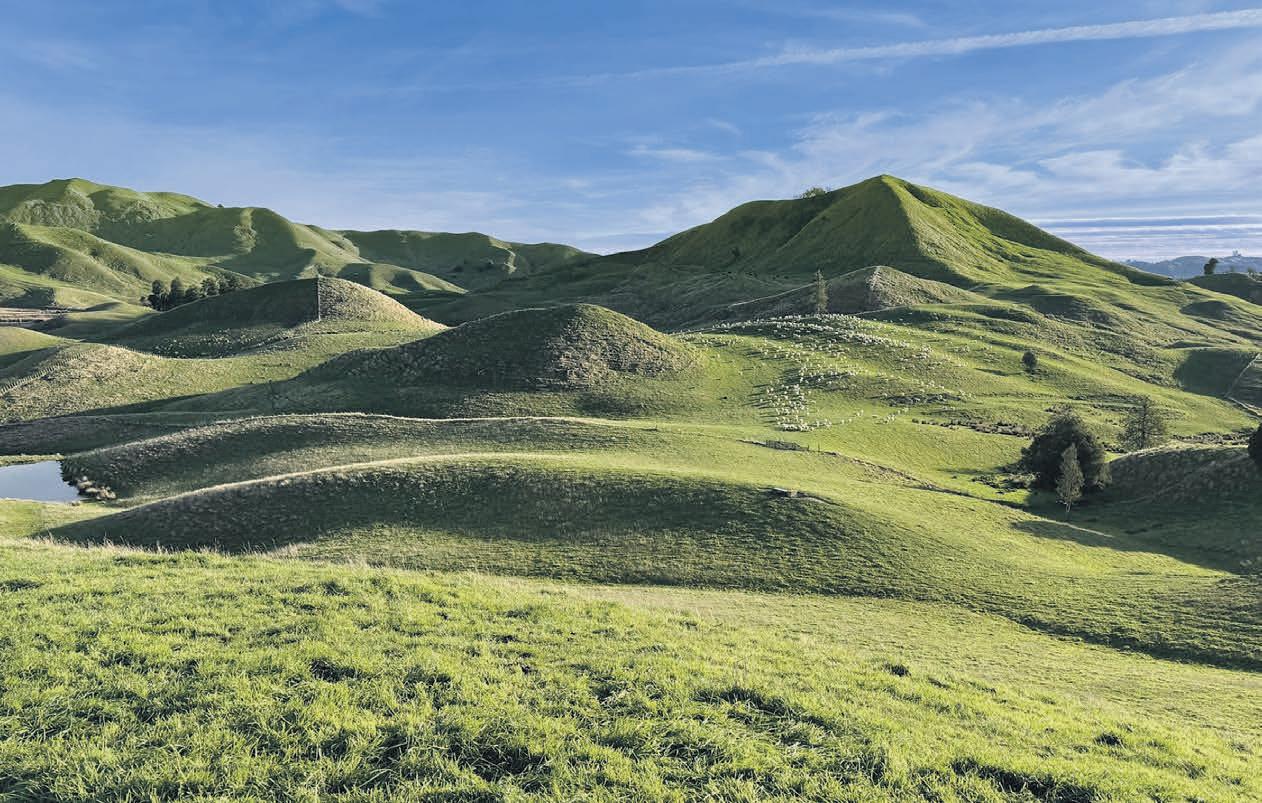

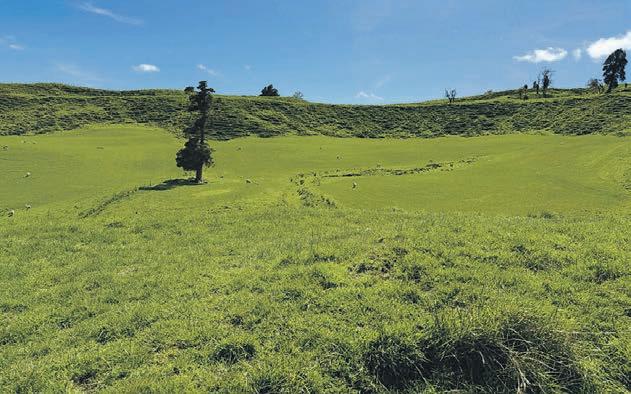
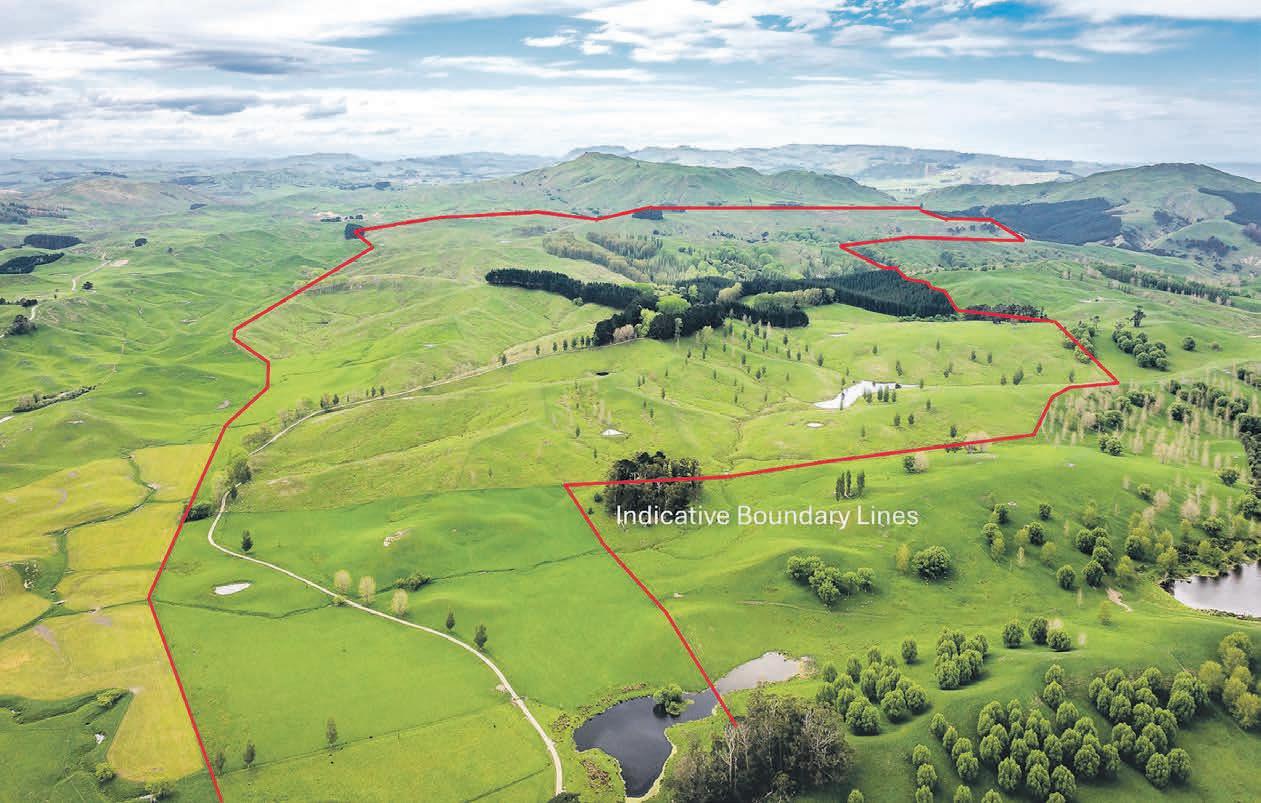


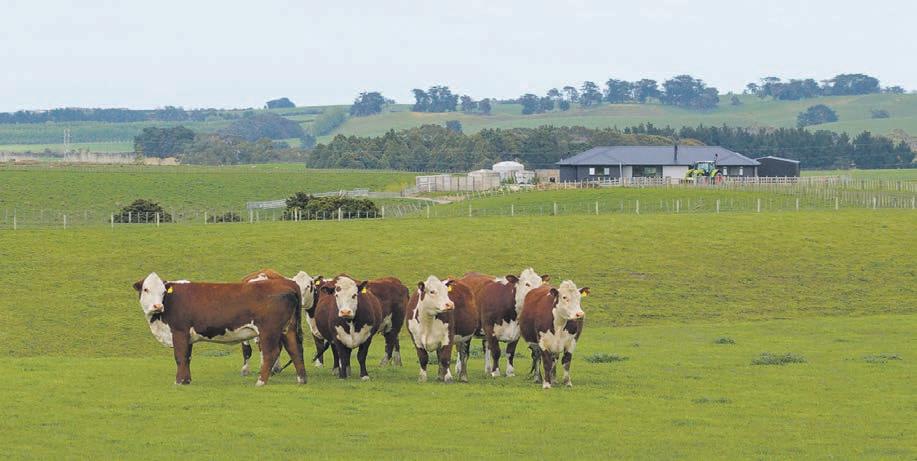
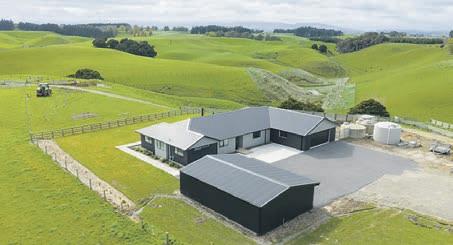

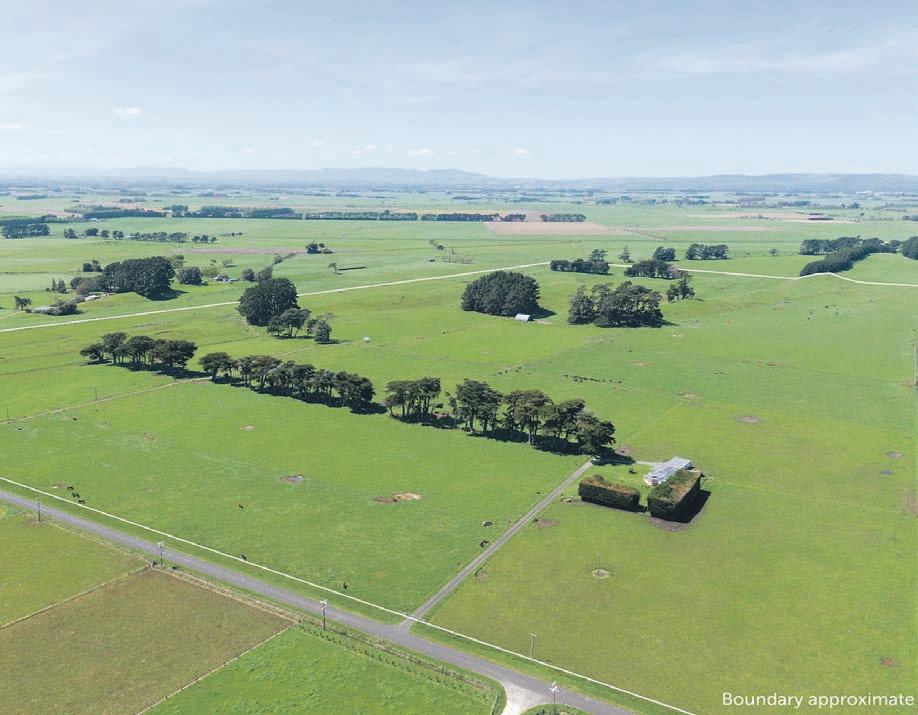
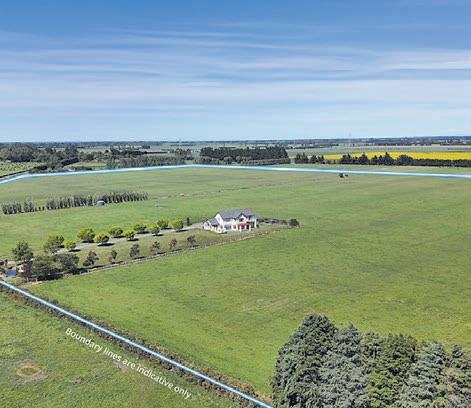

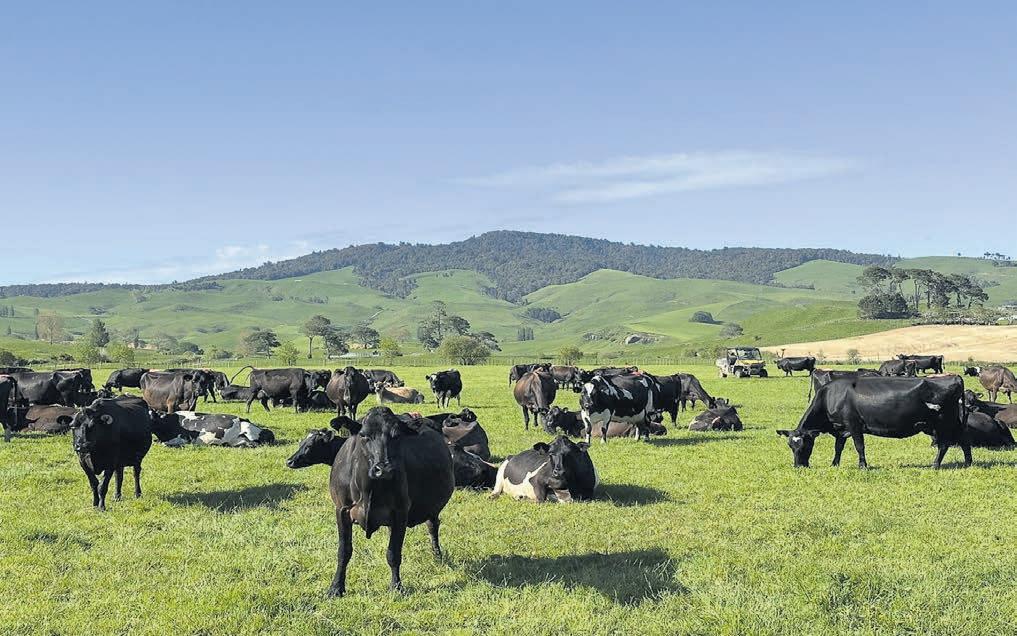
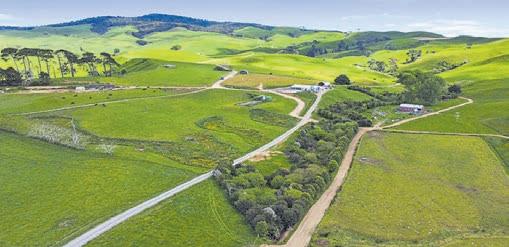


Countryside Opportunity Awaits
Kevin Deane Real Estate
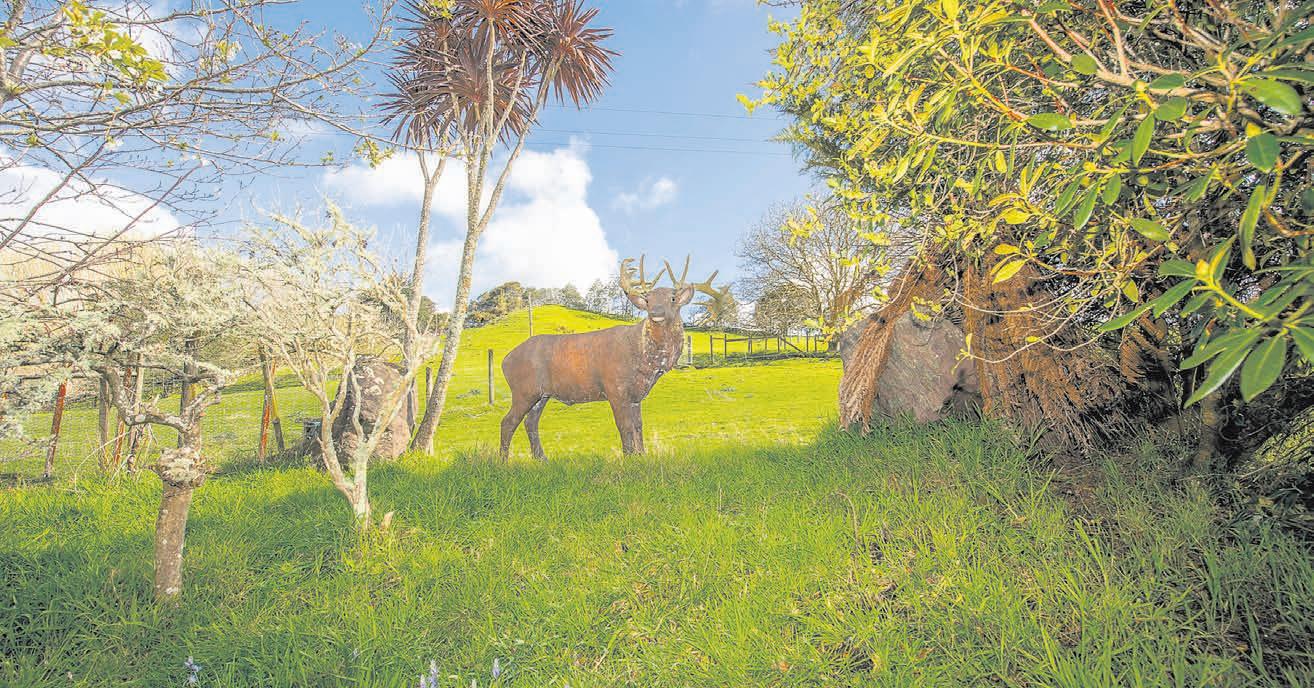
MANGAMAHU, WHANGANUI 1471 Mangamahu Road
Premium Opportunity in Mangamahu
Situated just 40km from Wanganui we have 171ha (more or less) right in the heart of Mangamahu.
The property has a great mix of flats to steep hill country, it is well fenced with the added bonus of having ample water supply. Currently the property is running breeding ewes, stags for velvet and also has finished some bought in steers in the spring.
This property presents a rare opportunity to secure an exceptional blend of flats to hills and hunting in a strong farming area. So, if you're looking to add to your existing operation or looking to invest in your future you will recognise good value here. Whatever your reasons this property is ready to support your next chapter.
Coastal Taranaki Dairy Opportunity

Coastal Taranaki Dairy Opportunity – Productive, Proven, and Versatile 189 Namu Road, Opunake
Located on the lush coastal flats of Taranaki, this exceptional dairy property offers consistency, fertility, and flexibility. Producing around 90,000kg of milksolids annually and consistantly with lease, this well-established operation sits on fertile, free-draining land that performs season after season.
The property features an in-shed feed system for both meal and molasses, supporting efficient production and herd health. Infrastructure is practical and well-maintained, designed for ease of management and reliability.
A spacious four-bedroom family home provides comfort and rural charm, making it ideal for those seeking a balanced farming lifestyle. Alternatively, the farm can be purchased as part of a runoff option with out the house offering flexibility for neighbouring or expanding farmers. Just minutes from the coast and within easy reach of local services, this farm combines strong production figures with an enviable lifestyle setting. With Taranaki’s iconic mountain as your backdrop and the ocean just beyond your boundary, this is the perfect blend of productivity and peace.
Whether you’re looking to continue dairy operations or secure a reliable runoff block with a quality home, this property delivers on every front.
Contact us today to secure your slice of proven Taranaki performance.
OPEN FARM: Thursday 13th Nov, 20th November 12.30pm-2pm 189 Namu Road, Opunake Tenders close 4pm, 28th November 2025 at the offices of Matthew & Co Real Estate Ltd


(Unless Sold Prior)
Closes 4.00pm, Friday 12 December 99 Wilson St, Whanganui VIEW 1.00-3.00pm, Thursday 13 & 20 November
Please bring own bike
M 027 643 6545 Grant O'Shanassy
E grant.o'shanassy@pggwrightson.co.nz

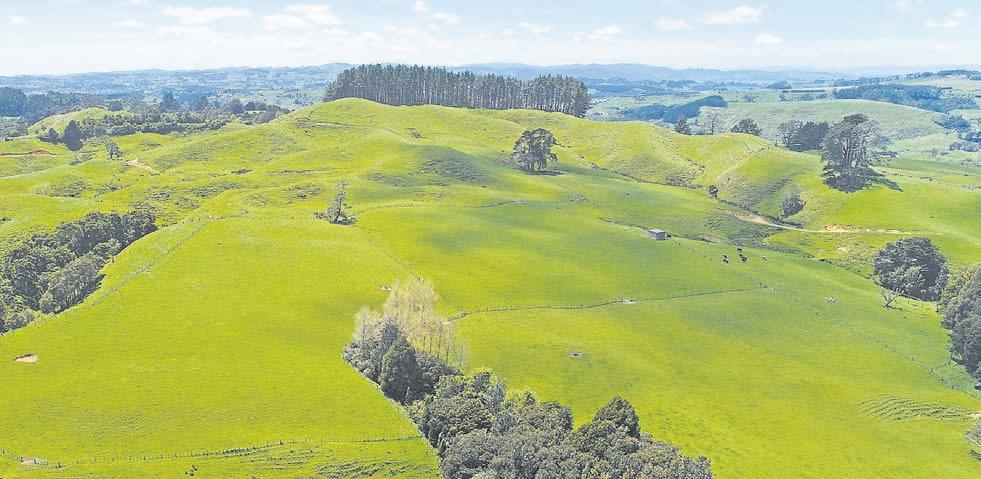

ONEWHERO, WAIKATO
97ha Farm Close to Town With 3 Titles
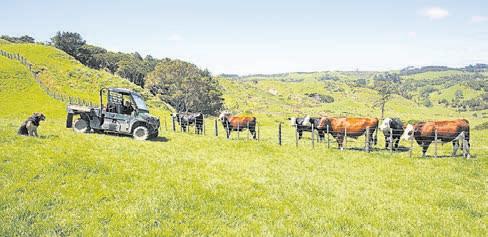
After 90 years in one family, this 97.27ha sheep and beef farm near Tuakau saleyards is ready for new ownership. Featuring a 4 bedroom home, 3 titles, quality pasture, silage paddocks, and native bush. Supports 400kg+ cattle to fattening.



Te Kawa 1270 Te Kawa Road
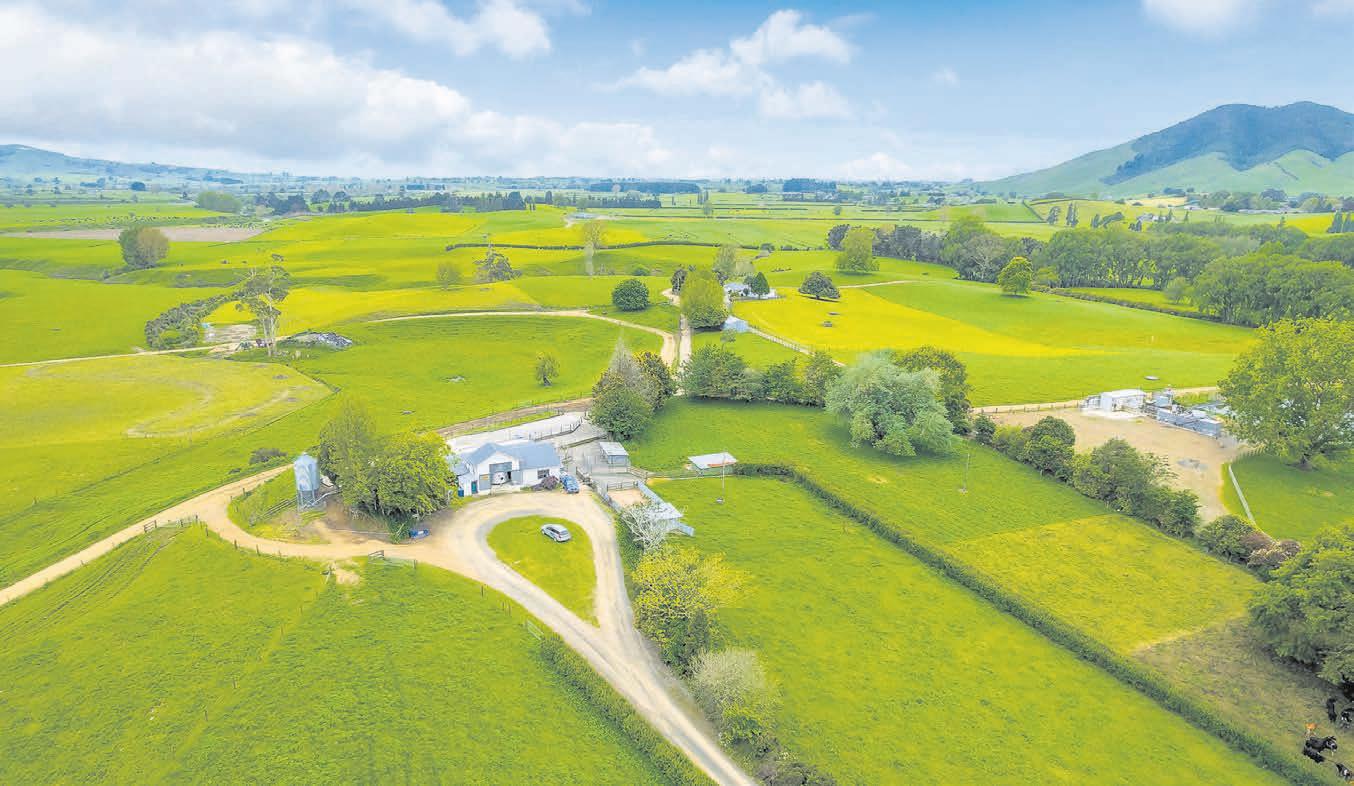
When quality is a criteria
Auction


For the first time in 106 years.. a rare opportunity presents itself in the heart of the Waikato.
Welcome to a beautifully maintained 163 ha dairy farm - flat to rolling contour, productive, peaceful, and proudly farmed for generations. At the heart of the operation is a 24 ASHB shed, complete with meal feeders and automatic cup removers - practical, efficient, and ready to go This property also boasts three quality homes - perfect for family, workers, or investment - plus extensive shedding for all your farm equipment and storage needs
Only 15 minutes from Te Awamutu this farm offers the ideal balance - productive rural living with town convenience close by. After 106 years, it's time for a new chapter. Will you be the one to write it?

Auction 12.00pm, Wed 10th Dec, 2025, (unless sold prior) View Tue 11 Nov 12.00 - 1.00pm Tue 18 Nov 12.00 - 1.00pm Web pb.co.nz/TWR215700


Dannevirke 227 and 255 Te Rehunga North Road and 77 Tamaki River Road Tender
Paul Wheeler M 027 336 6158 E paul.wheeler@pb.co.nz
John Sisley M 027 475 9808 E john.sisley@pb.co.nz

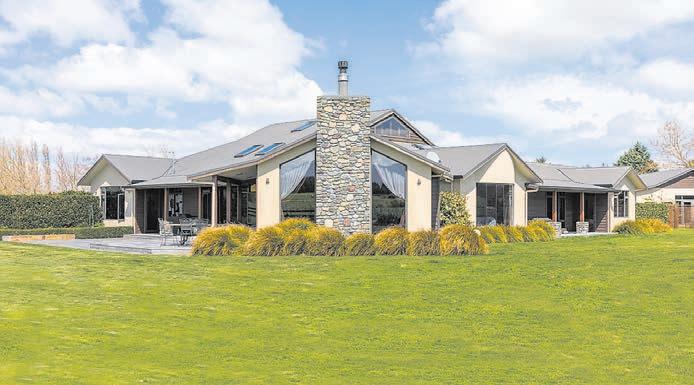
Turn key dairy business - 249 ha
Located in the highly regarded Te Rehunga farming area within the sought-after Tararua District, this well-developed 225 ha dairy farm with a separate 24 ha support block offers genuine scale, premium soils and quality infrastructure Currently milking approximately 450 cows and supplying Fonterra with around 175,000 kgMS annually, the property performs strongly on a grass-only system The contour is all flat, underpinned by fertile soils that support healthy pastures through a well managed fertiliser and re-grassing programme The 2018-commissioned 40 ASHB dairy shed is well positioned near the centre of the farm and supported by a one-million-litre effluent storage bladder. Excellent supporting infrastructure includes multiple implement and storage sheds, near-new calf-rearing facilities and a reliable water system. Accommodation is a standout feature, with four dwellings providing flexibility for owners, managers and staff.
Tender closes 2.00pm, Thu 20th Nov, 2025, Property Brokers, 4 Stanley Street, Dannevirke
View By appointment
Web pb.co.nz/DR106488


Sam McNair M 027 264 0002 E sam.mcnair@pb.co.nz
Jared Brock M 027 449 5496 E jared@pb.co.nz
Eketahuna 886 Kakariki Road
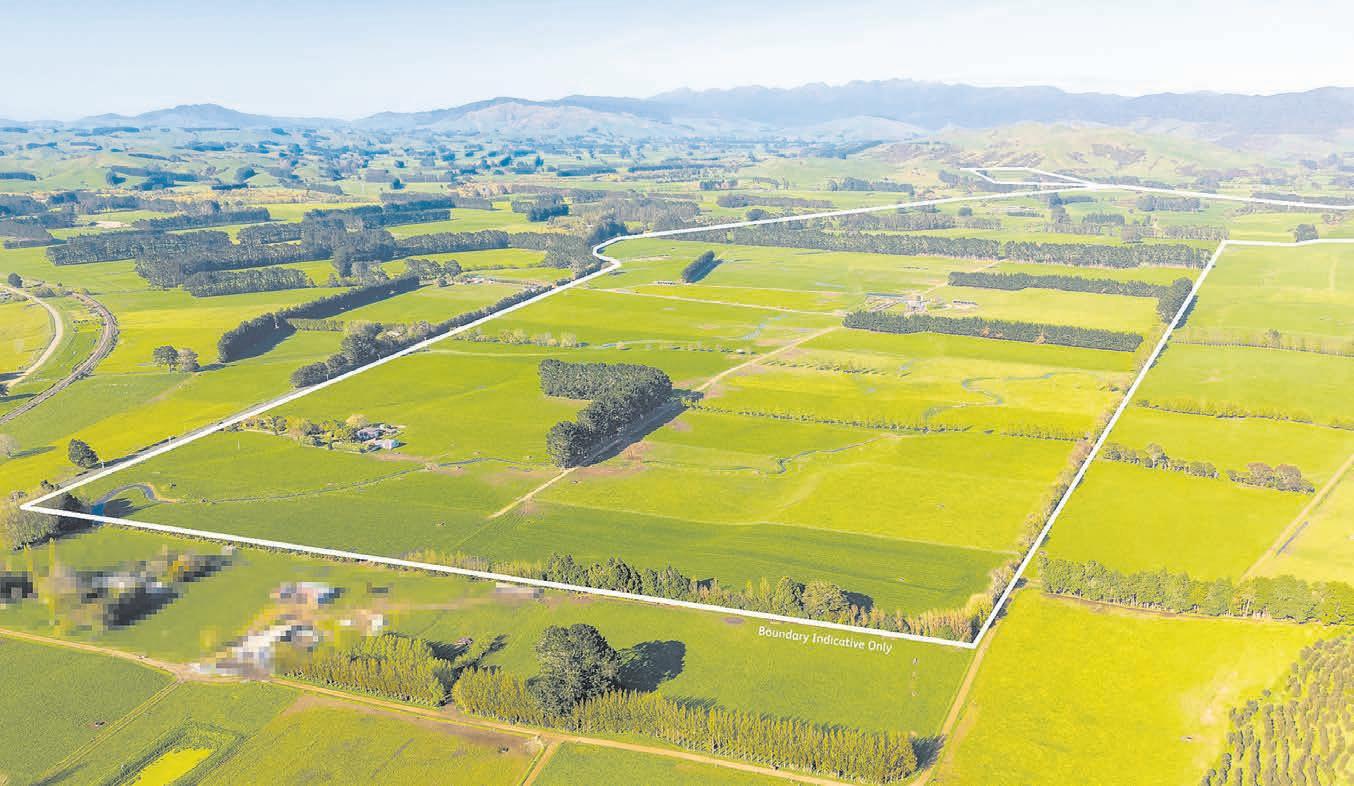
Glenbrook - 269 ha - Multiple purchase options
Tender
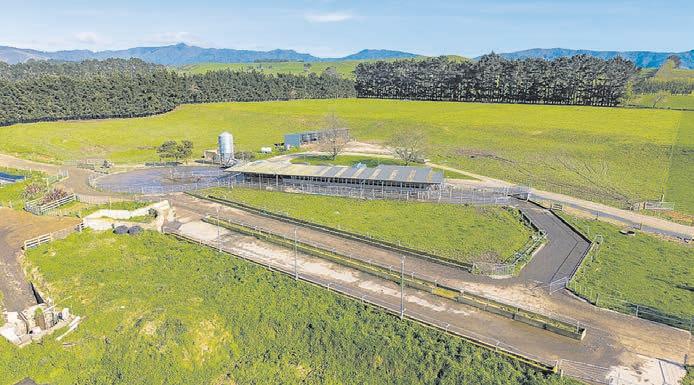

A rare opportunity to acquire a well-established 269 ha dairy farm in the sought-after summer safe Hukanui farming district just south of Pahiatua.
Glenbrook offers scale, excellent infrastructure, multiple dwellings and free draining fertile soil types Originally an amalgamation of several properties, Glenbrook features two herringbone (32 and 36) dairy sheds both with modern plant, feedpad, loafing area and excellent shedding
There are a total of four dwellings on the property with the main home on a separate title offering purchase options With production around 1000 kgMS to the ha and purchase options for dairy units from 80 ha through to the property in its entirety, Glenbrook provides for first farmers, expanding sharemilkers or relocating entities looking for a reliable farming environment.

Central Canterbury Dairy - 324 ha
Located just 45 minutes from Christchurch, Aitkens Road provides an excellent opportunity to purchase a mid-scale self contained dairy business. Centrally located 54-bail rotary cowshed with ACR's, in-shed feeding capability along with a 600-cow yard, which is complemented with two contiguous feed pads Peak milking 710 cows, achieving 275,852 kgsMS in the 2024/25 season off approximately 285 eff ha. Nine bay calf shed, two staff homes plus quarters. Option to secure a further 130ha leasehold support land by negotiation. Vendor invites offers over $7.75m + GST (if any) - land & buildings Livestock available at valuation.


Tender closes 2.00pm, Wed 3rd Dec, 2025, Property Brokers, 141 Main Street Pahiatua View By appointment Web pb.co.nz/PR208720


Jared Brock M 027 449 5496 E jared@pb.co.nz
Bevan Bisset M 027 465 9651 E bevan.bisset@pb.co.nz

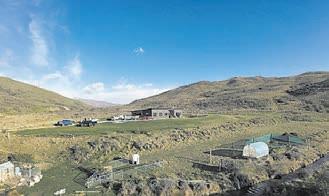


In the perfect spot
Nestled in the heart of the Quailburn area, this remarkable property offers more than just a farming opportunity and land acquisition - it's a lifestyle few will ever experience. With regenerative farming practices in place for the past seven years, the land reflects both productivity and care for the environment. From the comfort of the homestead lounge, watch gliders drift across the sky, or spend your weekends skiing in winter, fishing in summer, or boating on nearby lakes and rivers. Enjoy breathtaking views of the Southern Alps with sweeping sights over Omarama. The property features a well-balanced mix of flats and rolling hill country, complemented by a well-appointed residence.

2 1
Scan for more
Hororata 145 Aitkens Road
Omarama 508 Quailburn Road
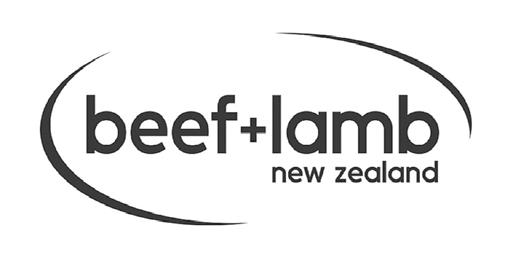
2026 Notice of Elections, Call for Nominations and Remits
Call for Nominations: Directors and Directors Independent Remuneration Committee (DIRC) nominations
Beef + Lamb New Zealand Ltd (B+LNZ) give notice that nominations are now open for B+LNZ Directors and Directors Independent Remuneration Committee (DIRC)
Under section 41 of the B+LNZ constitution, two electoral district Directors will retire by rotation at the 2026 annual meeting
Nominations are invited to fill two Board of Director vacancies, one for each of the following electoral districts:
• Eastern North Island (ENI)
• Southern South Island (SSI)
Patrick Crawshaw (ENI) and Geoffrey Young (SSI) must retire by rotation Geoffrey Young has advised that he will retire from the Board Patrick Crawshaw is eligible to re-stand and has confirmed his intention to stand for re-election
The successful candidates for these Director positions will also be appointed to the Board of Directors for the New Zealand Meat Board
Nominations are also invited to fill one vacancy on the Directors Independent Remuneration Committee (DIRC)
All nominations must be made on the official forms, available:
• at www electionz com/BLNZ2026R
• by emailing iro@electionz com or
• by phoning 0800 666 032
All queries regarding B+LNZ elections should be directed to the Returning Officer on 0800 666 032
Call for Remits for the 2026 Annual Meeting
Remits are called for under section 12 of the Second Schedule: Proceedings at Meetings of the B+LNZ constitution Remits are a matter that the proposing farmers are raising for discussion and resolution at the annual meeting
The B+LNZ remits policy and guidelines can be found at beeflambnz com/about/corporation-documents
Remits must be supplied in writing on the official forms, available from B+LNZ:
• by emailing enquiries@beeflambnz com or
• by phoning 0800 233 352
All queries regarding annual meeting remits should be directed to B+LNZ Chief Operating Officer, Cros Spooner, on 0800 233 352
Key Deadlines
• Nominations and remits close: 5pm on Friday 5 December 2025
• All nominations are to be received by the Returning Officer
• All remits are to be received by B+LNZ
• Confirmation of nominations: confirmed by electionz com and B+LNZ by media announcement in the week commencing 8 December
• Annual meeting date is 17 March 2026 in Timaru Voting timelines will be advised at the time of announcement of Director elections in the week of 8 December 2025
Voting Eligibility
To be eligible to vote in the B+LNZ Director elections, or for annual meeting resolutions and remits (if any), a livestock farmer must, on 30 June 2025:
• have owned at least 250 sheep, or 50 beef cattle, or 100 dairy cattle
• be registered on the B+LNZ electoral roll
Voters are only eligible to vote for the Board of Directors in the electorate where they farm
If you have previously received voting instructions, you are already on the electoral roll and do not need to re-register All voting for Director elections, company resolutions and farmer remits will be conducted online only
If you want to check your registration contact B+LNZ on 0800 233 352
Warwick Lampp
Returning Officer – Beef + Lamb New Zealand Ltd PO Box 3138, Christchurch 8140 iro@electionz com, 0800 666 032











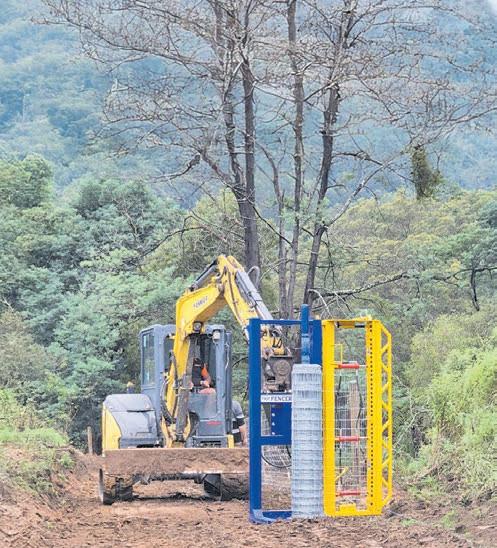
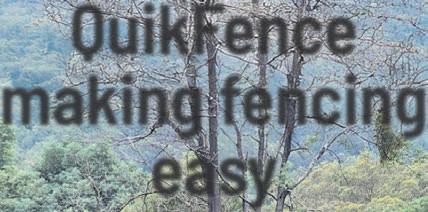
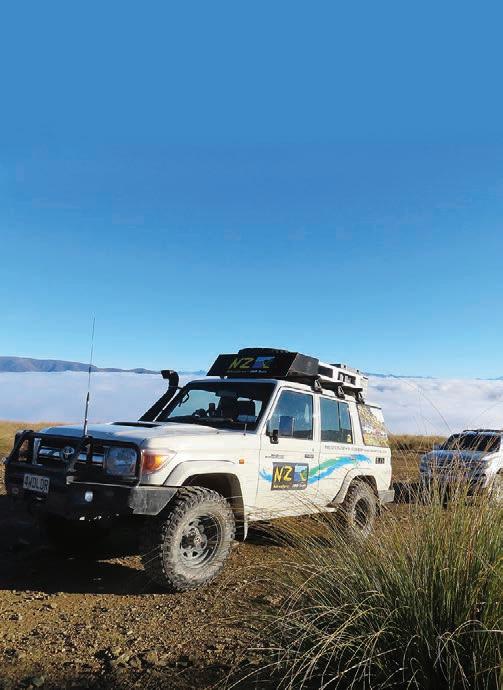






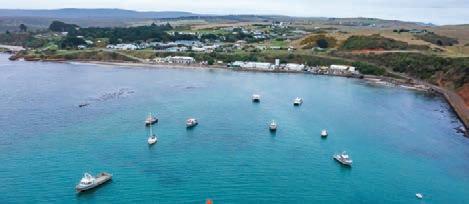






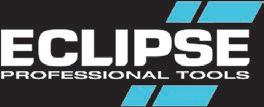





































• FUTURE FOCUSED - 30 Years of Performance Recording Shedding Sheep.
• FIRST for FACIAL ECZEMA - Ramguard™ since 2006, 0.55.
• FIRST for PARASITES - Carla™ antibody test since 2012.

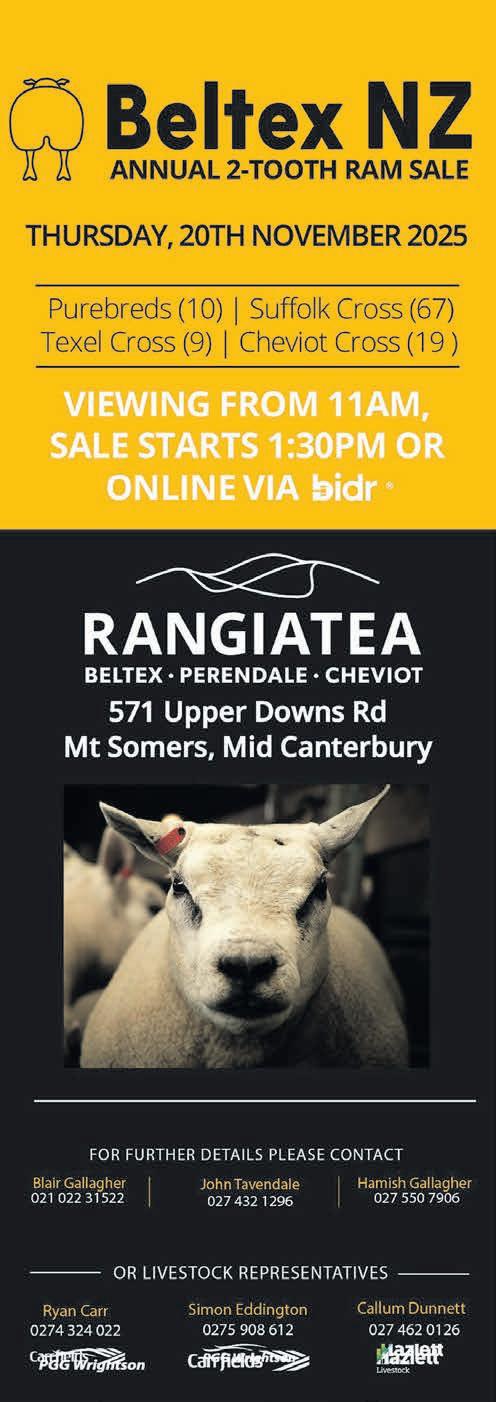
• FIRST for MEAT, FERTILITY - AnimalPlan/SIL recording since 1995.
• TOP MEAT YIELDING RAMS - Low Input Trial Results.
• HOOF SCORING - Every Ewe and Ram Hogget.








that strive where others struggle.








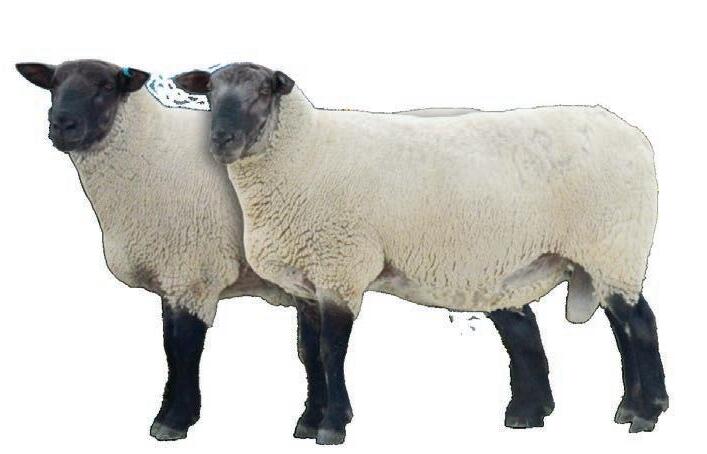
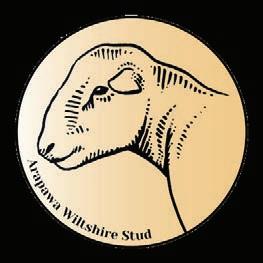

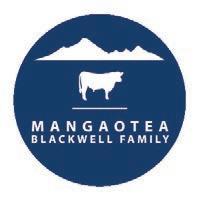

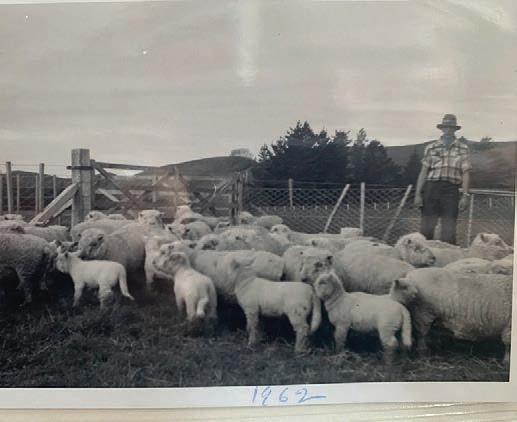



















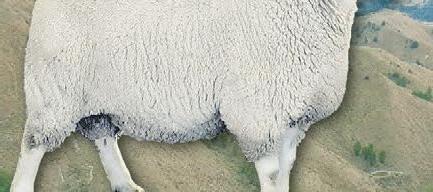




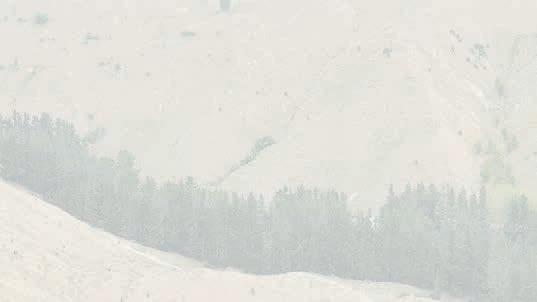











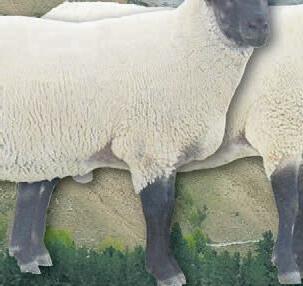





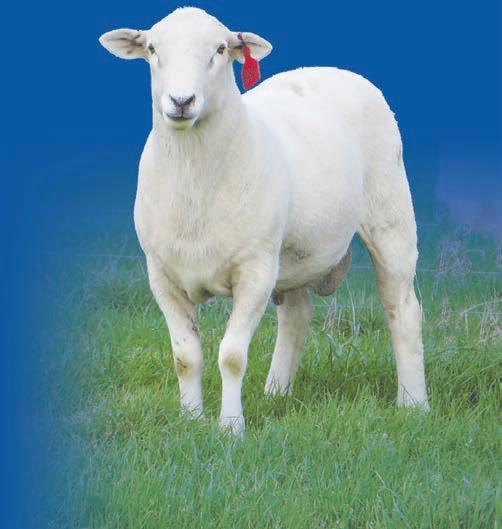
MT CASS WILTSHIRES
MONDAY 24TH NOVEMBER
27 Darnley Road, Waipara Viewing 11am, Sale 1pm
>70 1Shear Purebred Wiltshire Rams
These are top lines of
027 591 8449
Simon Eddington (PGGW) 027 590 8612
Dave Wooldridge (Mt Cass) 027 259 4859
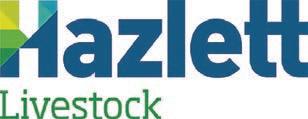

WILLOWHAUGH SOUTHDOWNS BLENHEIM
DORSET DOWN
Easycare Genetics NZ
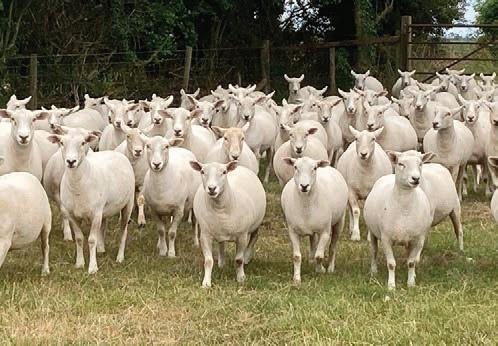


ANNUAL RAM SALES
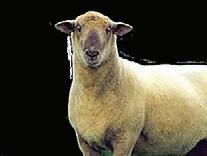



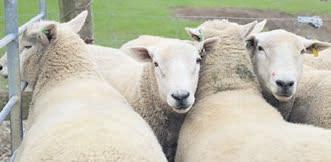
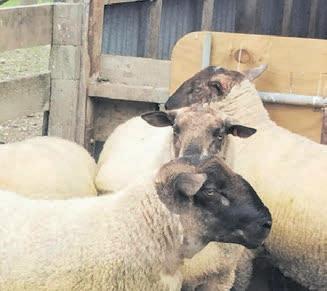








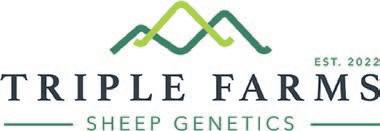
NUGEN TEXEL

9TH DECEMBER 2025 – 2PM On Farm and 363 CATHERWOODS ROAD, CUST AGENTS: RURAL LIVESTOCK

Ultimate low input, proven high performance, meat maternal, short tailed, bare bum and belly, minimal drench, selected for highest net income.
Recording: Fertility, Survival, Weaning Weight, Growth, Carla, EMA, gdf8, FE and shed score.
Contact:
Brent Macaulay, RLL 021 220 0850
Robbie Ried, RLL 027 473 0868
Mel McCormack, Vendor 021 050 3130
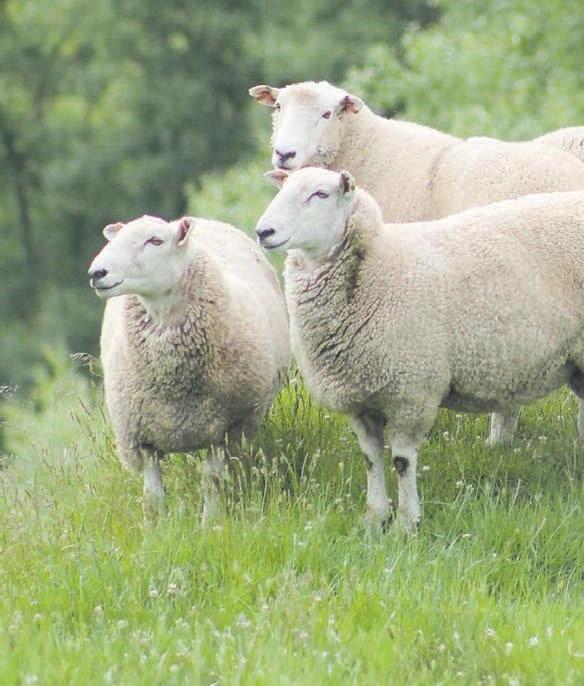

Building Better Bloodlines
Piquet Hill Rams are:
• Moderately framed and structurally sound
• Extremely hardy
• Prolific and vigorous
• FE tolerant

• Worm resistant

• DNA profiled and parent verified

Maternal composite (FE testing @ .67)
Sheddmaster (FE testing @ .40)
Romney (FE testing @ .72)
Blackface terminal composite
Enquiries and viewings welcome Will Jackson 027 739 9939 william@piquethillfarms.co.nz www.piquethillfarms.co.nz

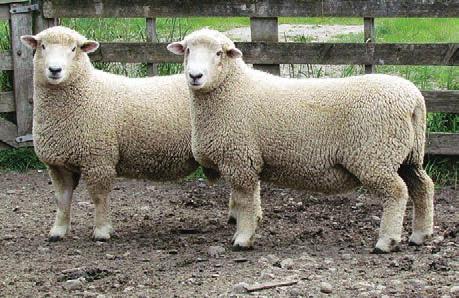

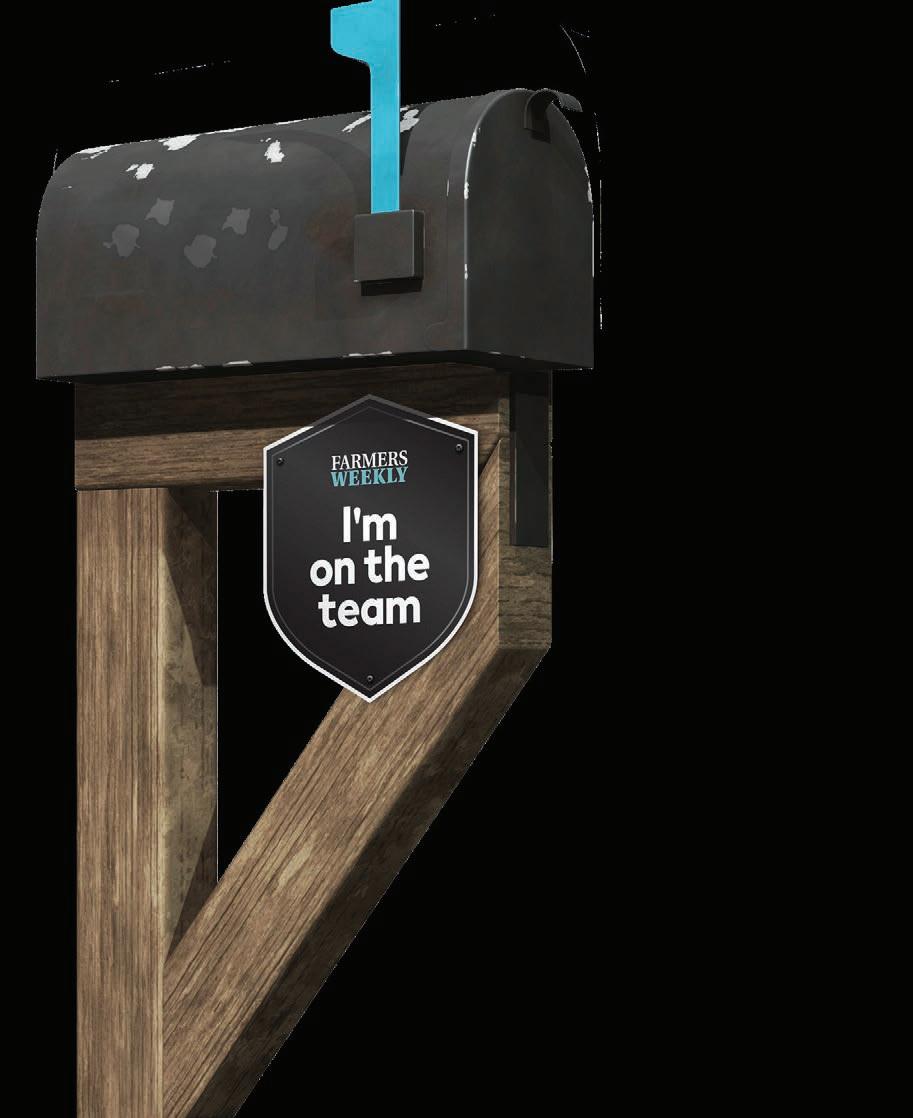


Markets
Proudly sponsored by
Where to next for store lambs
The best advice is to keep a finger on the pulse of a market that will likely be changing every week.

Alex Coddington MARKETS
Livestock
THE store lamb market has been tracking downwards under usual seasonal pressures, moving further towards a soft market each day that Hawke’s Bay goes without rain.
From a superb market opener of $6/kg, the first of the best store lambs set a high standard. Since then, the market has lost around $1/kg, with the current supply at time of writing now averaging closer to $5/kg.
Despite the size of the cut, by looking at historical averages relative to schedules, it’s clear to see why this is still a level pleasing for both seller and buyer. What’s important now is where to next for the store lamb market.
The supply of store lambs out of Hawke’s Bay is expected to increase over the coming weeks as more lambs reach weaning weights. With only just enough support from Taranaki/King Country or Manawatū to keep offerings on the move, the current market landscape of high supply and soft demand paints a picture of low prices.
There are still plenty of buyers around the traps looking to get lambs on early, but there are also plenty holding back with expectations that the market will continue to soften.
The question now is: how low might they go? And given the
strong finish prices and confident outlook, should they even be pushed there at all?
By tracking store lamb prices in the North Island over the past five years relative to lamb schedules, it’s clear to see a trend of high prices in the range of 45%-51% through the first six weeks of the season (October–November). This has then been followed by a period of softness through December at 41%-45% of schedule. Finally, it has resulted in a large spread, 38%-47%, through late summer with that final result all largely dependent on summer drought conditions.
This week, the ongoing dry spell, relentless winds and low water tables in early-lambing Hawke’s Bay have taken store lambs from a five-year high of 54% of schedule or $6/kg back to the five-year average 46% level $5/kg.
Looking ahead, the most brutal market conditions of low demand over the past five years were last year, when store lambs dropped to 40% of schedule in December.
Against an outlook of a $10/kg average schedule price through this period, a worst-case scenario could see store lambs reach a low of $4/kg this season, still 75c/kg more than last year, and $1.40/kg more than they were in December 2023.
If values were to withstand market pressures – that is, if demand holds up and Hawke’s Bay gets some rain before Christmas – prices will likely remain closer to the average and settle at 42%
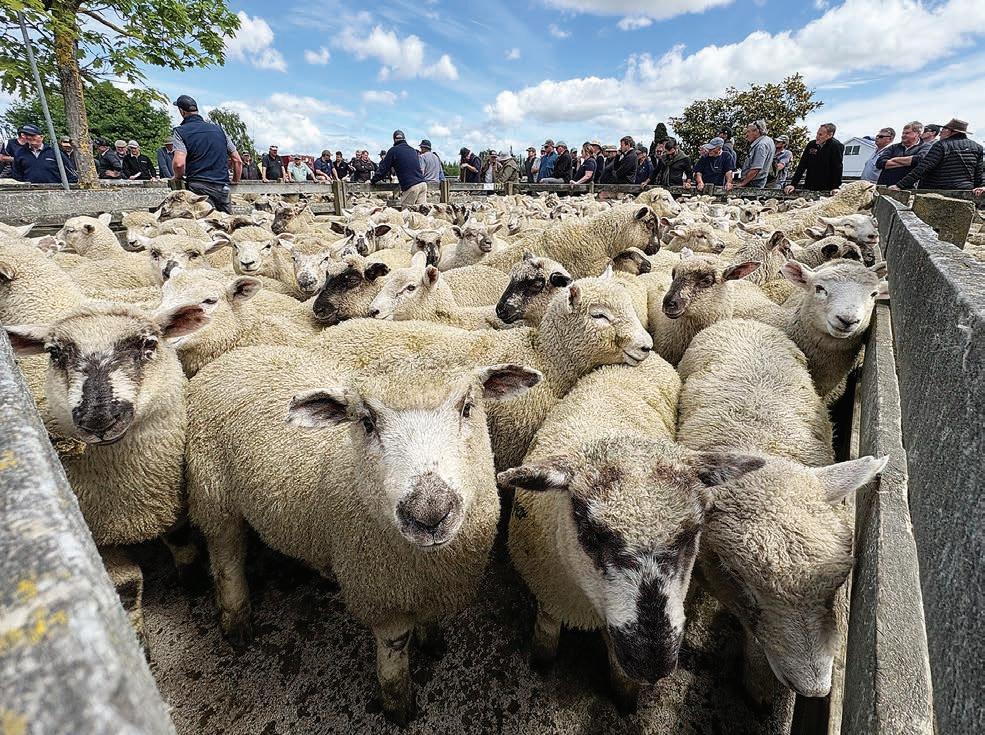
The procurement factor will be weighing on finished prices next year; this is as close as you can get to a guarantee.
of schedule through December, somewhere closer to $4.25/kg.
With all the optimism one could muster about the heavens opening up over Hawke’s Bay through all of December, it could warrant a scenario similar to that of the summers of 2021-2023, when feed levels were encouraging a store lamb price that was 44% of schedule, which could lead to values north of $4.44/kg.
South Island store lamb prices have been far less volatile through the early period as supply is delayed by later lambing. Prices over the past five years have
operated at a range between 41% and 47% through OctoberDecember, before shifting between 43% and 49% of schedule by late summer. This year that would look like a price range of $4.30-$4.90/ kg, depending on the unfolding outlook of supply and demand and summer drought conditions across the country.
But there’s always more to the story to consider. The procurement factor will be weighing on finished prices next year; this is as close as you can get to a guarantee. No matter what shape the market is in, as long as capacity remains unchanged, processors will be competing over a limited supply of lambs and will no doubt be making moves today to combat the challenge.
The premiums given out for supply this season should be encouraging a level of competition over store lambs for a lot of
LESS
South Island
lamb prices have been far less volatile through the early period as supply is delayed by later lambing.
large-scale traders. The end-game demand for processors to have enough store lambs around them through peak processing next year cannot be overlooked and may keep up some level of buoyancy within the market unlike anything we have seen in previous years – despite whatever pressure is unleashed for a hard value downturn.
The moral of this story is that even with the most accurate data and the most confident outlook to base predictions and plan markets off, there are still a number of supply and demand factors that will ultimately weigh on the end result and value of store lambs.
The best advice is to keep a finger on the pulse of a market that will likely be changing every week and, given the broader state of play, keep demanding a fair exit strategy for a lamb that’s worth the money.


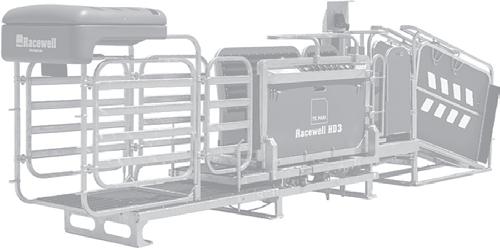









Cattle Sheep Deer

Weekly saleyard results
These weekly saleyard results are collated by the AgriHQ LivestockEye team. Cattle weights and prices are averages and sheep prices are ranges. For more detailed results and analysis subscribe to your selection of LivestockEye reports. Scan the QR code or visit www.agrihq.co.nz/livestock-reports



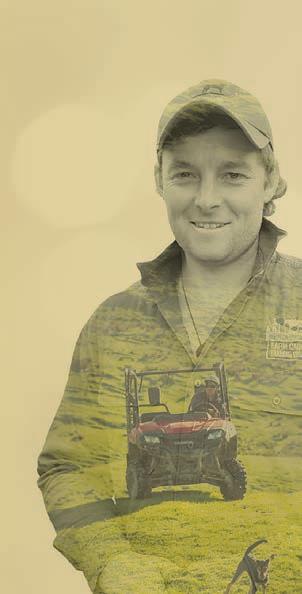











Finding neutral in southern climate gearing

HEN it comes to the weather in New Zealand there are a few “climate drivers” that we monitor to help us work out likely upcoming patterns.
These are:
• ENSO (El Niño-Southern Oscillation)
This is a climate cycle that involves fluctuations in sea surface temperatures and air pressure across the equatorial Pacific Ocean.
ENSO influences global weather patterns and on our side of the Pacific can result in either a warmer-than-average phase that produces more rain and cloud north of New Zealand and more easterlies here, called La Niña – or we can get the opposite (El Niño), which for NZ often produces windier westerlies and more northern high pressure, making the West Coast wetter and eastern areas drier and hotter.
For now ENSO is neutral with our usual spring westerlies dominating – and while there are signs of possible La Niña development before the year is done, these signals still have not yet been sustained at a sufficient strength or duration to meet criteria for an active La Niña event.
• SAM (Southern Annual Mode)
SAM is a climate pattern that involves the north-south movement of the band of windy westerlies that circle the South Pole. It causes alternating changes in wind and storm activity between mid-latitudes (like New Zealand) and higher latitudes near Antarctica.
Put simply, a positive phase brings calmer weather to NZ and stronger winds to the Southern Ocean, while a negative phase sees calmer conditions over the Southern Ocean as the belt of windy westerlies roars up and over NZ (sound familiar in recent weeks?).
As of late October the SAM index was negative – but for the first week or two of November we expect neutral SAM levels (hence a reduction in winds since November started).
• IOD (Indian Ocean Dipole)
This is basically the Indian Ocean’s version of ENSO and right now it’s what we call a “negative IOD” with the latest index value reaching -1.61degC for the week ending October 26 – the most negative IOD value recorded since Australia’s dataset began in August 2008.
The Bureau of Meteorology’s model predicts the negative IOD event to continue throughout spring, with a return to neutral in early summer.
This simply produces more rain and low

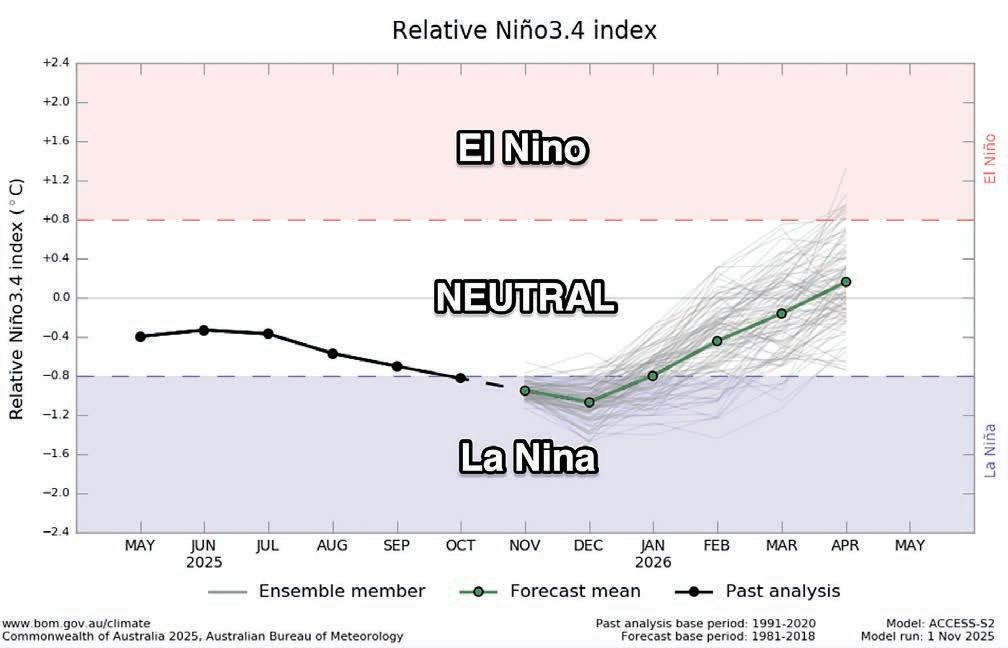
NEUTRAL: Global modelling suggests the Pacific may just dip into a technical La Niña this month or in December – but going into early 2026 it looks to return to neutral. Image: BoM
pressure in the northwest of Australia but also central and southern Australia – and to some degree this means NZ may get the “leftovers” of any systems dropping southwards, or eastwards, out of Australia. To project out towards summer we use these three climate drivers to help work out the various tugs of war occurring around the Southern Hemisphere.

This is why sometimes it’s hard to answer a long-range forecast – with all these moving parts – and it’s also why even if a La Niña gets officially announced it’s not the only moving part that shapes NZ’s weather. For the most part, NZ remains in a completely neutral weather pattern as we go further into November and towards December.

















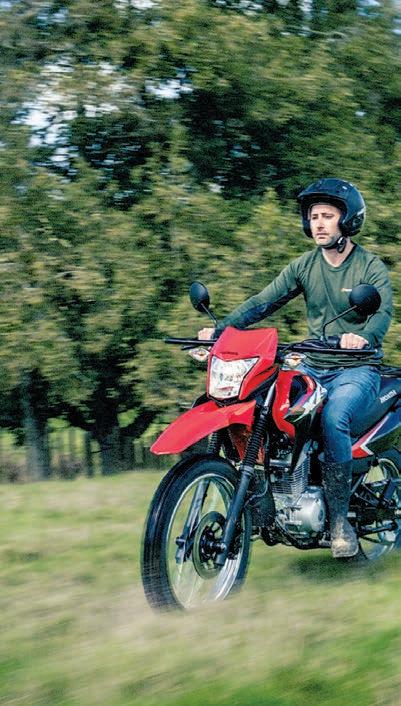




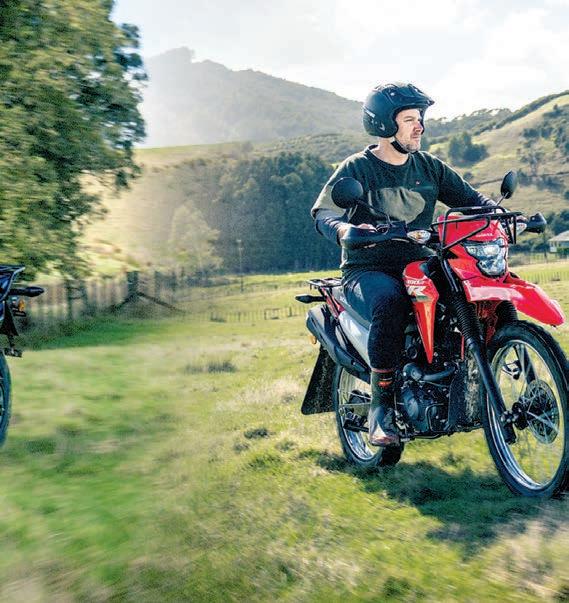



















Philip Duncan NEWS Weather
